The Peruvian Coast
Peru, Ancient Land of Mysteries
Peru is known for many great things, including the ruins of ancient civilizations, stunning nature and an unparalleled level of cuisine. We toured Lima and explored the Peruvian coast visiting numerous towns by bus including Pisco, Paracas, Ica and Huacachina and Nasca. During our past two trips along the Peruvian Coast, we were able to have authentic and local experiences through our own exploration and the eyes of multiple friends we met along the way.
Lima, The Capital of Peru
Lima is an expansive coastal city with stunning ocean views, Spanish colonial architecture, ancient ruins, catacombs, important cultural sights and irresistible cuisine, especially the seafood. In fact, we credit this trip with converting us from vegetarians into pescatarians. Lima is often an entry point to the country and jumping off point for other Peruvian destinations.
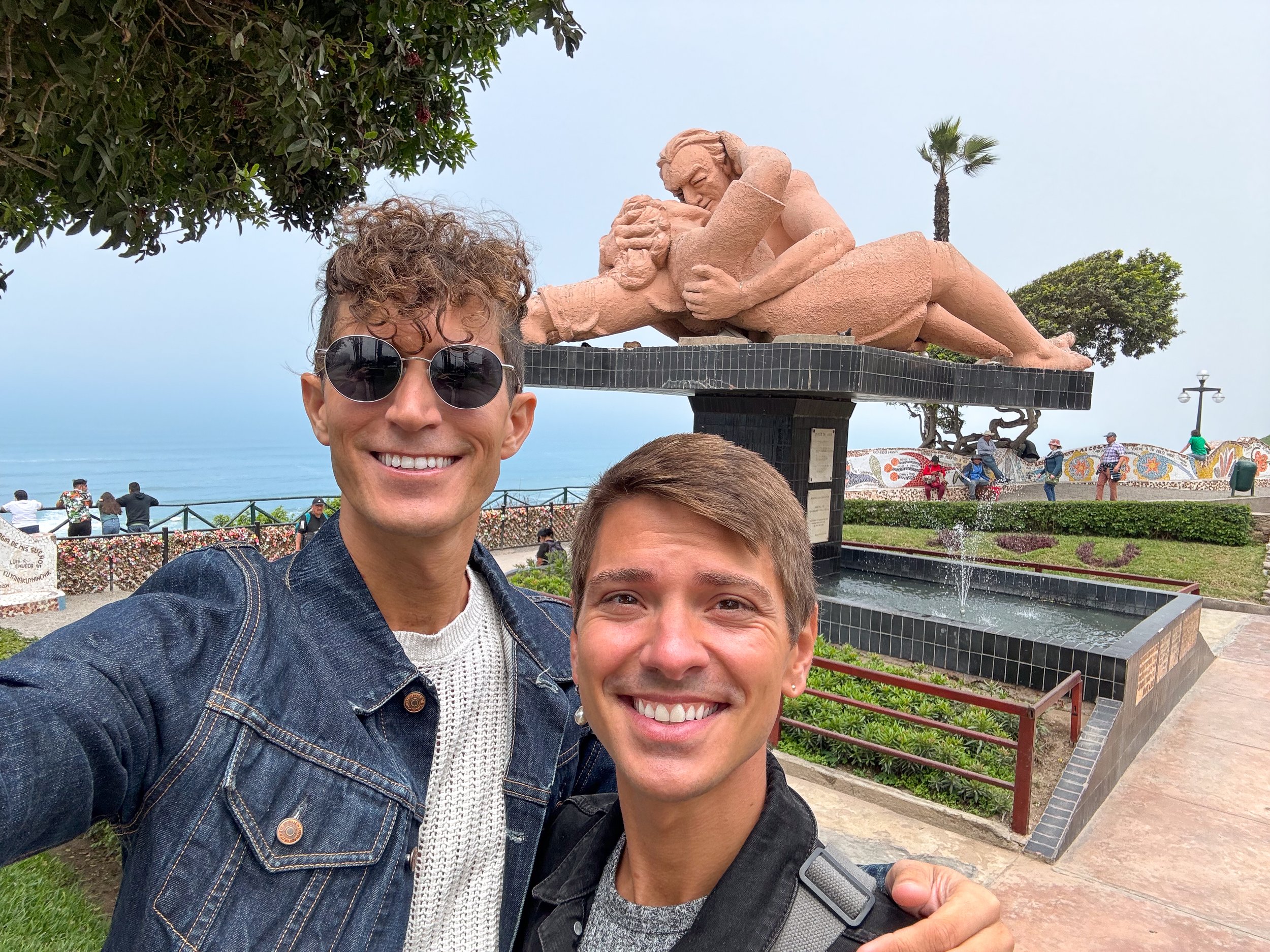
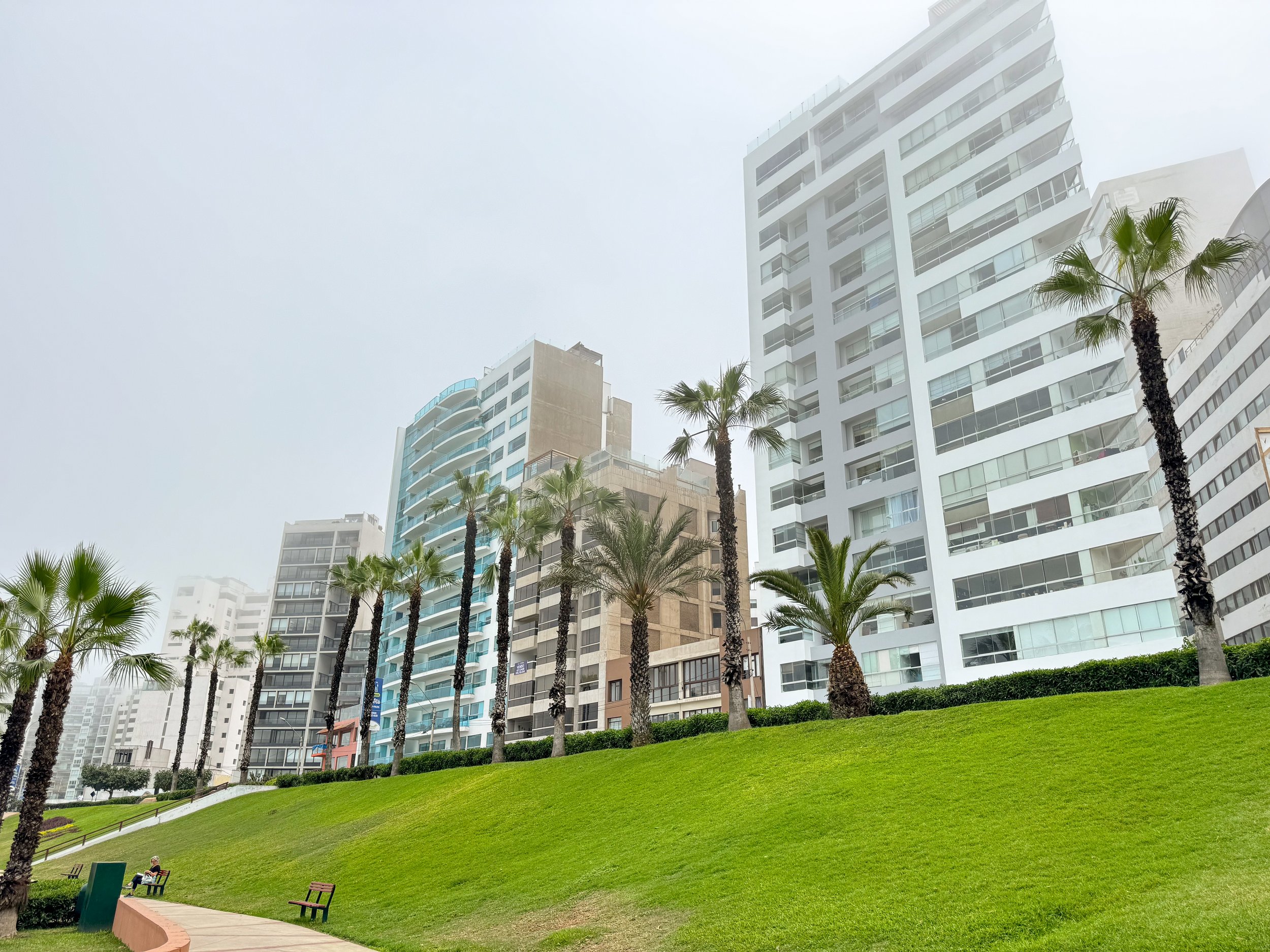
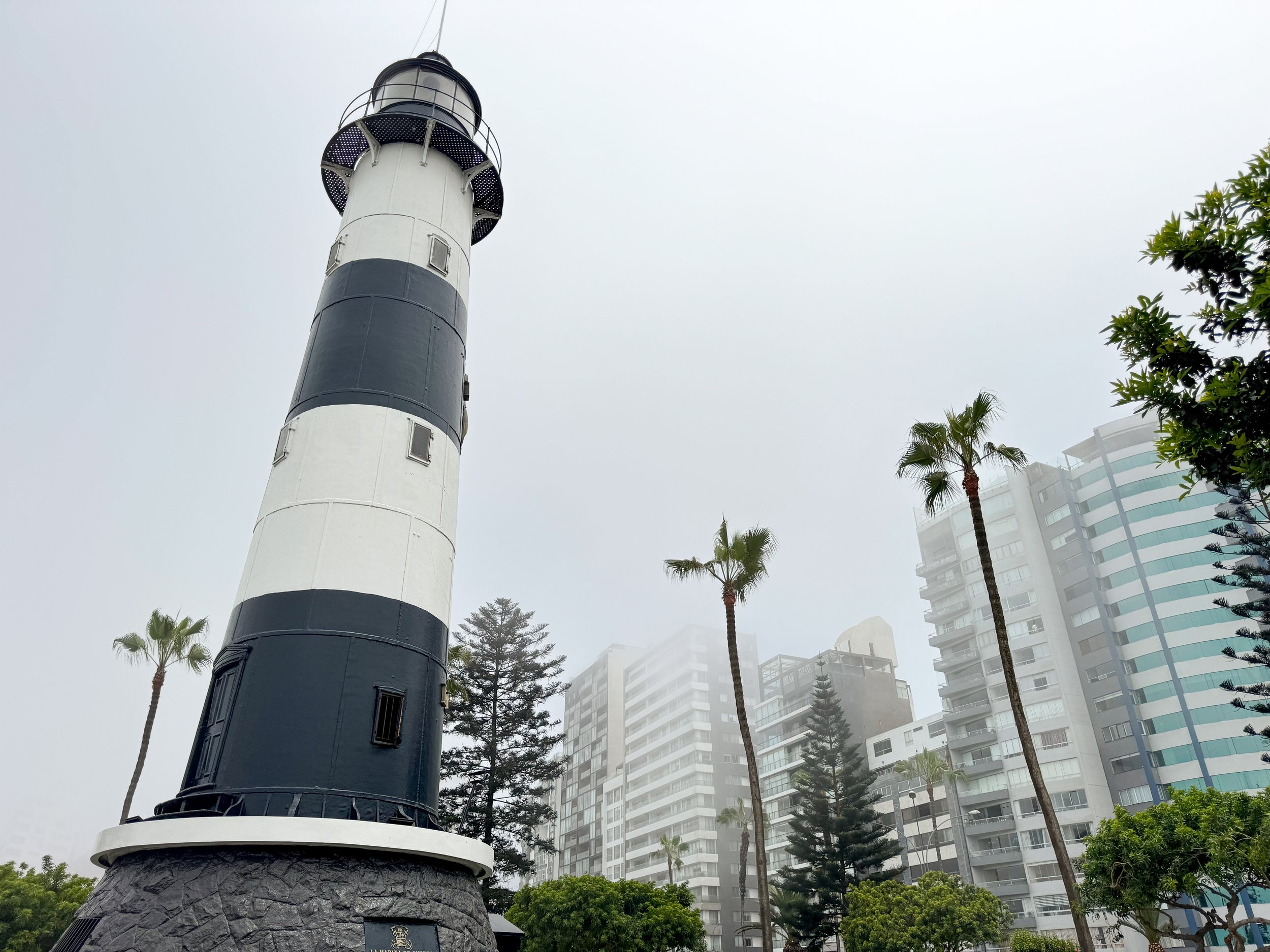
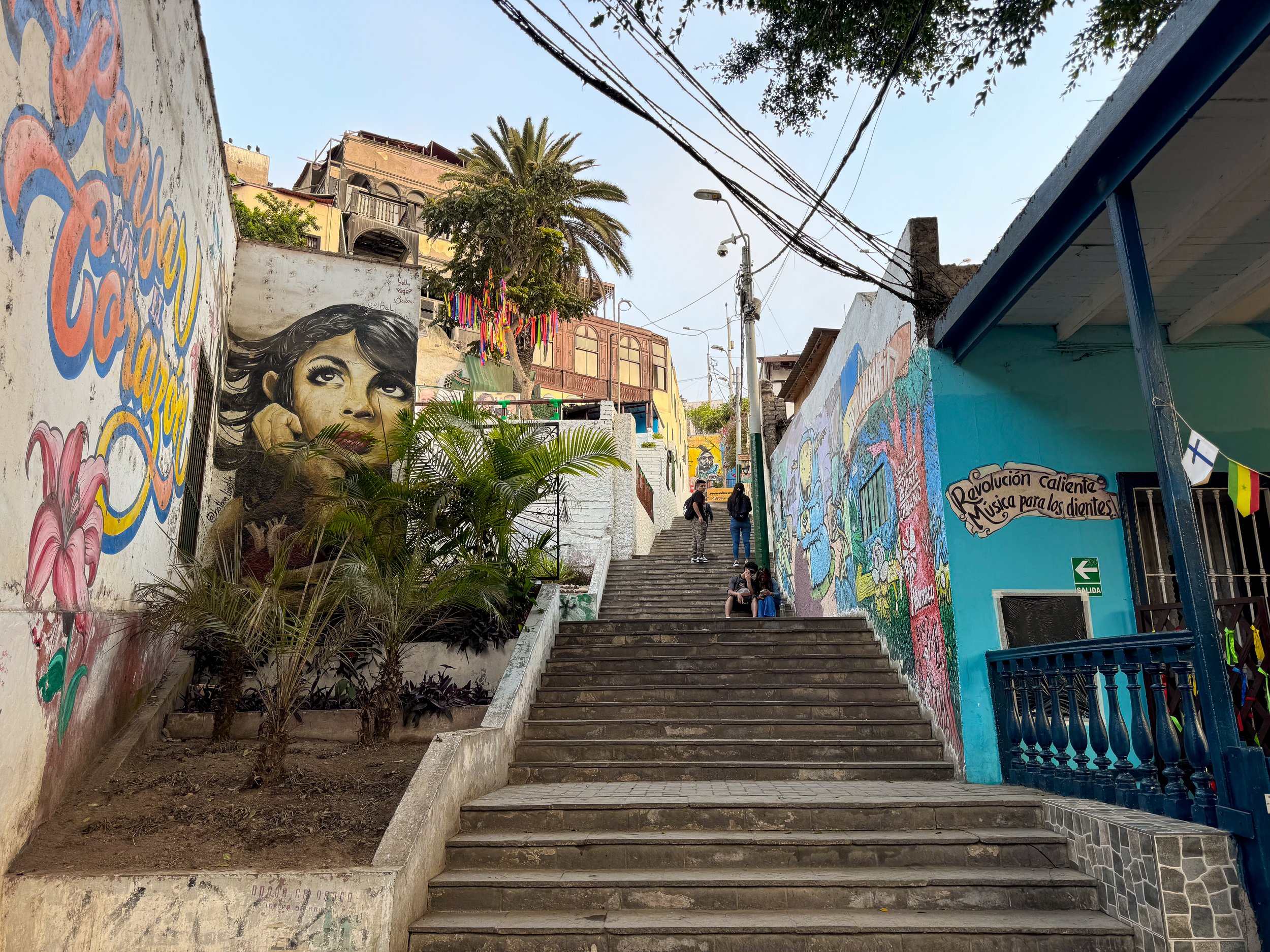
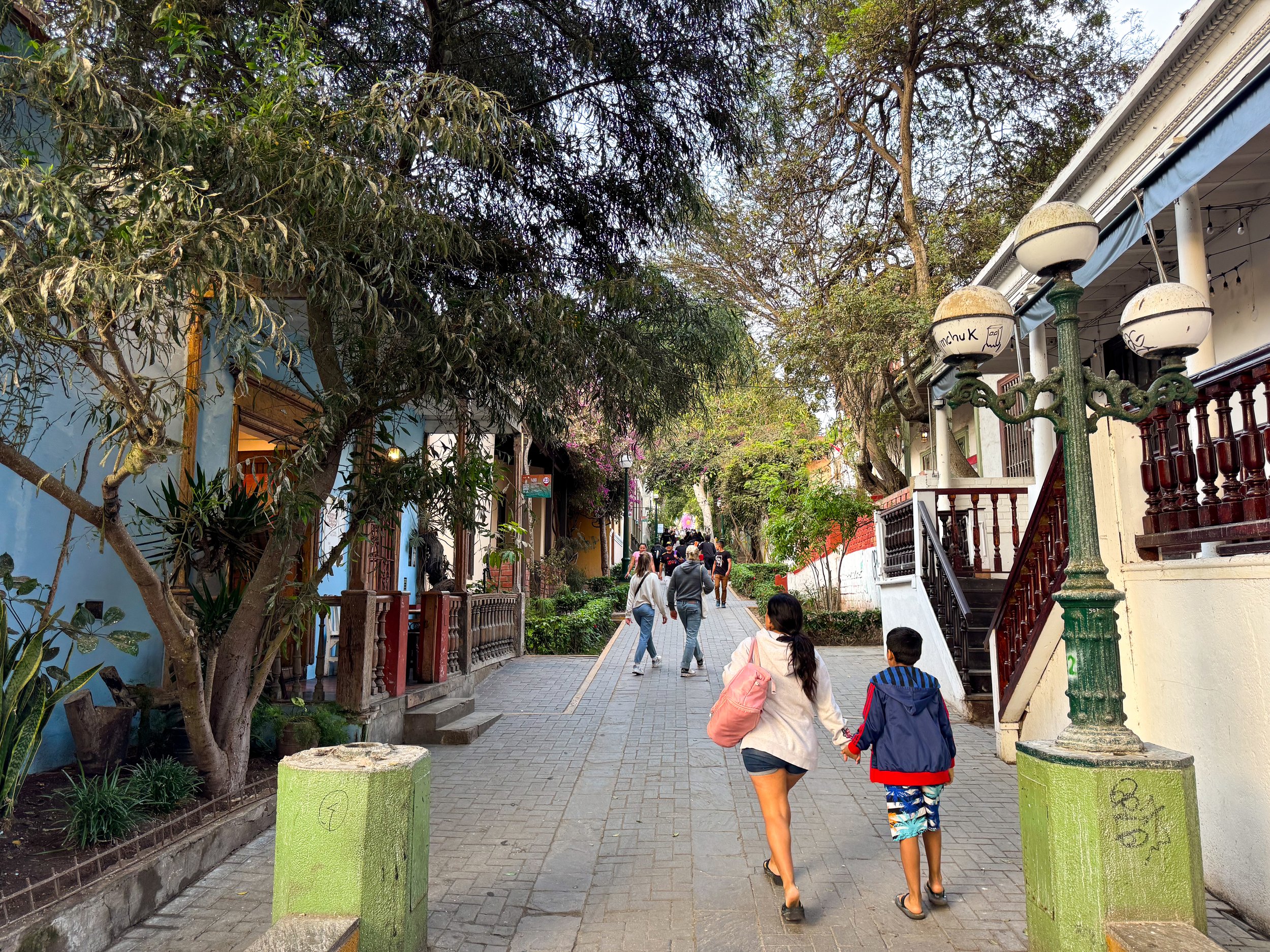
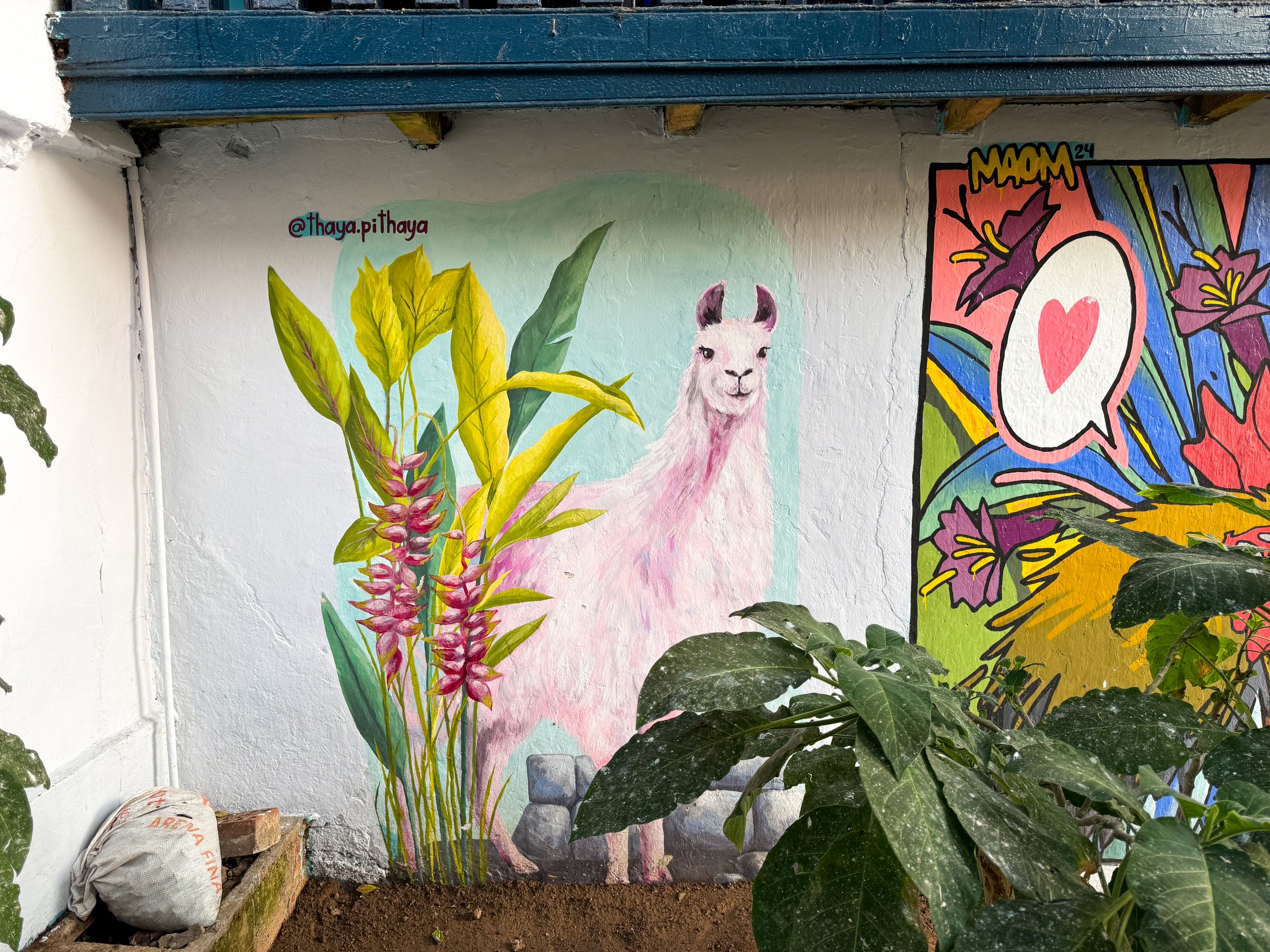
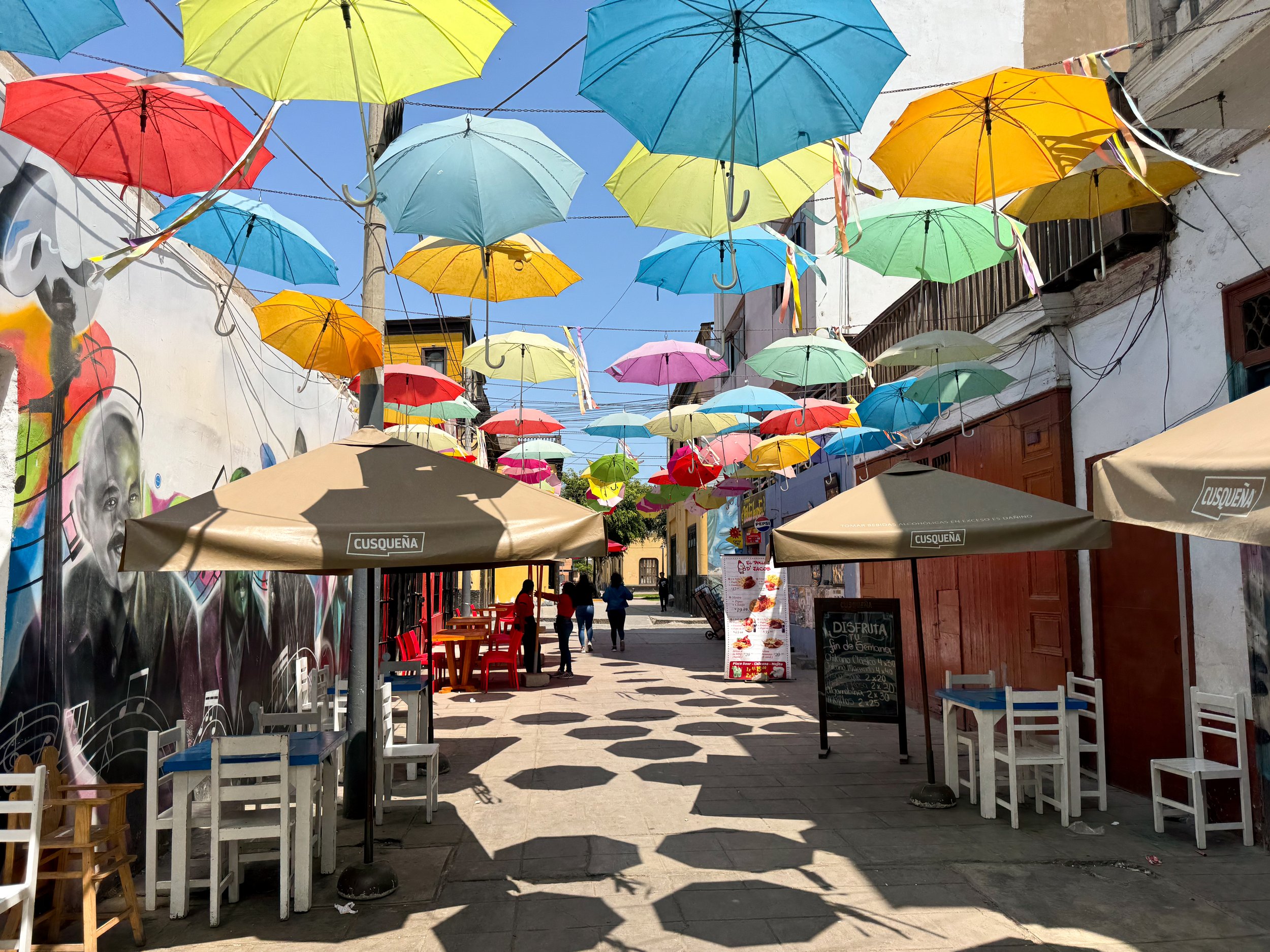


Our Favorite Neighborhoods
Miraflores, which translates to “Look at the Flowers” is a green neighborhood in the heart of the city with lush parks and coastal visitas. It’s an elevated area with modern skyscrapers, beautiful residences and many restaurants.
Locramar. An outdoor shopping mall in Miraflores with stores, restaurants and bars built into a cliff overlooking the Pacific Ocean.
Cat Park. A tiny park, home to at least 100 kittens and cats cared for by the city. Come here to cuddle and play with them as they wander the park.
Love Park. A park along the seaside cliff in Miraflores with a large terracotta sculpture of two lovers lying and embracing, wavy colorfully tiled walls and a fence with heart shaped locks.
Barranco, another coastal neighborhood with an old world feel, local vibes and welcoming atmosphere. The neighborhood is walkable making it easy to spend time exploring by foot. We walked along narrow tree lined streets, through flowering parks, past historic buildings and admired the creative street art. There are plenty of bars, restaurants and coffee shops making it a lovely place to stay or visit.
Parque Federico Villarreal. A park with an abandoned cathedral and pedestrian walkway leading from the top of the neighborhood to a lookout over the ocean past several restaurants, bars, cafes, art galleries and shops. The lookout is a beautiful spot to watch the sunset.
Puente de los Suspiros. A wooden pedestrian bridge with views of the walkway below.
Parque Municipal de Barranco. A historic plaza in the heart of the neighborhood with colonial architecture including a yellow neoclassical cathedral, a pink library and reflecting pool with a Greek style fountain.
Callao, a neighborhood known locally for its fishing port and seafood restaurants. We explored the streets and sights around the central plaza where stopped to eat ceviche and drink pisco sours. The area outside of the central plaza is considered unsafe to visit.

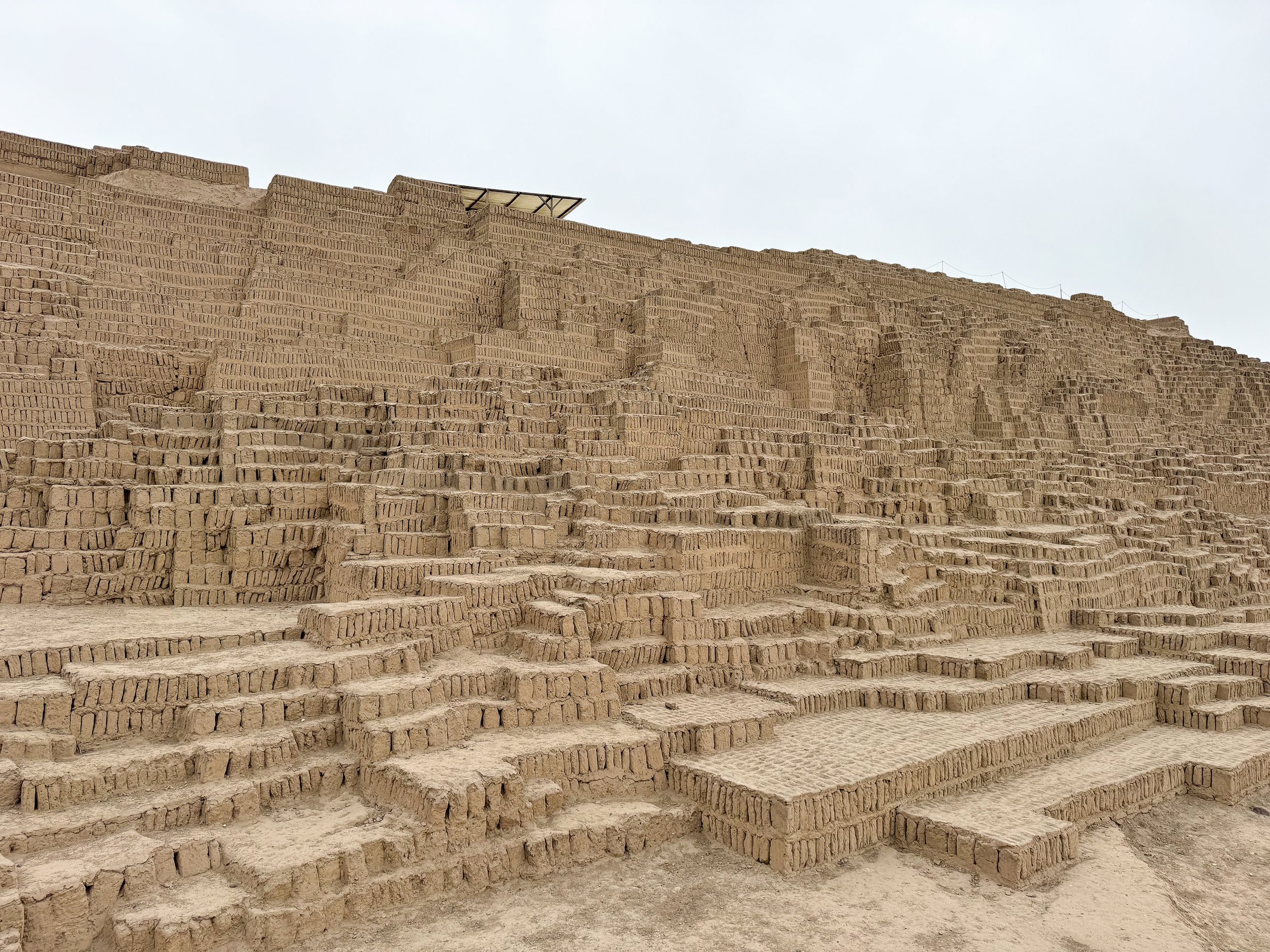
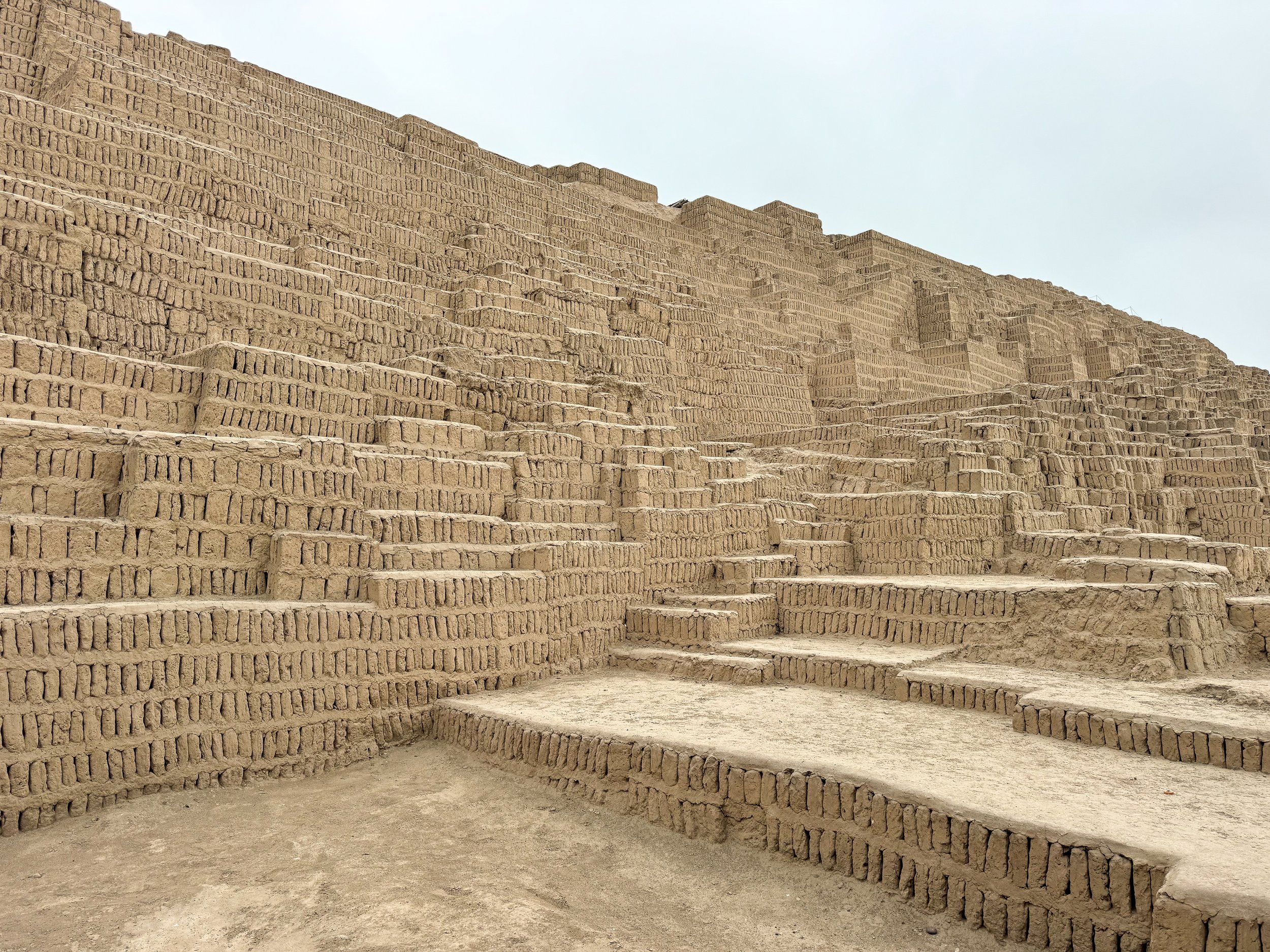
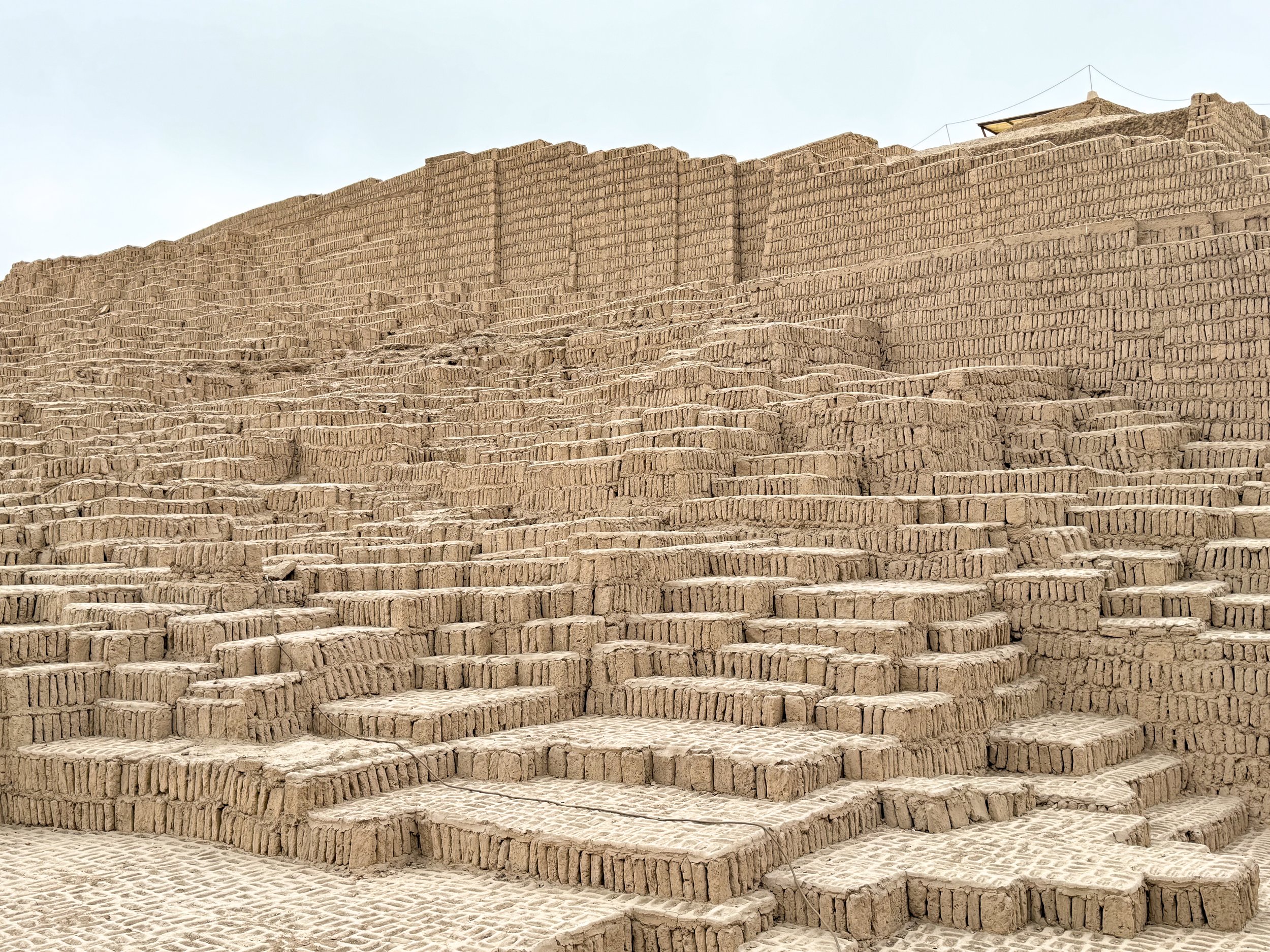
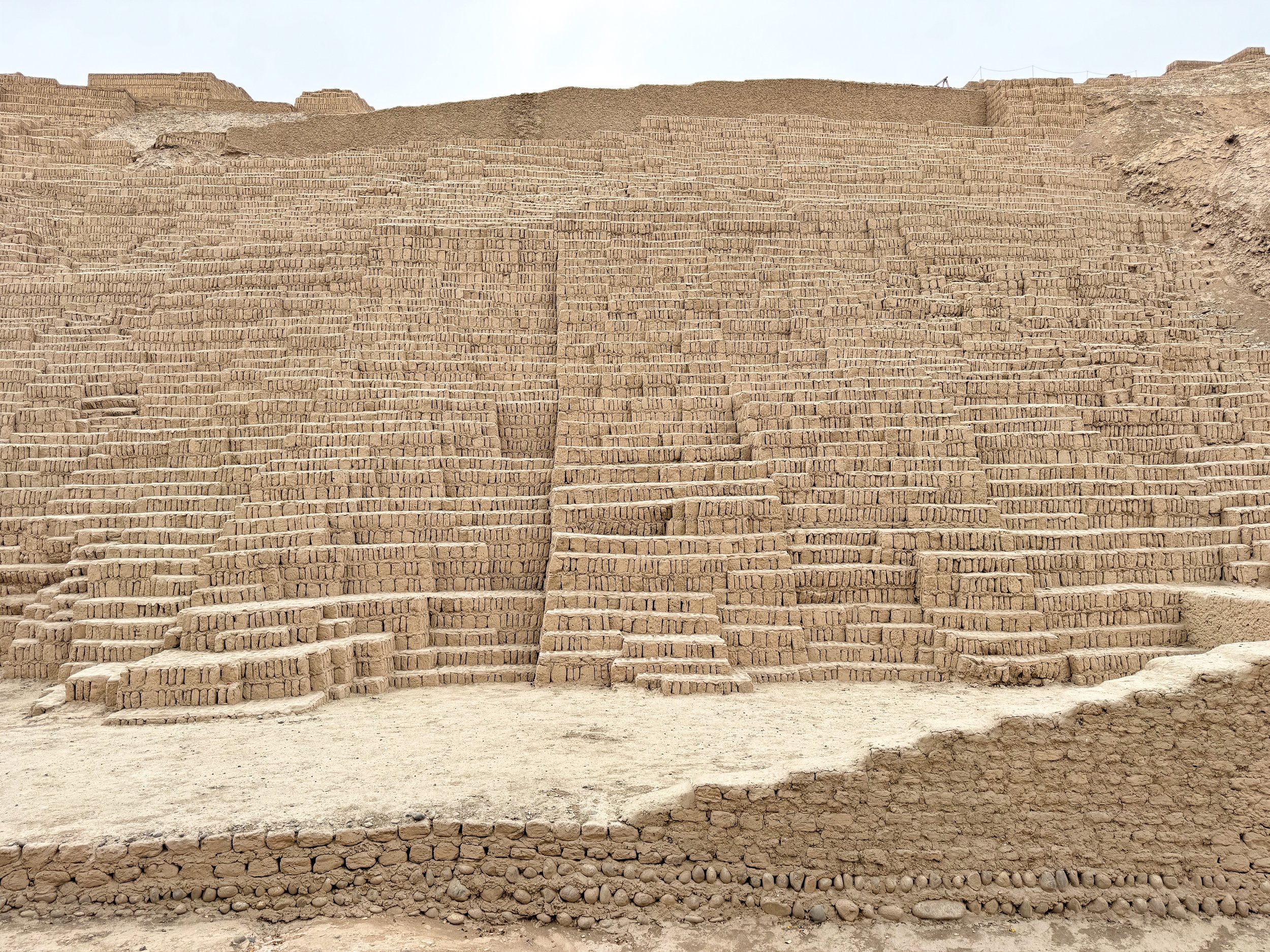
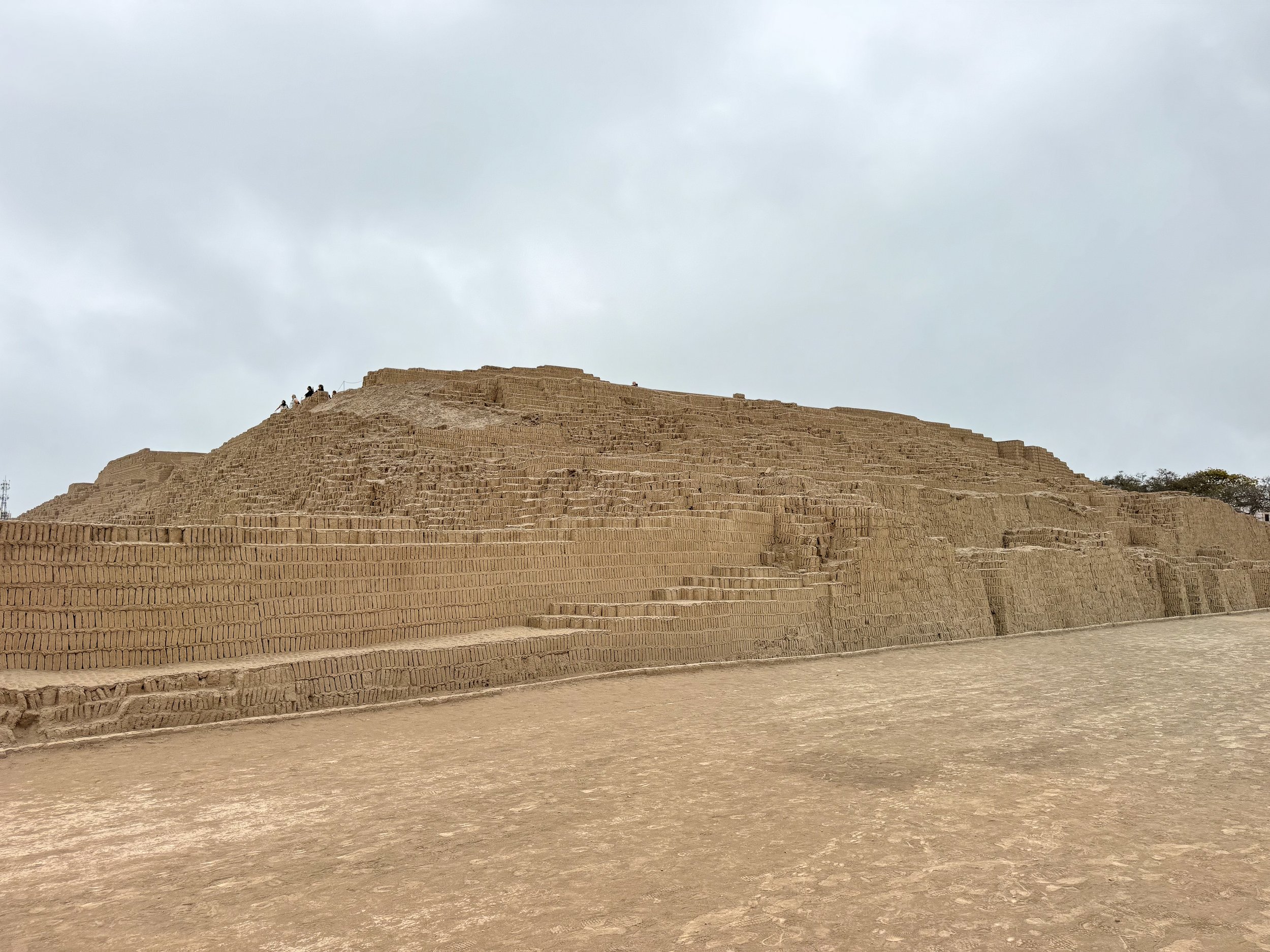
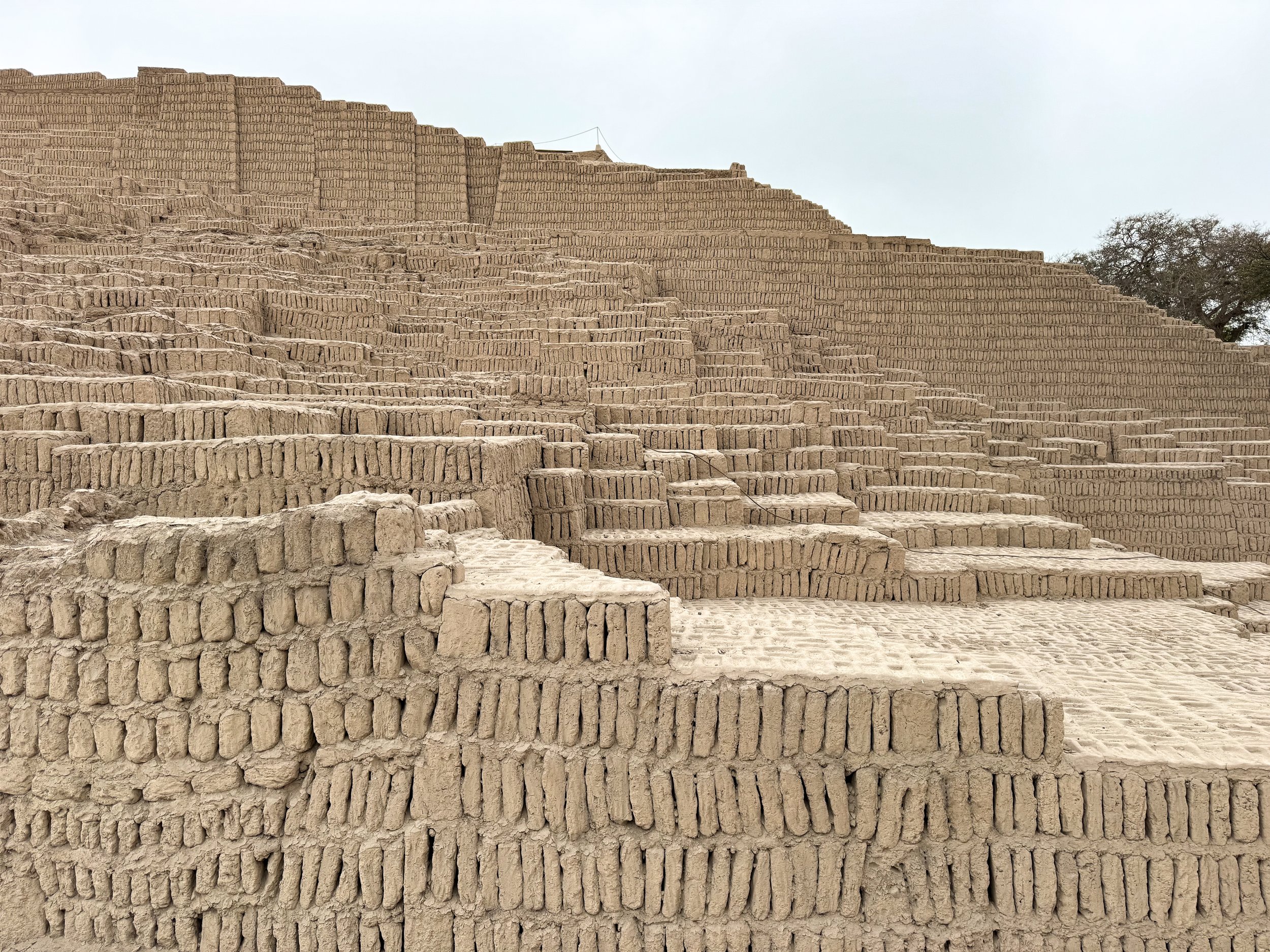
Sights & Museums
Huaca Pucllana Site Museum. An expansive adobe brick ruin that pre-dates the Incas. The grounds include the remains of a pyramid and many smaller structures. The pyramid is believe to have been used for ceremonial and sacrificial purposes. The ruins of other structures are thought to have been used for agricultural storage and administrative purposes for overseeing the civilization’s irrigation practices.
The sight is located in the middle of Lima, surrounded by modern civilization offering a unique contrast. It can only be toured by guide, available from the ticket office. With our guides, we spent over an hour walking its pathways, courtyards and on top of the massive structure.
Paragliding. The cliffs of Lima provide the perfect location for paragliding! Having never tried it before, we decided to give it a try. Taking off using on an improvised fan powered parachute, we soared into the air. From above, we overlooked the pacific coast and entirely of Lima, flying between Miraflores and Borranco before landing back at the beach. Our flight lasted about 20 minutes.
The Magic Water Circuit. It sounds extra touristy and it kind of it but it doesn’t make it any less grand. You’ll be treated to a light and water show within the park’s fountains, depicting holograms, images and music telling the story or Peru.
The Catacombs. A UNESCO World Heritage Site, located beneath the Basílica y Convento de San Francisco. The catacombs are lined with the skulls and bones of tens of thousands of humans, all uniquely organized and arranged in an array of terrifying yet beautiful patterns. No photos are allowed to be taken.
Plaza de Armas. The city’s historic center and main plaza. It’s surrounded by stunning government buildings, palaces and cathedrals.
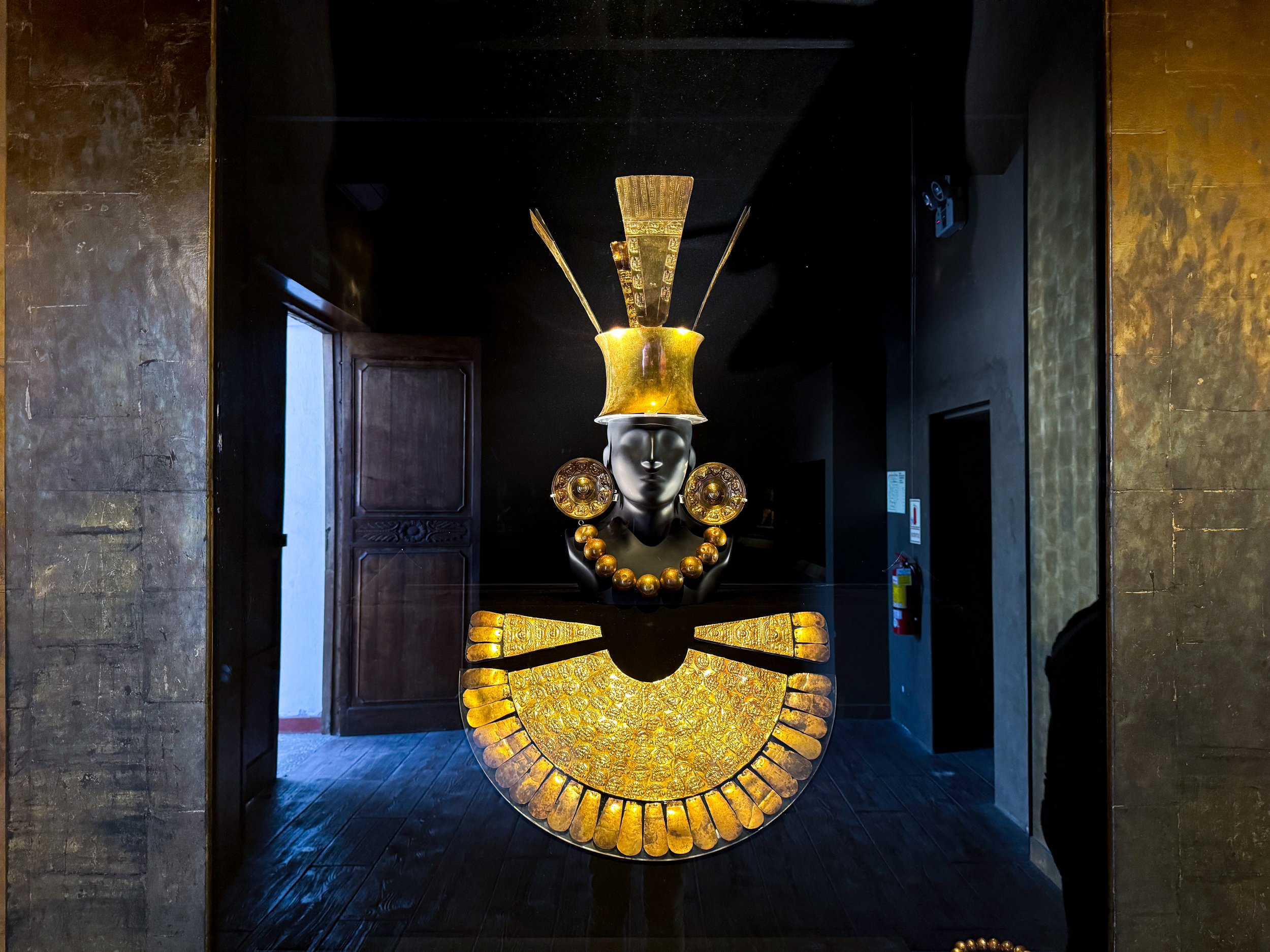
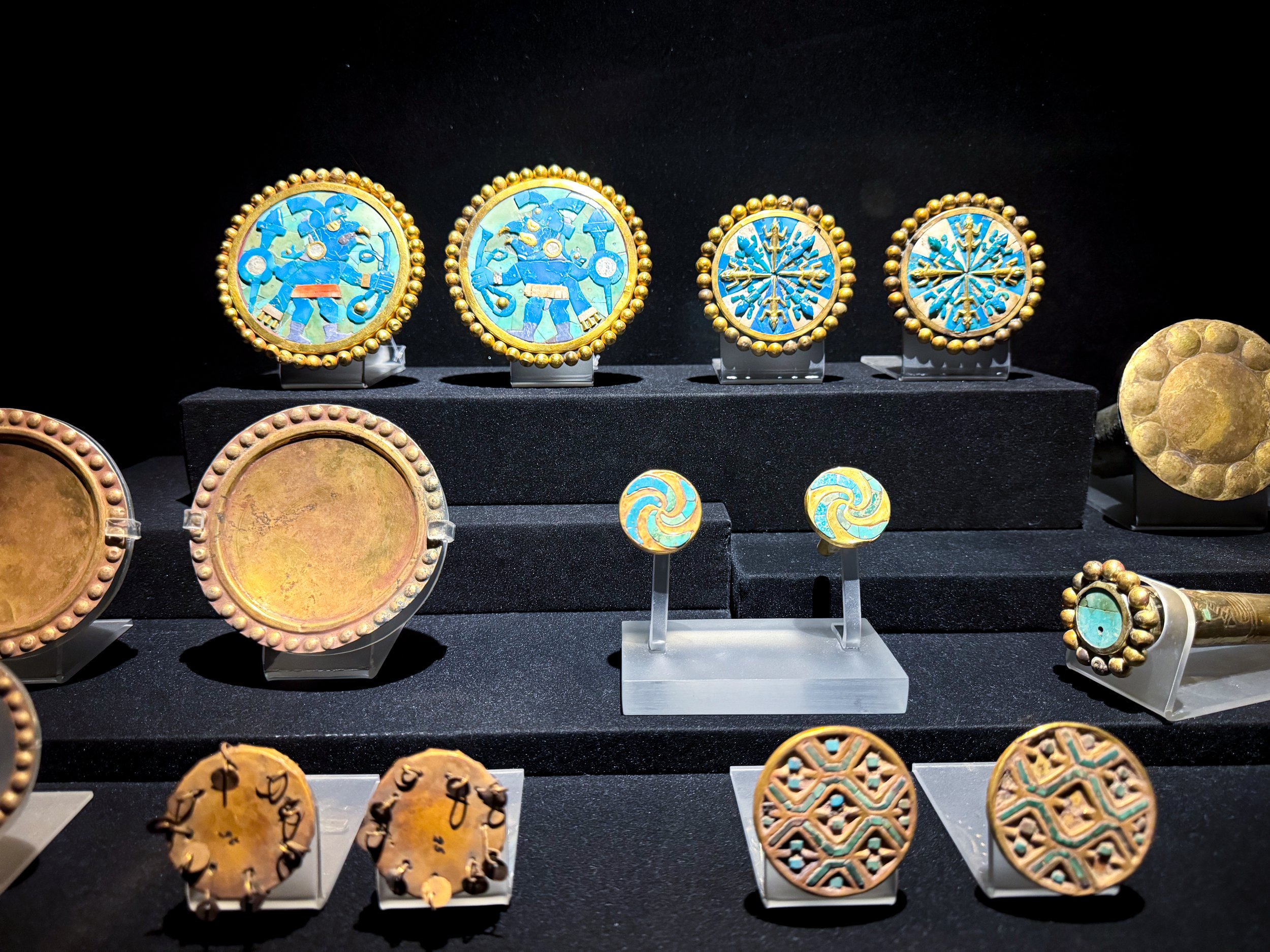
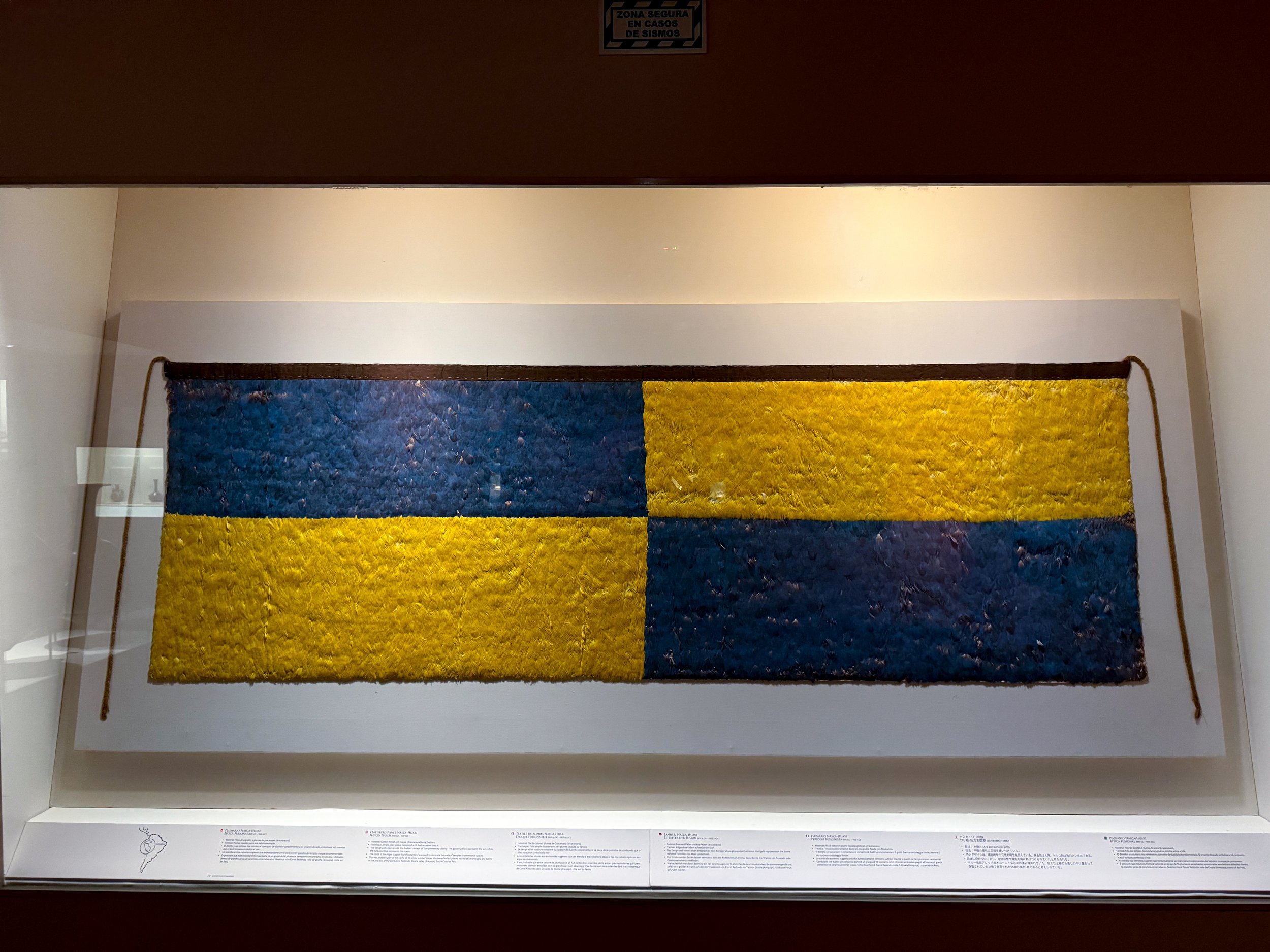
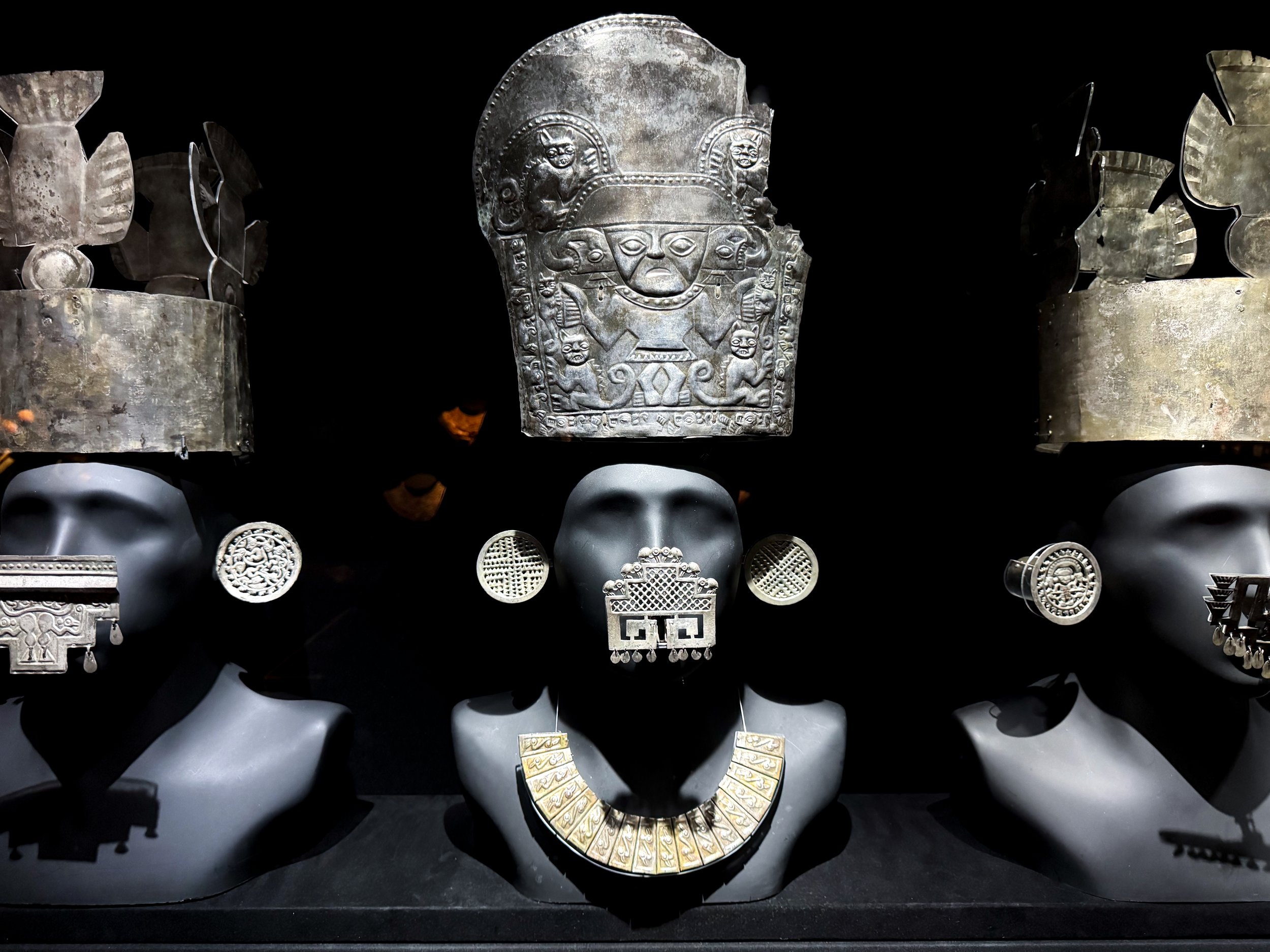
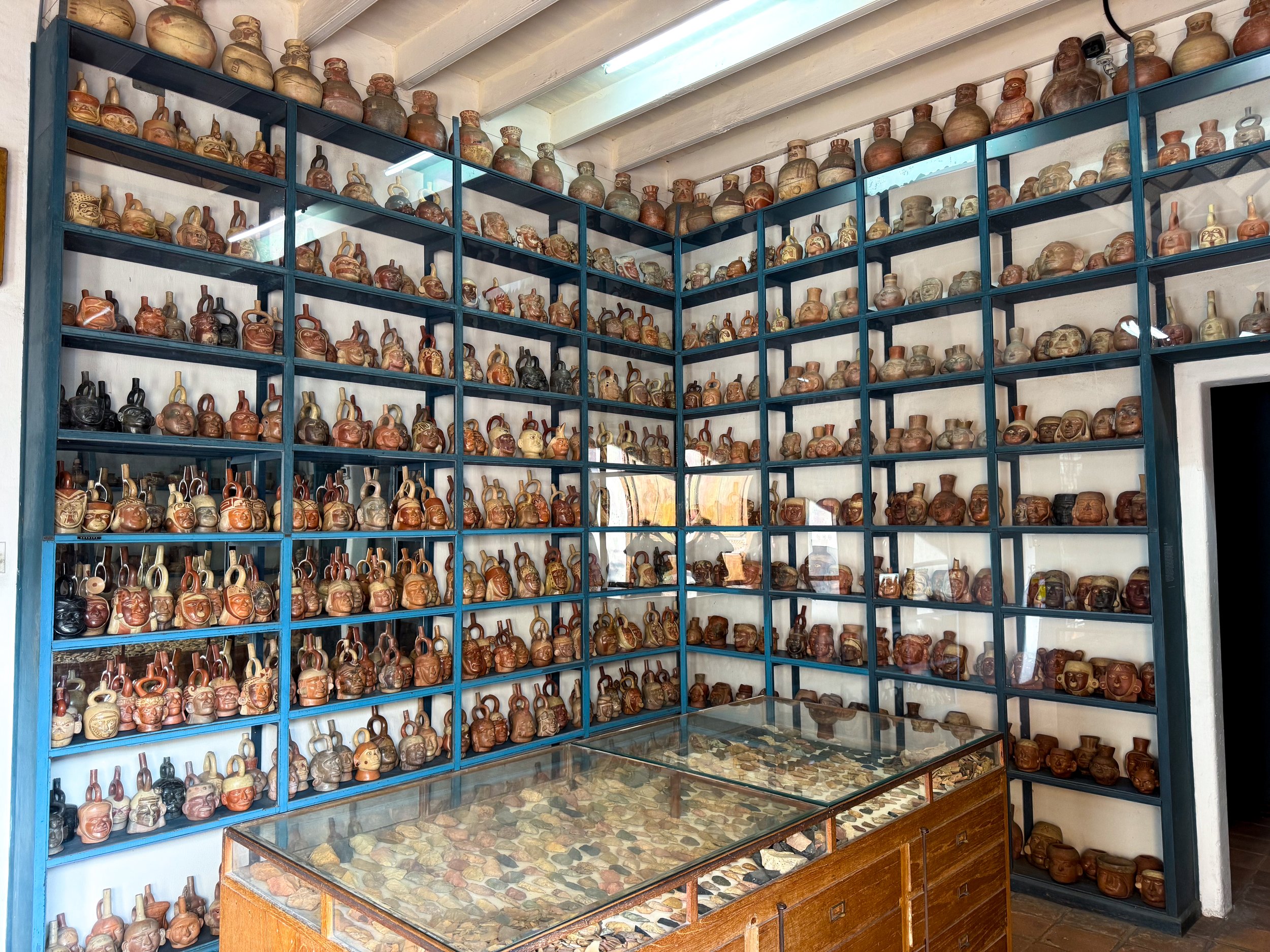
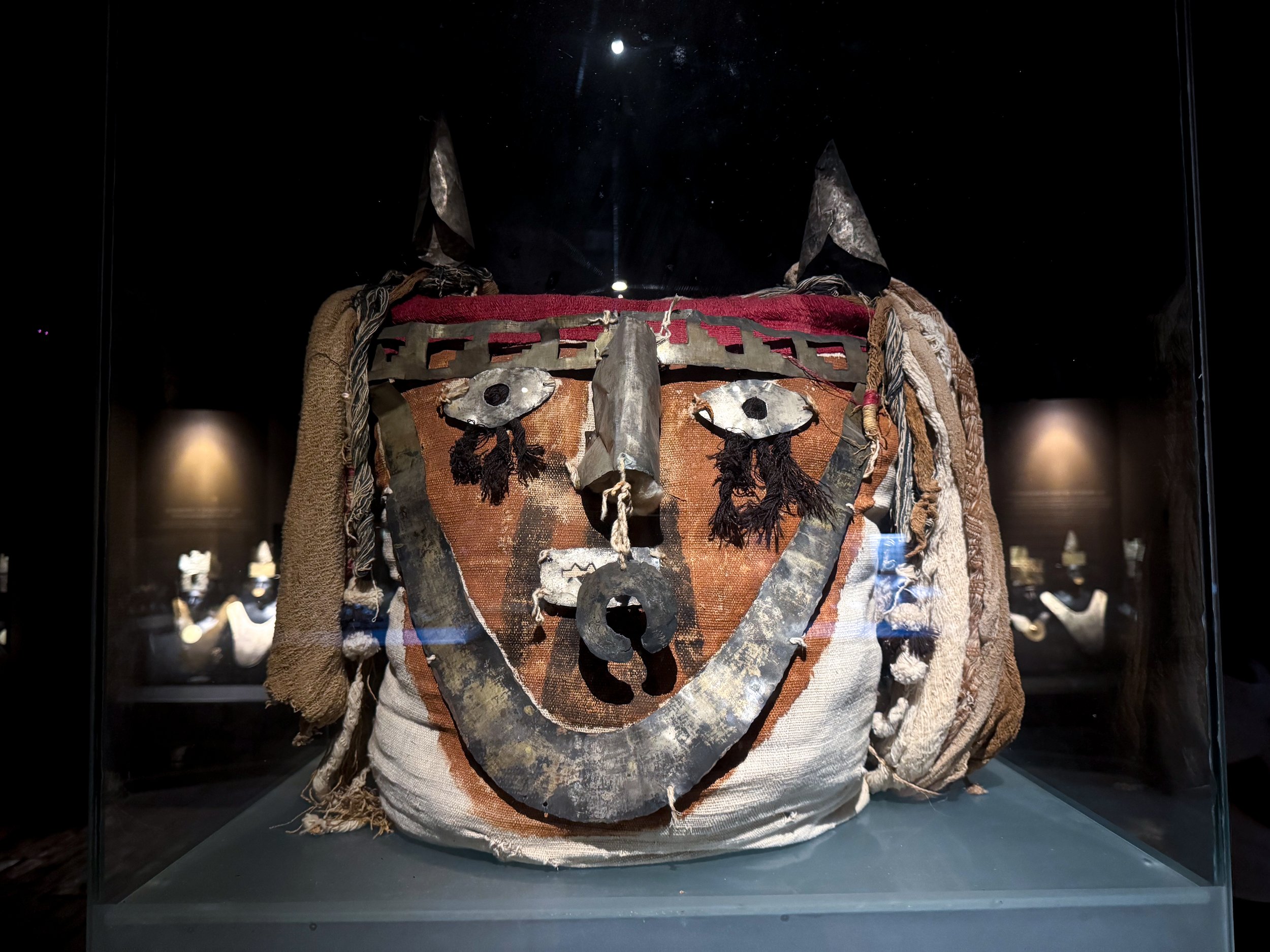
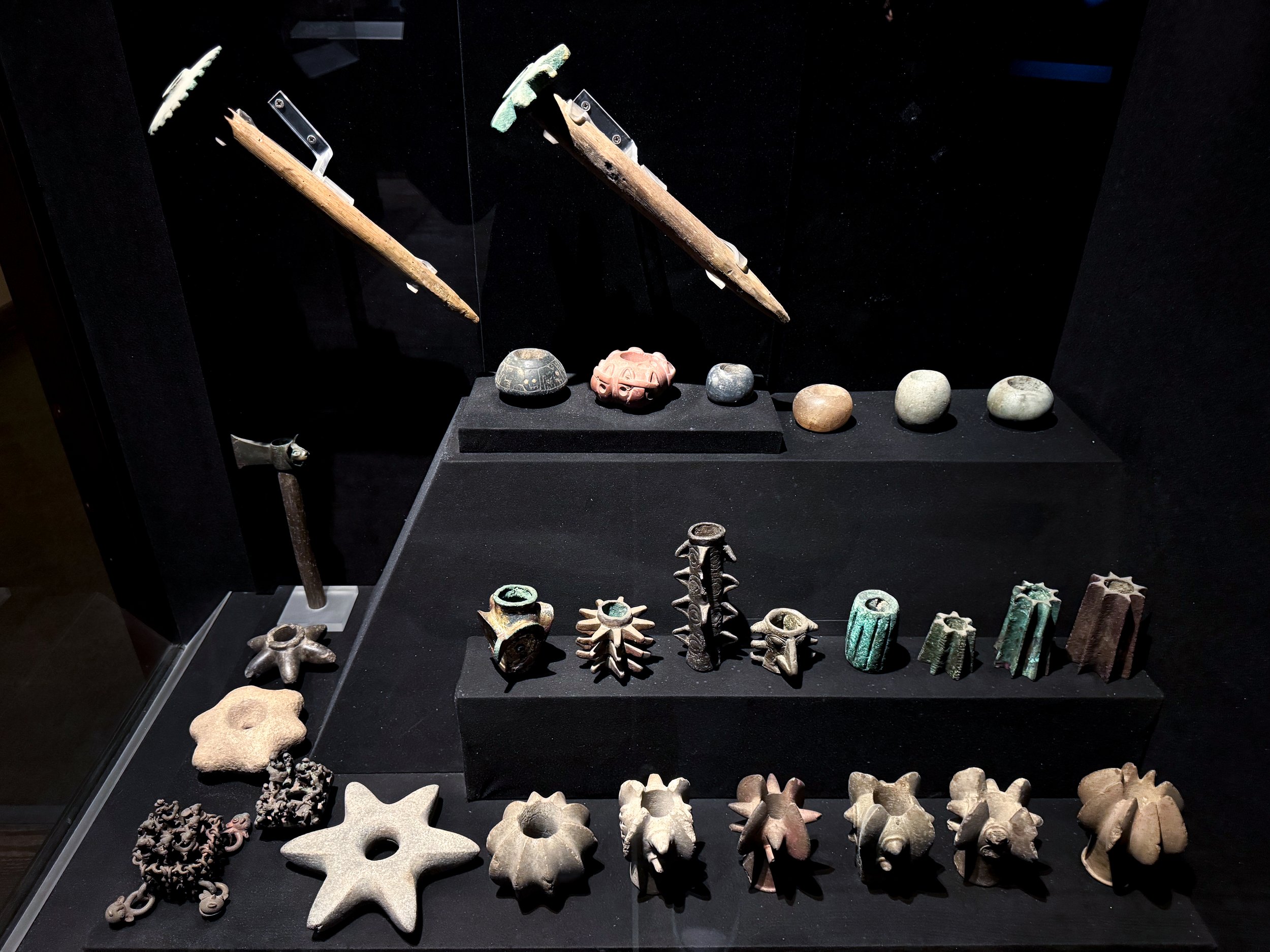
Larco Museum. An exquisite collection of Peruvian ceramics and artifacts dating back thousands of years until the arrival of the Europeans. The museum categorizes the ceramics by period and civilization, going into great detail about their design, manufacturing and cultural significance.
Other exhibits include one with erotic ceramics and visible storage room. In addition to ceramics, some of the most interesting artifacts are textiles used for record keeping, a tunic made from macaw feathers, mummified remains, precious jewelry and the the only complete royal funereally set with a golden mask, breast plate and headpiece.
Museo Oro del Perú y Armas del Mundo. A museum with gold and silver artifacts from past Peruvian civilization including jewelry, clothing, mugs, funeral offerings and carved stone weaponry. Some of the more fascinating artifacts are mummified remains, human skulls wearing ancient feathered headdresses, golden wall panels from the ancient city and gold plated blankets used by royals.
Fortaleza del Real Felipe. A historic stone military fortress with a pentagon shaped structure, round guard towers, walls lined with hundreds of cannons and a central courtyard still used by the military today. The two guard towers are the most impressive to visit. We explored their labyrinth of rounded tunnels, ramps and staircases leading to rooms, chambers and lookouts.
Where to Eat & Drink
Amankaya - Peruvian Food. A delectable seafood restaurant built within a house in Miramar neighborhood of Lima. We came here for the fresh ceviche, buttery seafood rice, flamed mixed seafood scallops and chilcano cocktails.
Coffeebrix. A cute cafe for artisan coffees, breakfast toasts, egg dishes and croissants.
Curayacu Tiki Bar - Barranco. Known as Peru’s first Tiki Bar, the mixologists at this hidden gem make inventive tiki drinks and the classics with Peruvian Rum and a theatrical performance sometimes including elaborate presentations, torched garnishing or a seafaring story. The bar is located in the basement in the Barranco neighborhood with tiki decor, a tropical ambience and one of a kind mugs.
En Su Punto. A seafood restaurant on a colorful street in Callao covered with umbrellas and banderas. We came here for their lunch specials and ordered the fried seafood chicheron and ceviche for 25 Soles and 2 Pisco sours for 25 Sols.
Getting Around Lima
By Uber. Getting to and from the airport or longer distances within the city is easiest by Uber.
On Foot. The neighborhoods of Borranco and Miraflores are very walkable. We explore both on foot, even walking between them.
Getting Around Peru
From Lima, it’s easy to get around the country by bus. During our past two trips to Peru, we took Perubus & Peru Hop.
Perubus. During our first trip to Peru, we used Perubus to travel between Lima, Pisco and Ica. Prices are extremely affordable, costing less than $10 for tickets between destinations with bus terminals in all three cities.
Peru Hop. The best way to get around Peru is by Peru Hop, a hop on hop off bus with destinations all across the coast from Lima, Paracas, Huacachina and Nazca into the Andes to Arequipa, Cusco and Puno (Lake Titicaca) then onward to Copacabana and La Paz, Bolivia. It is by far the best way to see Peru, allowing us to build our own itinerary, stopping at as many destinations along the way for as long as we would like.
Paracas
Paracas is fishing village and backpackers haven along the Pacific coast known for its marine nature reserves, sprawling desert sand dunes and a large geoglyph called the Candelabra.
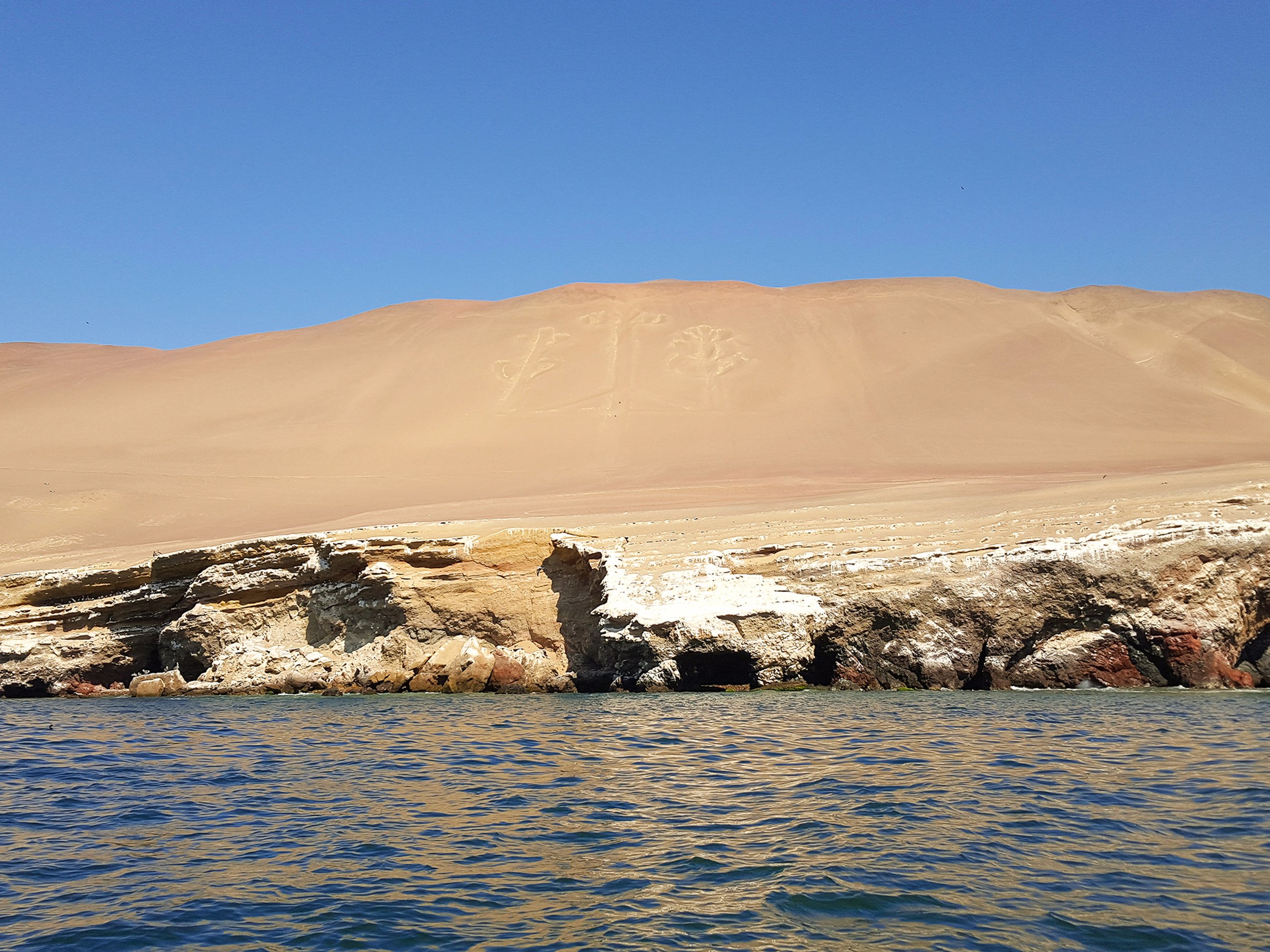
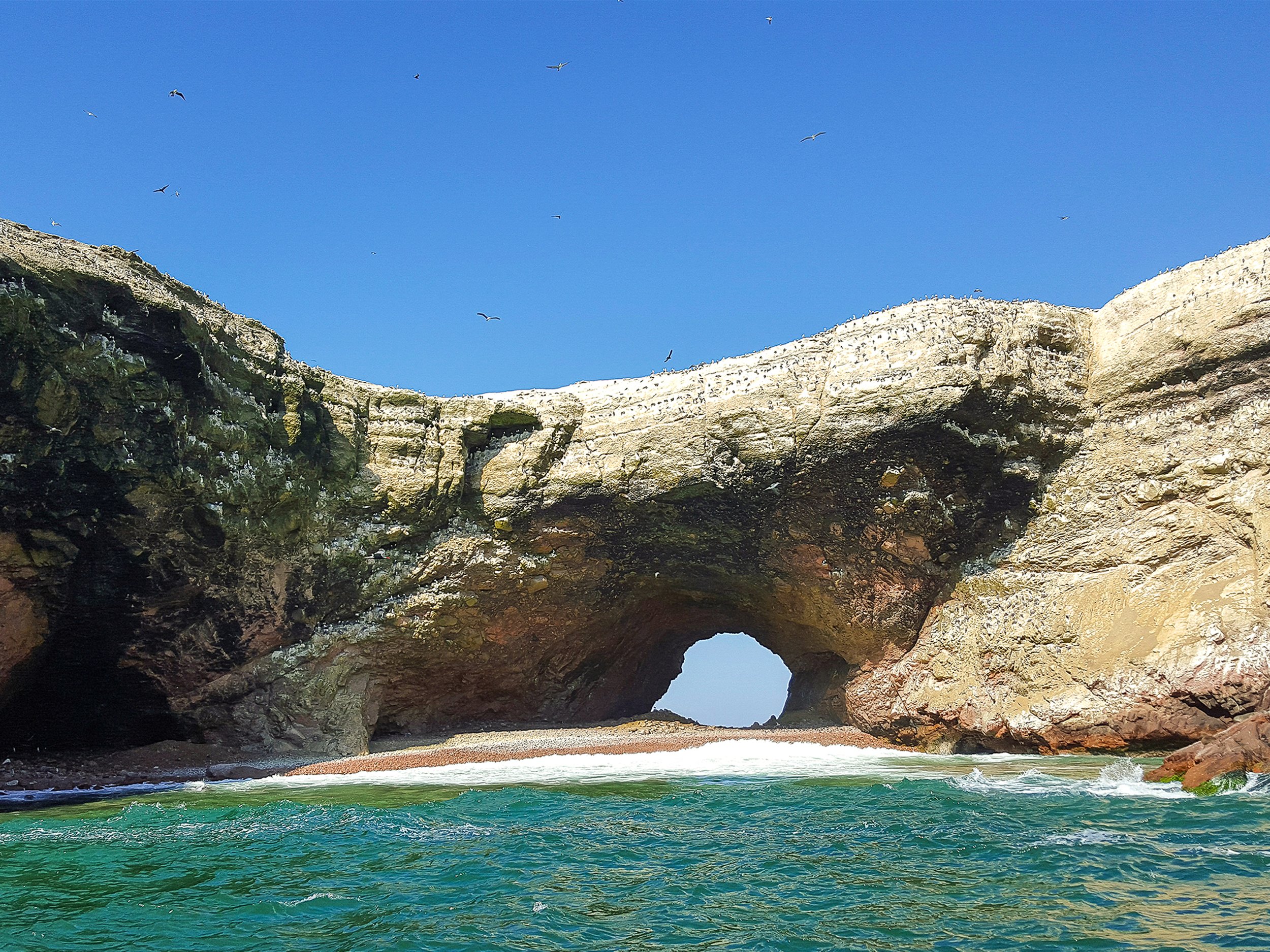
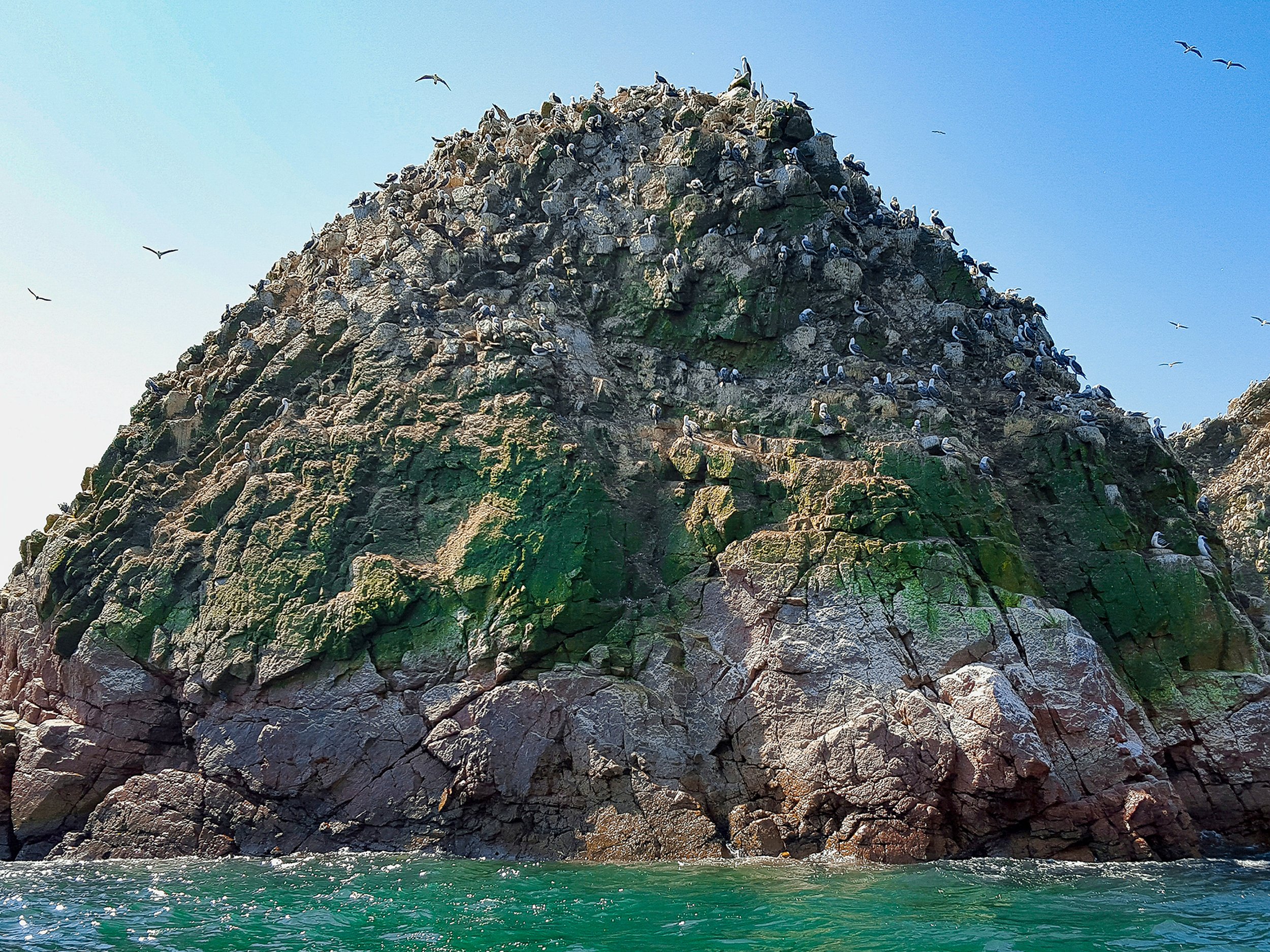
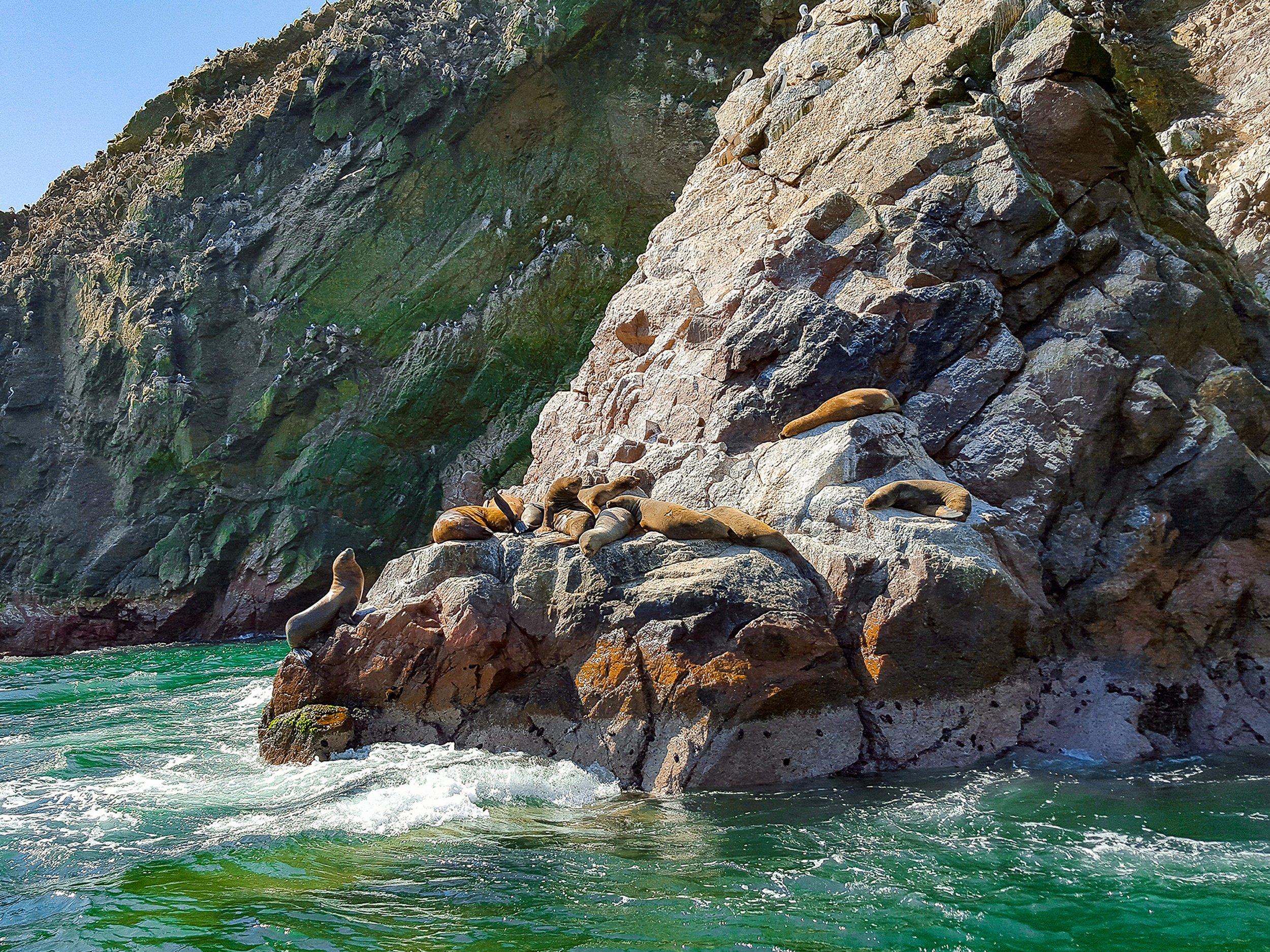
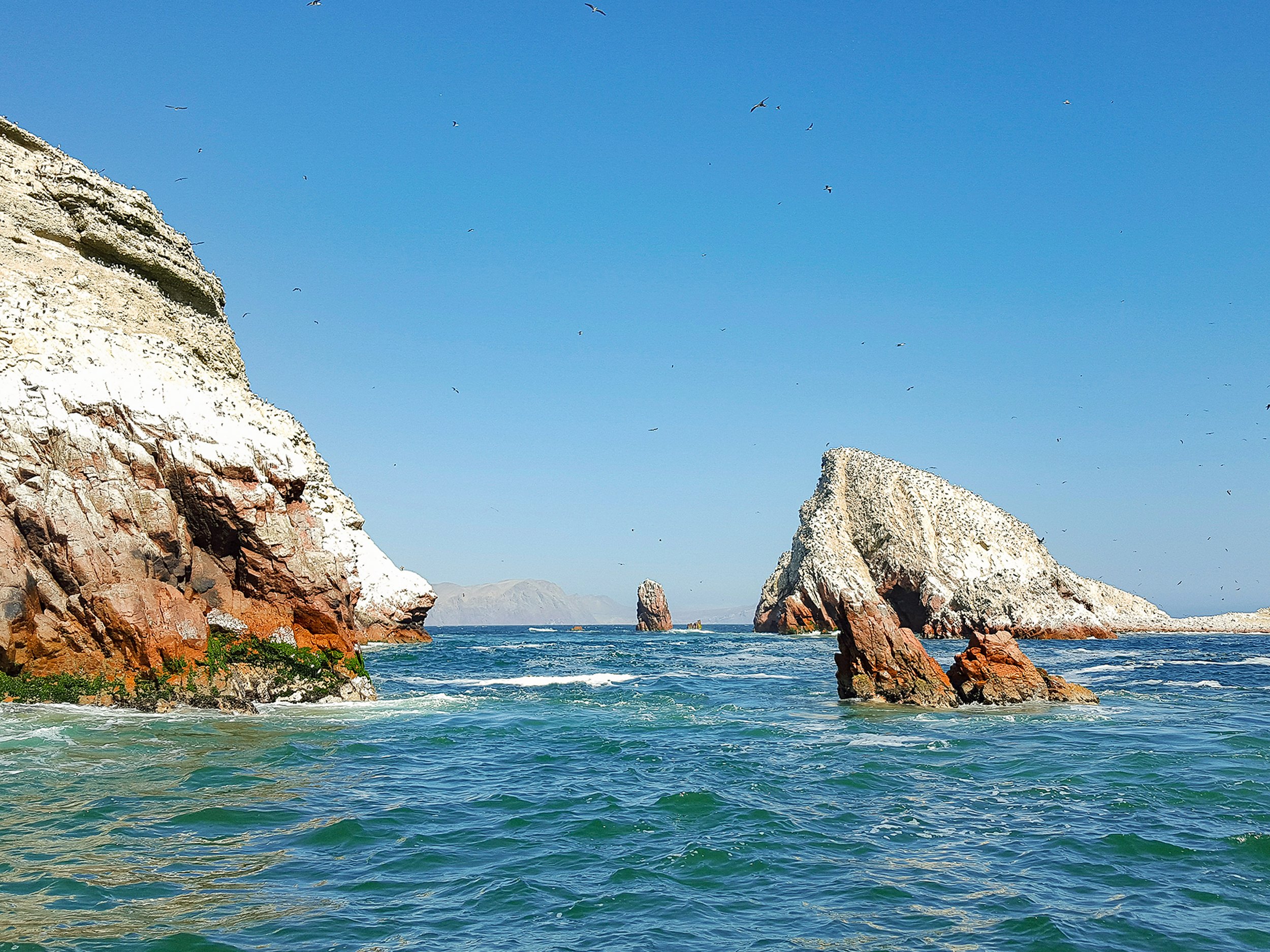
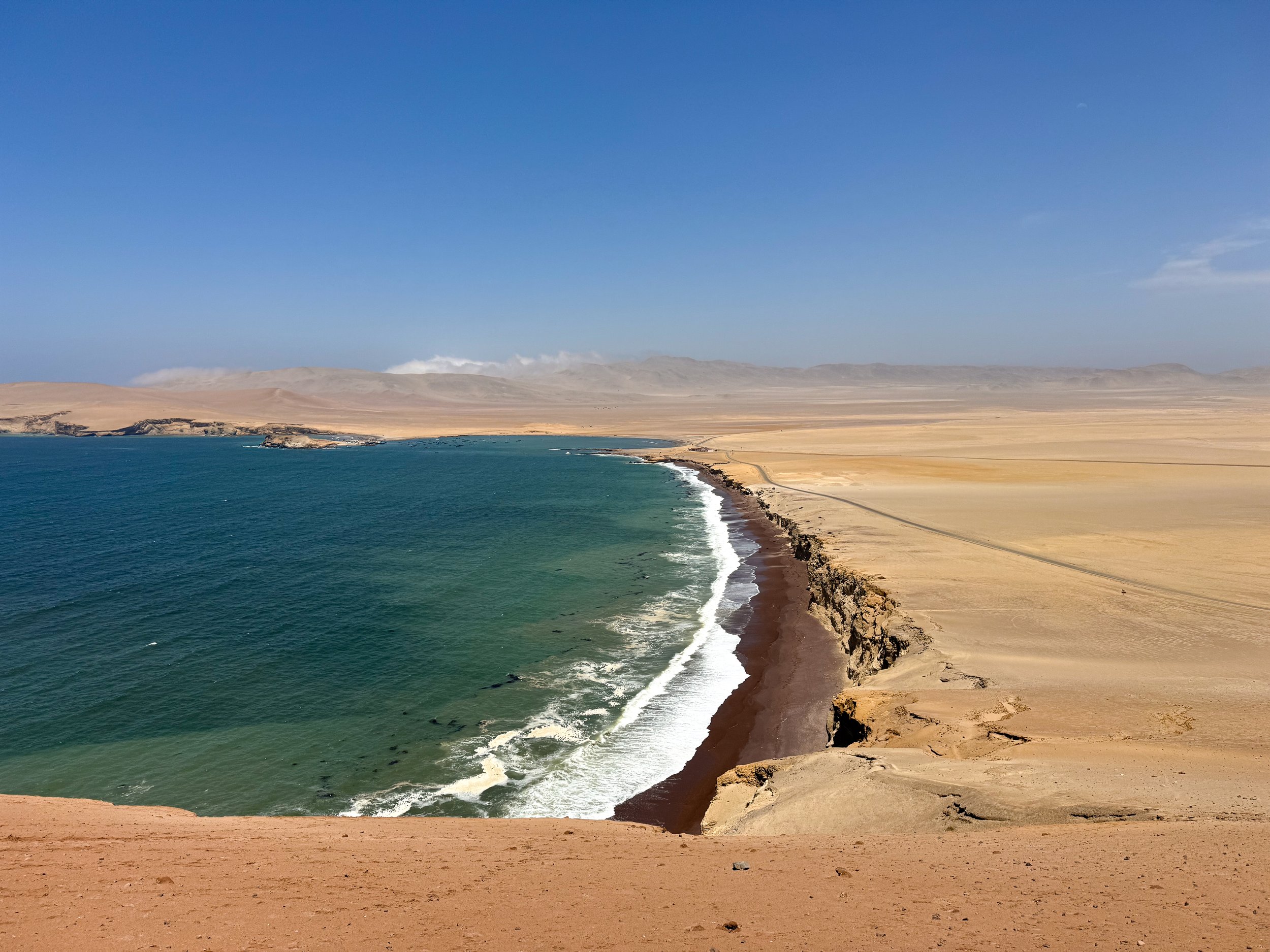
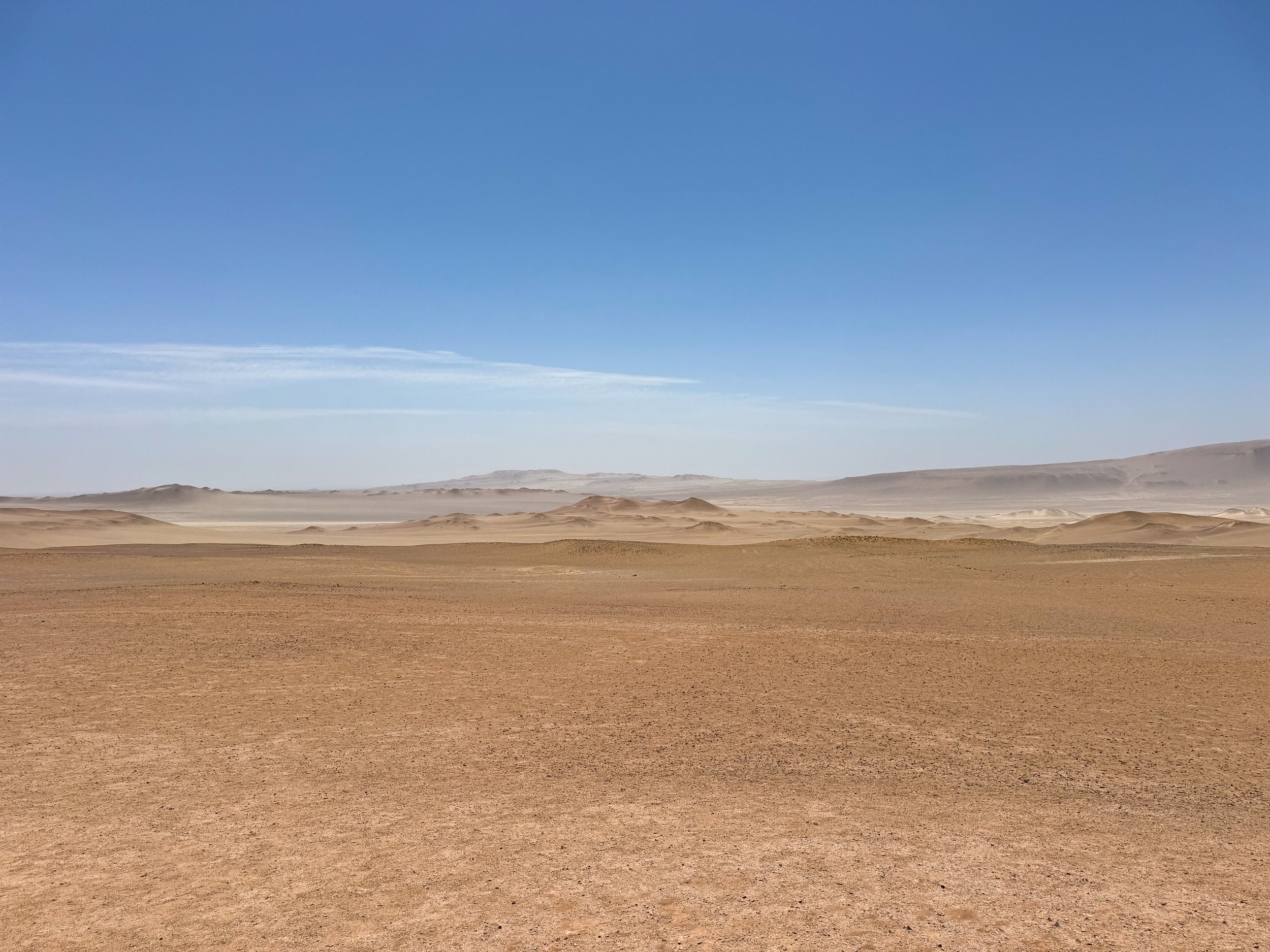
Sights
Paracas Harbor. The harbor is dotted with fishing boats bringing the days catch to the waterfront restaurants lining the beach in town. Its city center is surrounded by hostels, tour companies and more restaurants bars. We at lunch at Restaurant Tipico Bahia, a restaurant on the waterfront serving local Peruvian dishes. We ordered the ceviche, Jallea (mixed fried seafood) and Cusquenas.
Reserva Nacional de Paracas. A national park in Paracas with a vast marine and desert reserve home to species of penguin, seabirds and sea lions. We explored The Ballistas Islands by boat, stopping at multiple locations to see penguins nesting, a large sea lions mating, flocks of birds feeding and a sea arch. Along the way, we passed the Paracas Candelabra, a massive geoglyph carved into the side of the mountain by an ancient civilization dating back 2,000 years. On land, we visited Playa Roja, a deep red sand beach along the cold pacific waters. Above the beach, we stopped at Mirador Istmo II, a lookout with views of the shoreline and sprawling yellow sand desert.
The Paracas Desert. A vast desert stretching from the Pacific Coast to the Andes Mountains with a seemingly endless horizon of massive sand dunes. In town, there are a number of guides offering tours into the desert. We booked with one that took us on a wild dune ride that traversed the massive valleys of sand. Half way through the tour, we stopped to try sand boarding for the first time. After a several attempts, mostly involving tumbling down the dune and crawling back to the top, we eventually gave up. Afterwards, we stuck around late enough to watch the sunset.
Getting to Paracas
The best way to visit Paracas is by Peru Bus or Peru Hop. Plan to arrive by mid morning to get to the Ballestas Islands. There are many speedboat companies along the harbor that offer 2 to 3 hour tours for less than $20 per person. Prices and times are comparable for Dune Tours.
Pisco
Home of Peru’s national drink, the Pisco Sour. Pisco is a spirt fermented from grapes and distilled in large copper basins. While staying in town with our friends’ relatives, we drank homemade Pisco and watched Peruvian late night television. The town is hyper local with a central square, very few travelers and tuk tuk taxis racing down the dusty streets.
Here is a great recipe for a Pisco Sour:
2 oz Pisco
3/4 oz fresh lime juice
1 oz simple syrup
1 egg white
Angostura bitters
Shake all ingredients vigorously for about 30 seconds, then add ice and shake for at least another 15 seconds. Strain into a chilled glass and garnish the frothy top with a few dashes of the bitters.

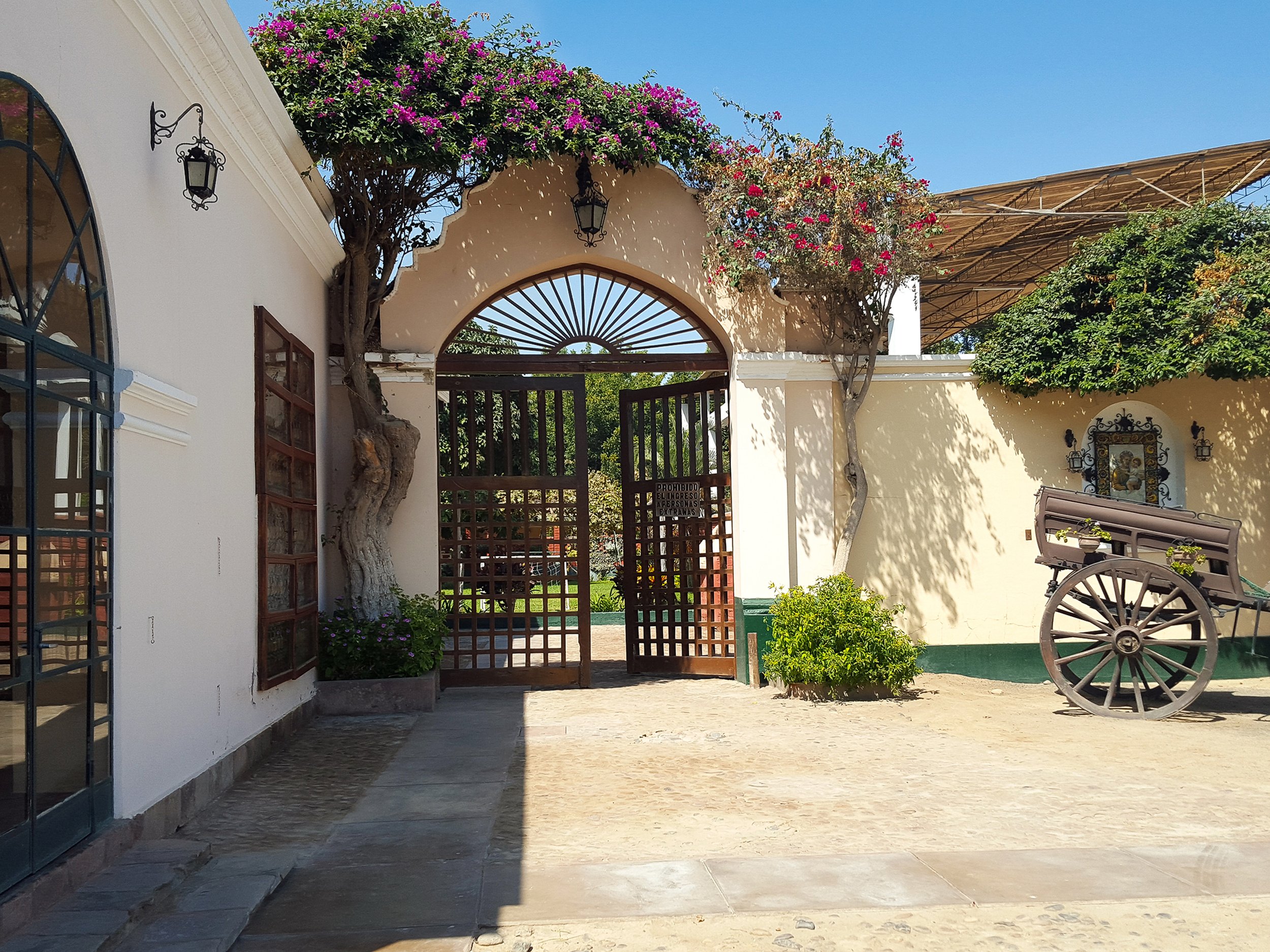
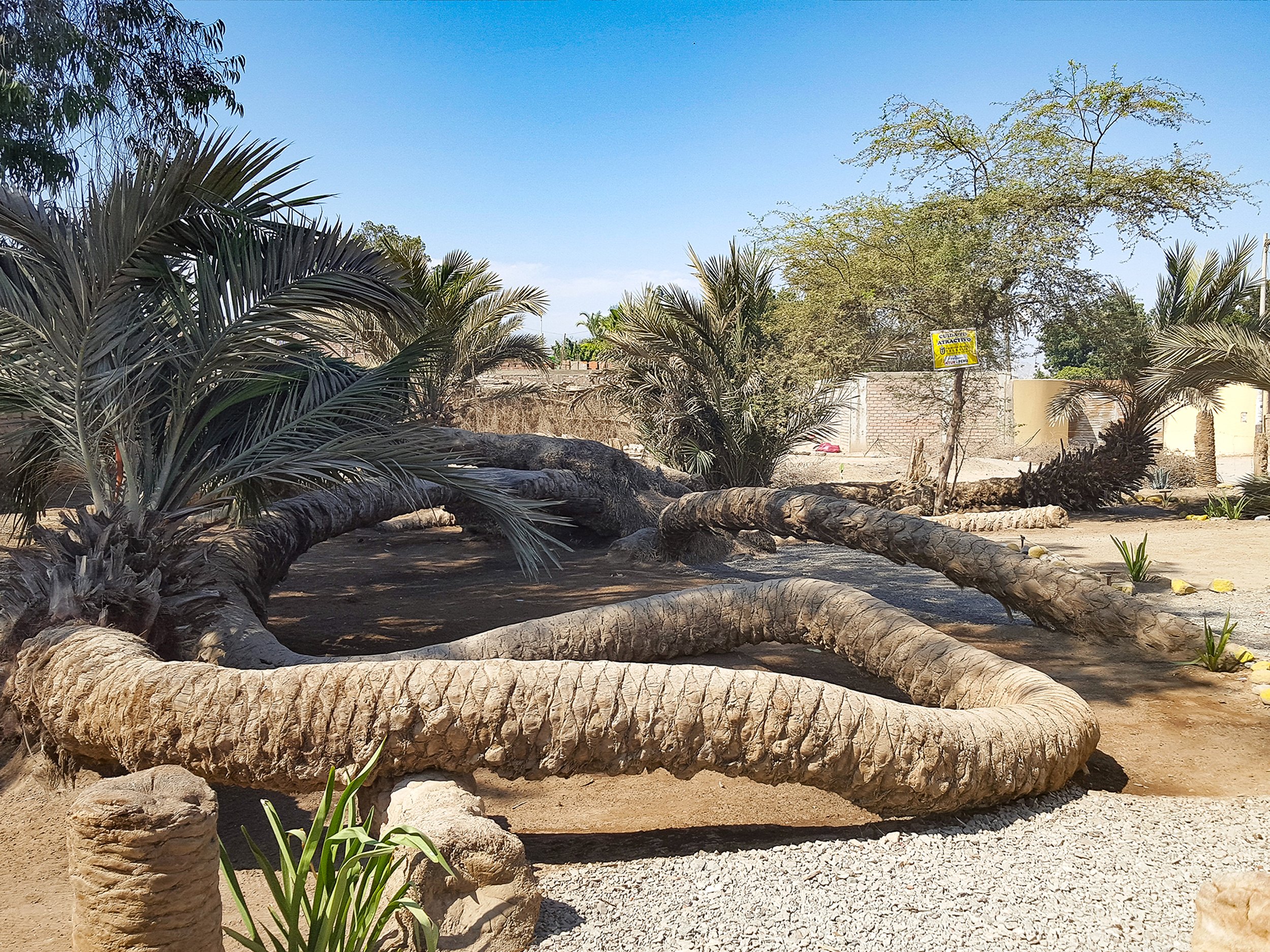
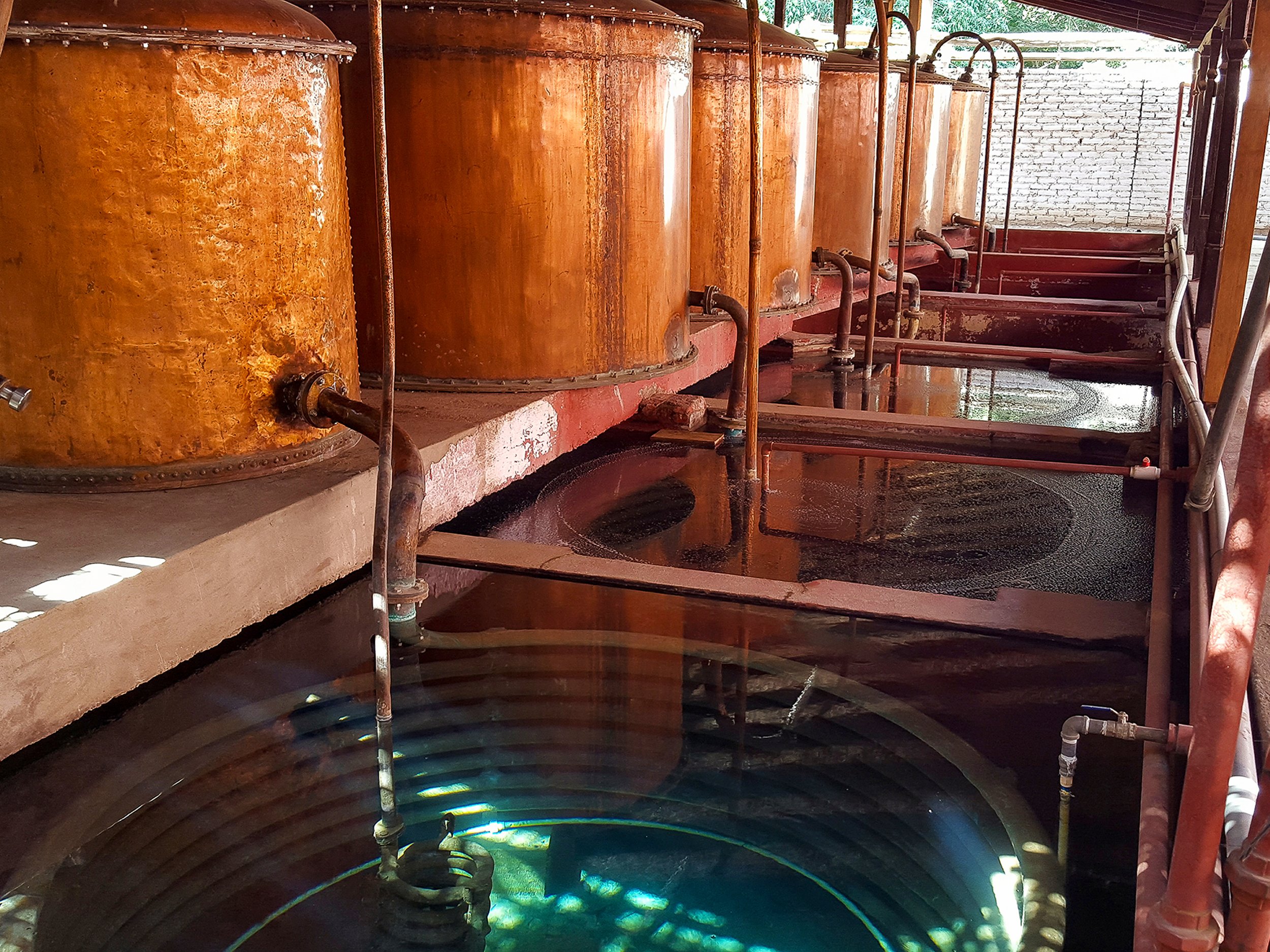
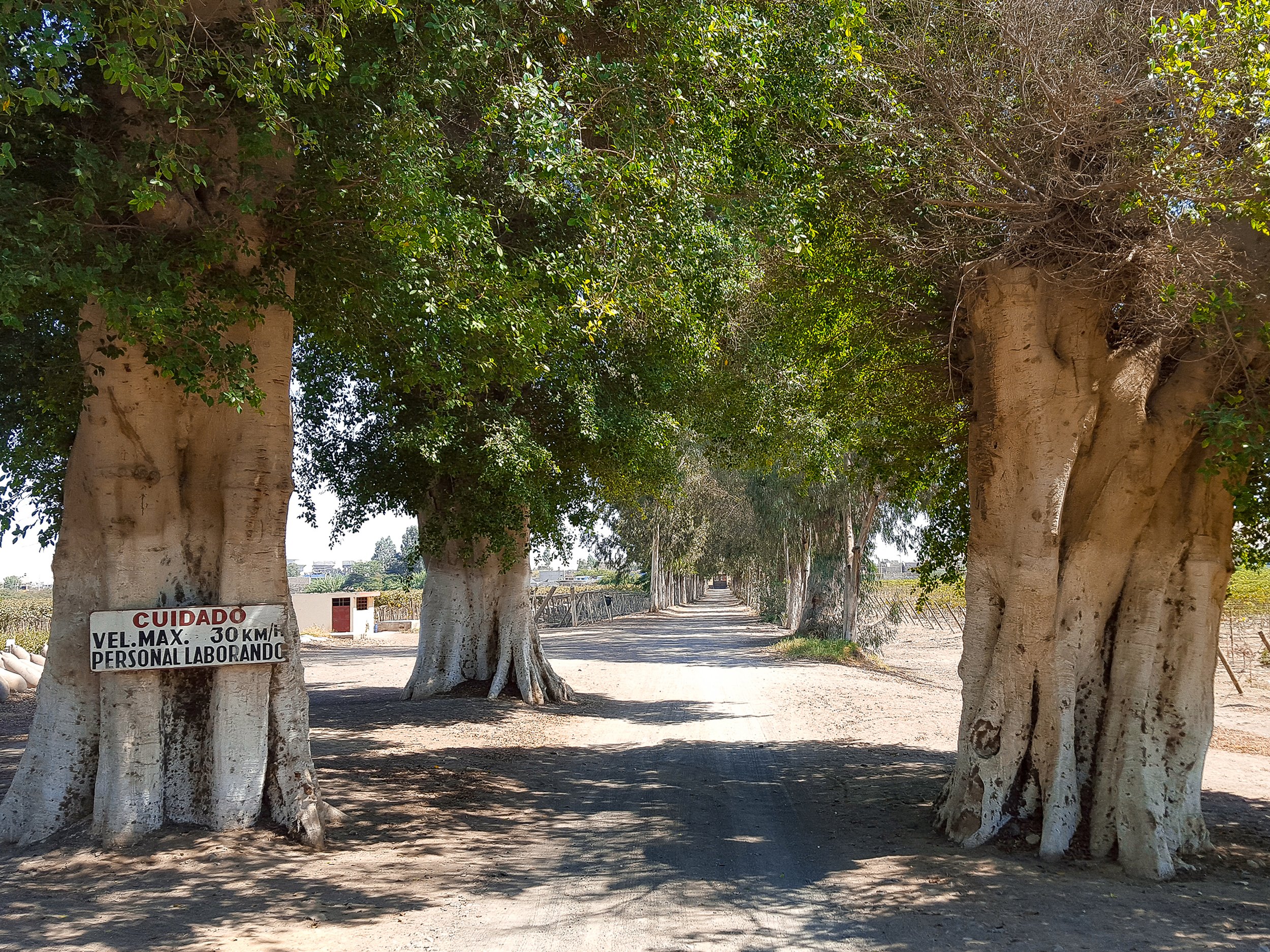
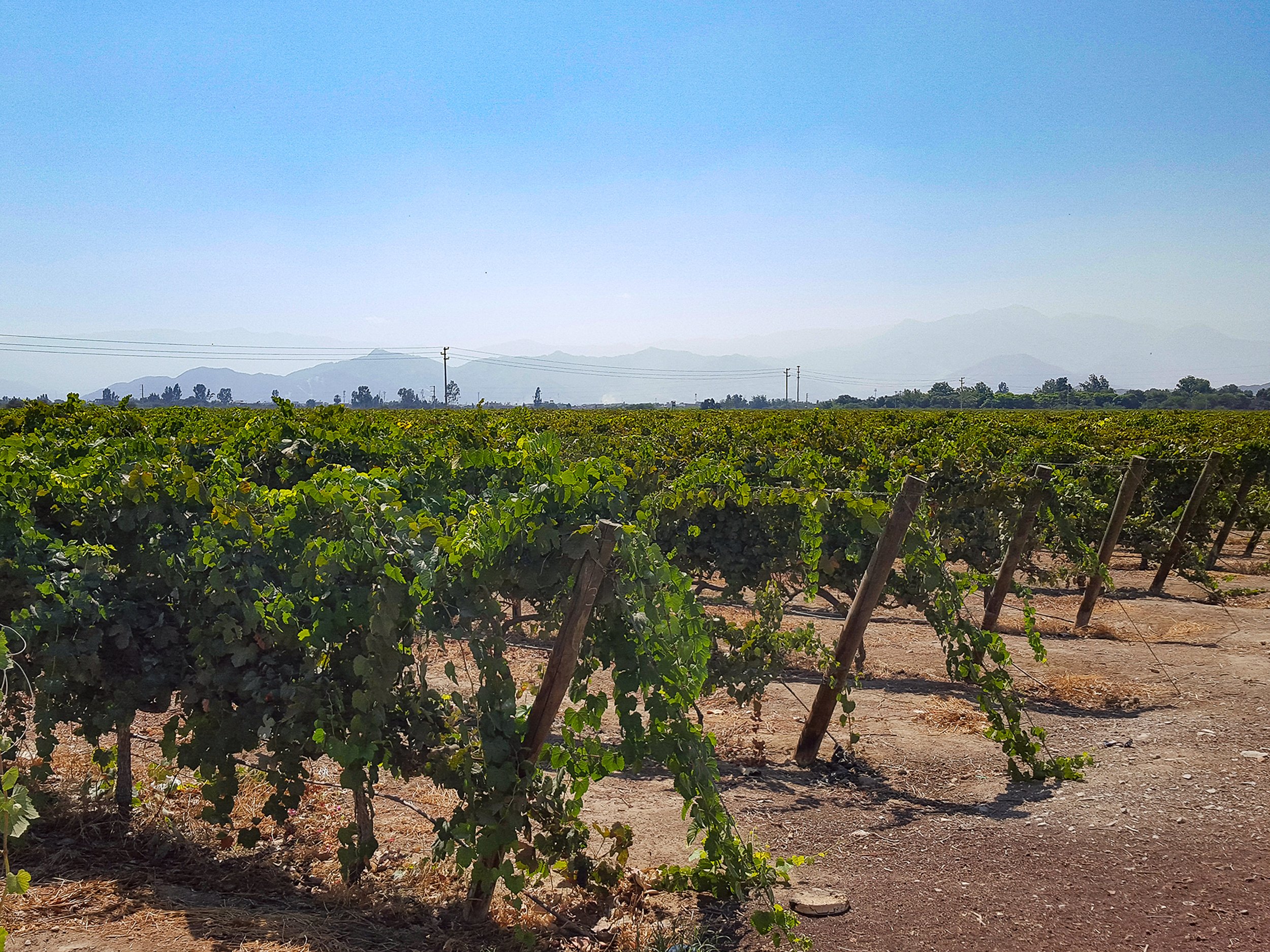
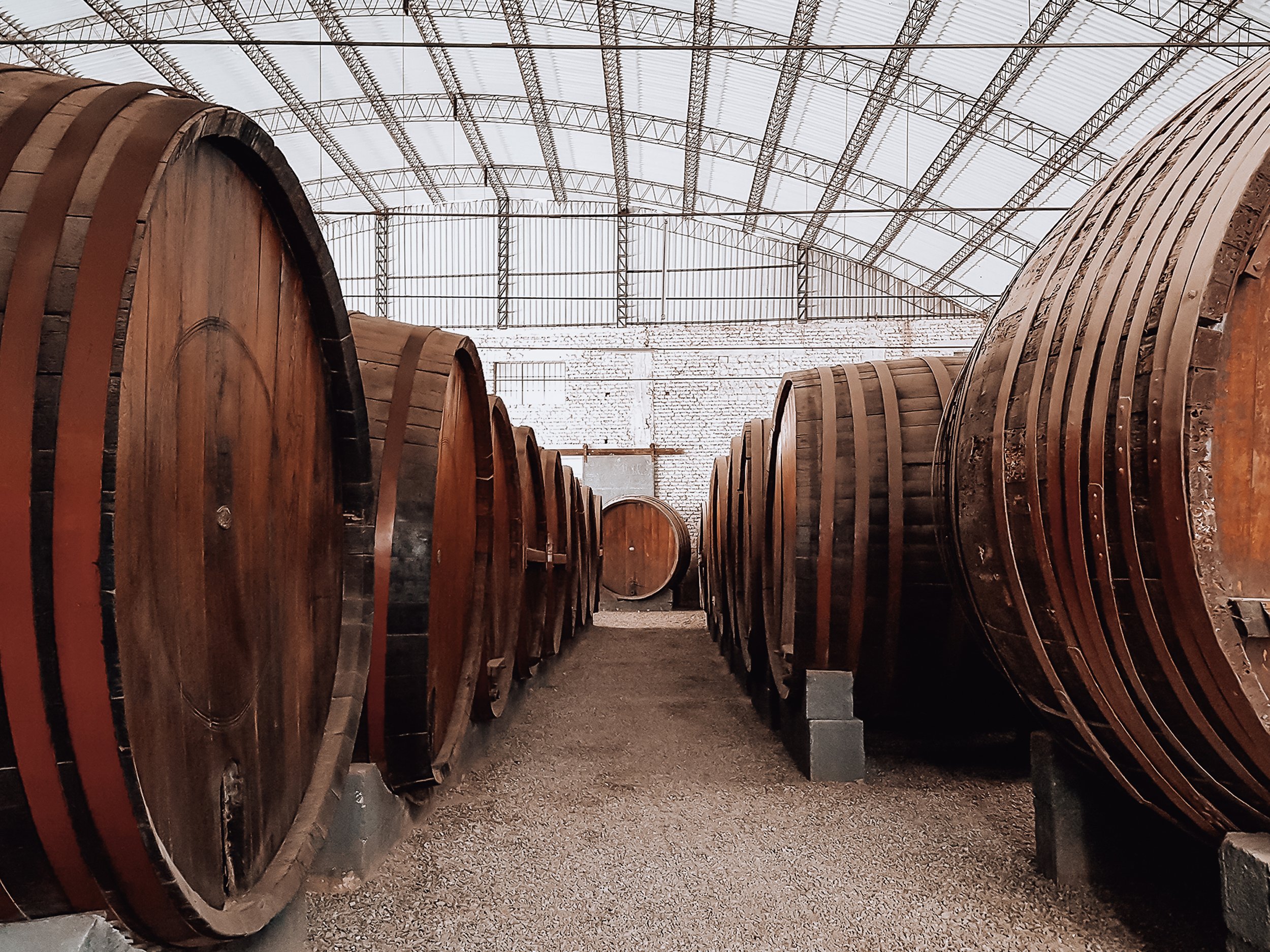
Ica
Ica is a region of the Peruvian desert at the base of the Andes Mountains with wine vineyards, Pisco distilleries, a desert oasis and nature reserves.
Peruvian Wines & Vineyards
Though Peru is not widely known for its wines, many incredible vintages come out of the country’s Ica Valley. During our 3 week in Peru, we sampled multiple wines, piscos and visited a couple of vineyards
Bodegas Vista Alegre. One of Peru’s largest and oldest vineyards and Pisco distilleries. Rows of grape vines line the fields extending towards the edge of the Andes mountains range. We learned about how the grapes are harvested, toured the facilities where they are fermented, distilled and bottled before getting to enjoy some for ourselves.
Nietto Vineyard. A vineyard and Pisco distillery in Ica. We stopped here on the Peru Hop bus and sampled at least a dozen wines and Piscos before enjoying a lunch with our guide. The atmosphere made for a lively and memorable experience!
Vittoria Reserva Malbec, Valle de Ica, Peru. A flavorful, full bodied and dry red wine with rich fruity notes.
Intipalka Vino Cabernet Sauvignon Syrah Réserva, Valle de Sol, Peru. An easy drinking mid to full bodied and dry red wine.
Intipalka Reserva de Familie Malbec, Bakke de Ica, Peru. A flavorful, dry and full bodied red wine.
Tacama Gran Tinto Trea Cepas Malbec, Petit Verdot & Tannat. A popular mid bodied and dry Peruvian red wine sold across the country made from a blend of Malbec and Tennat.
Tacama Gran Blanco. A popular white wine sold across the country with a light body with a dry and stoney flavor.
Getting Around Ica
By Taxi. The best way to tour Ica is to hire a taxi driver for the day or afternoon. Many of them will bring you to various sights, recommend places to eat and wait for you while you explore. The cost will depend on how long you hire them for and what you negotiate. In our instance, we hired a taxi for 4 hours and it cost $30.
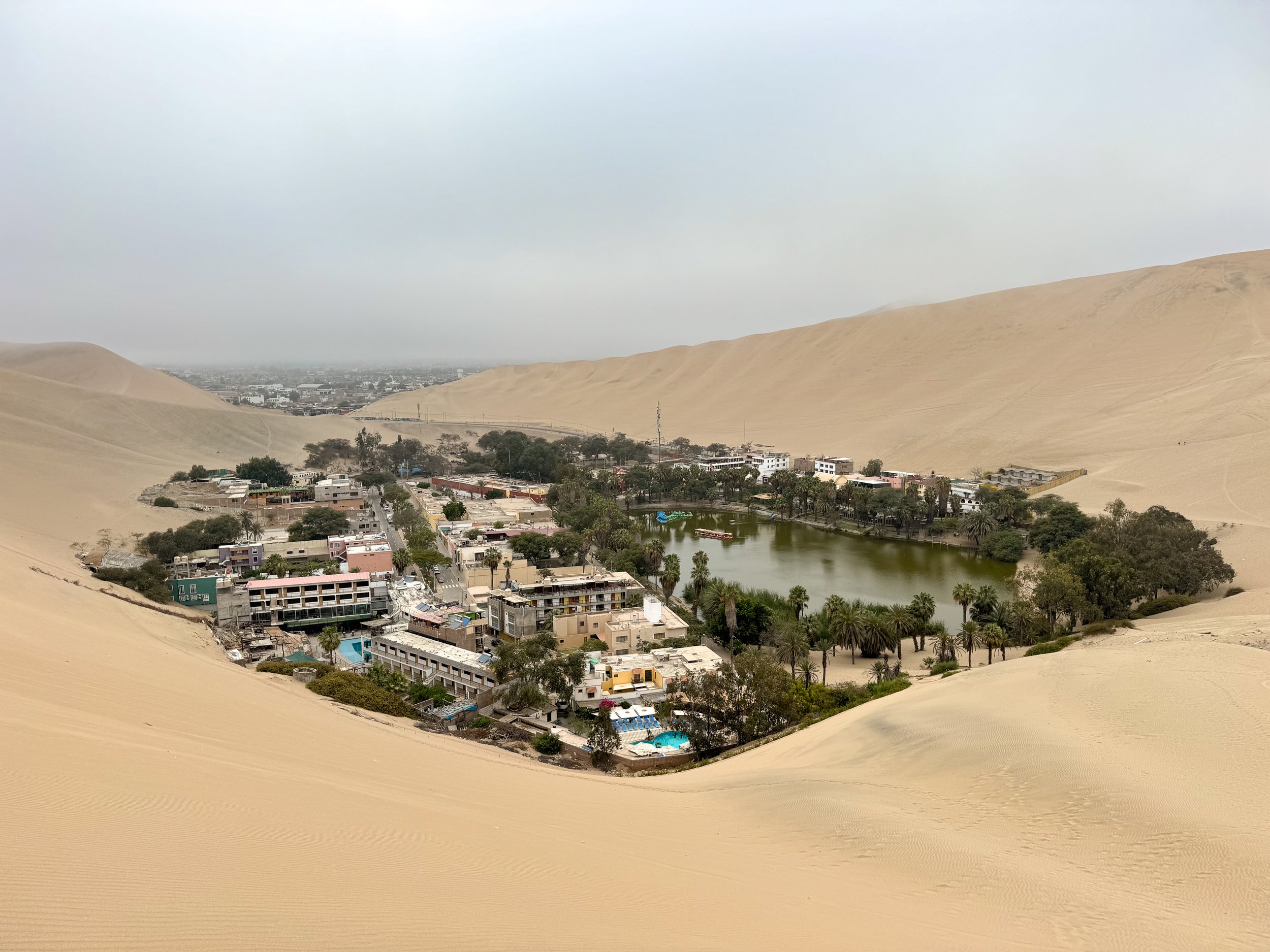
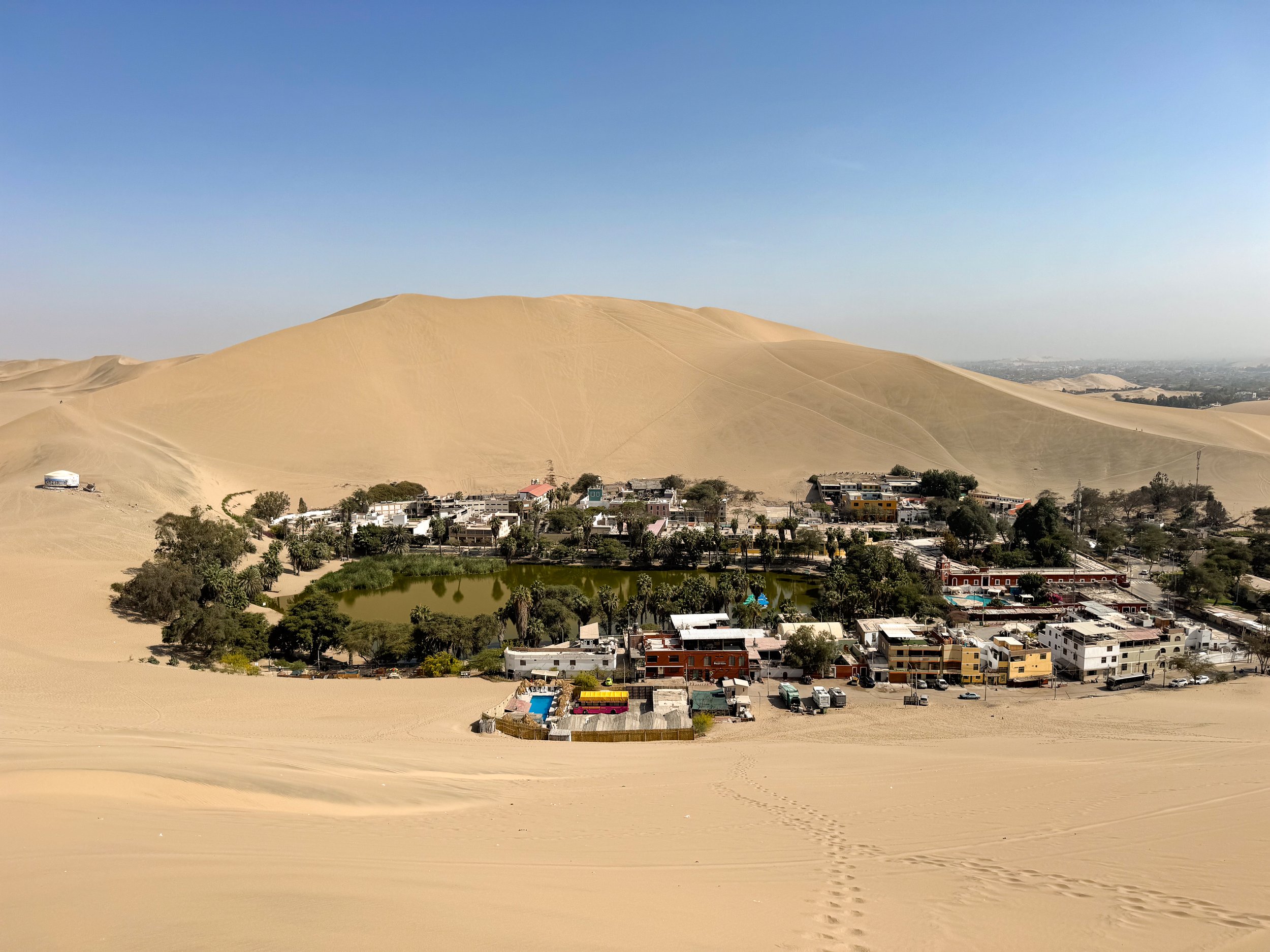
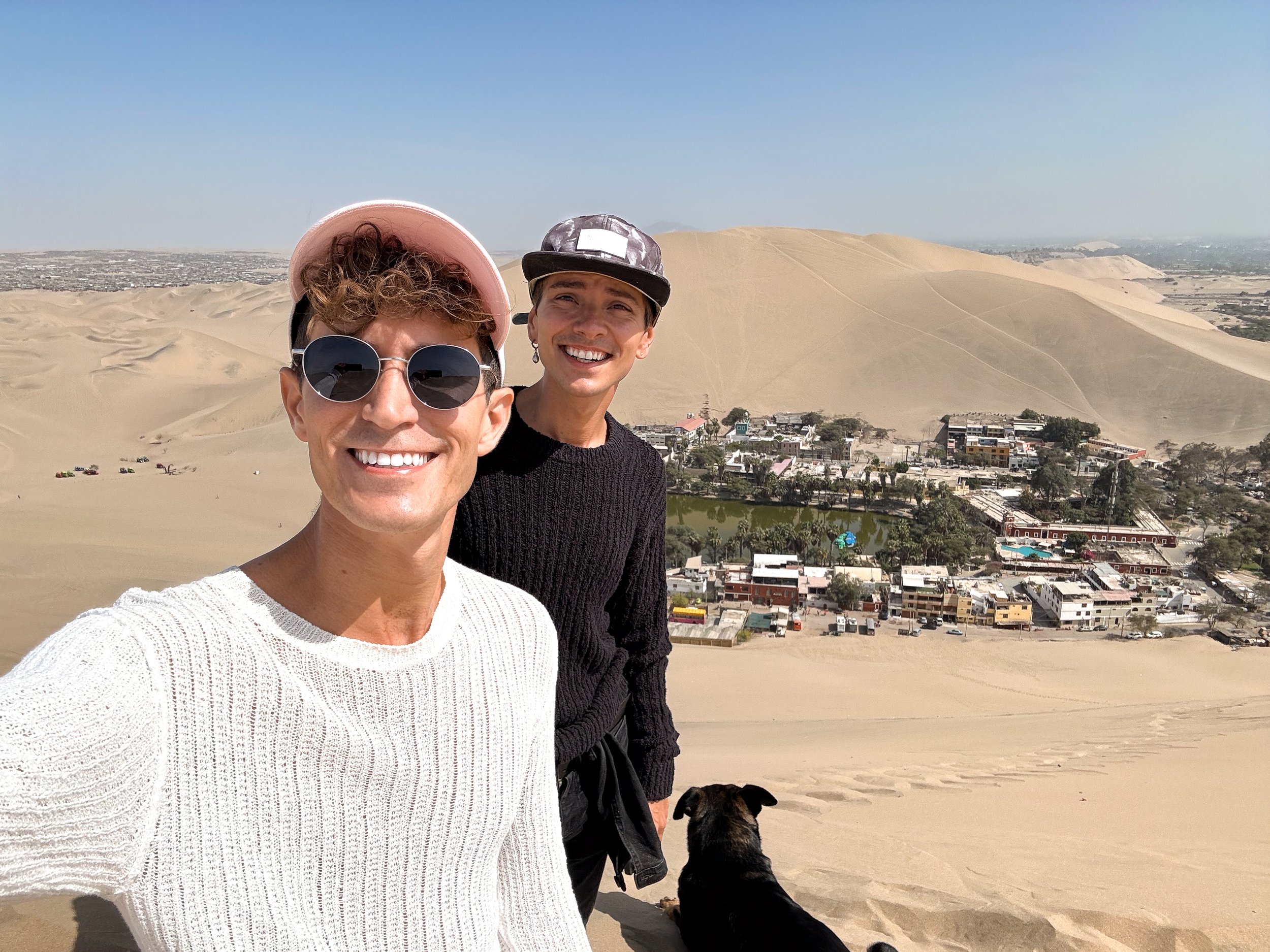
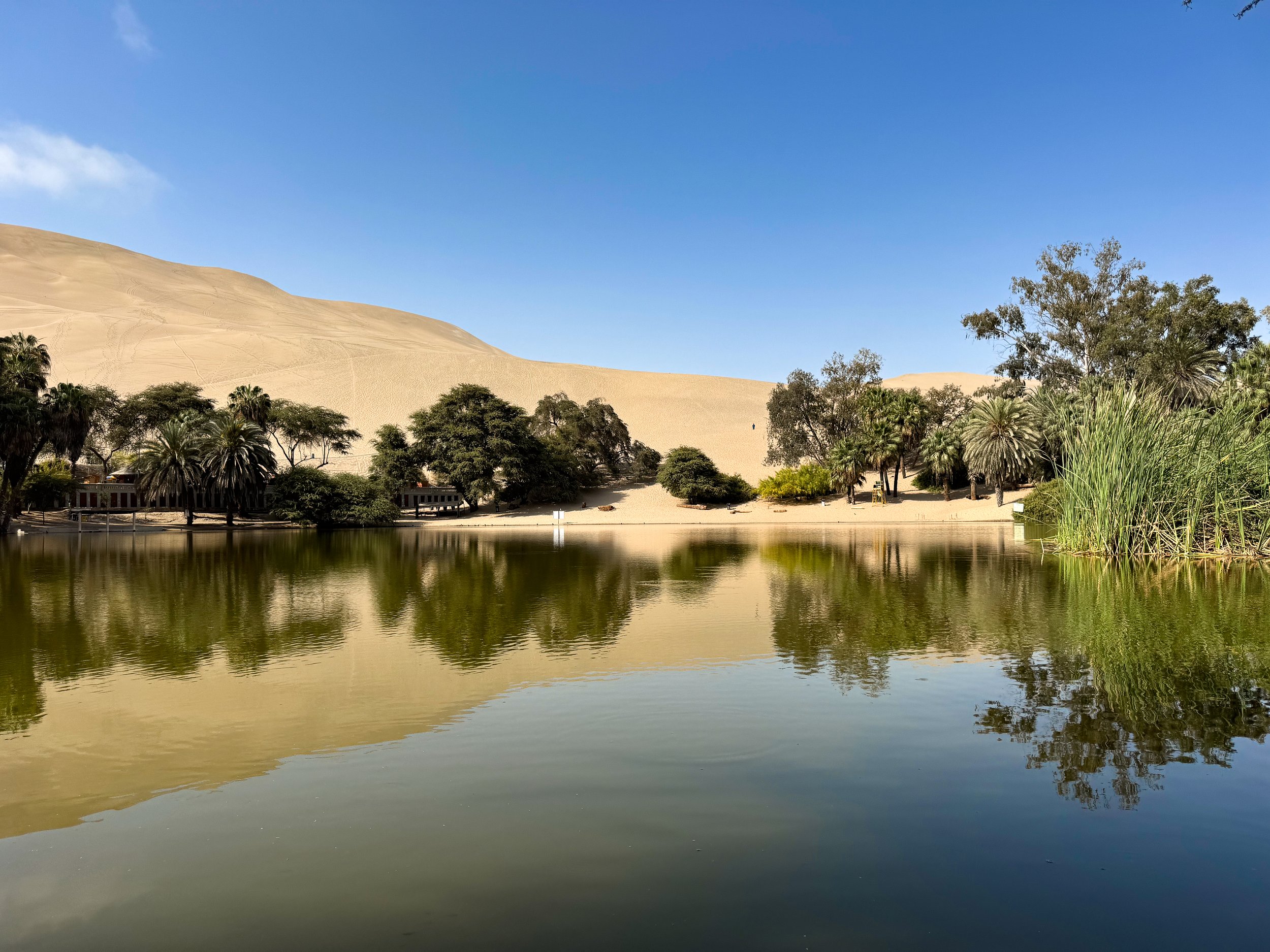
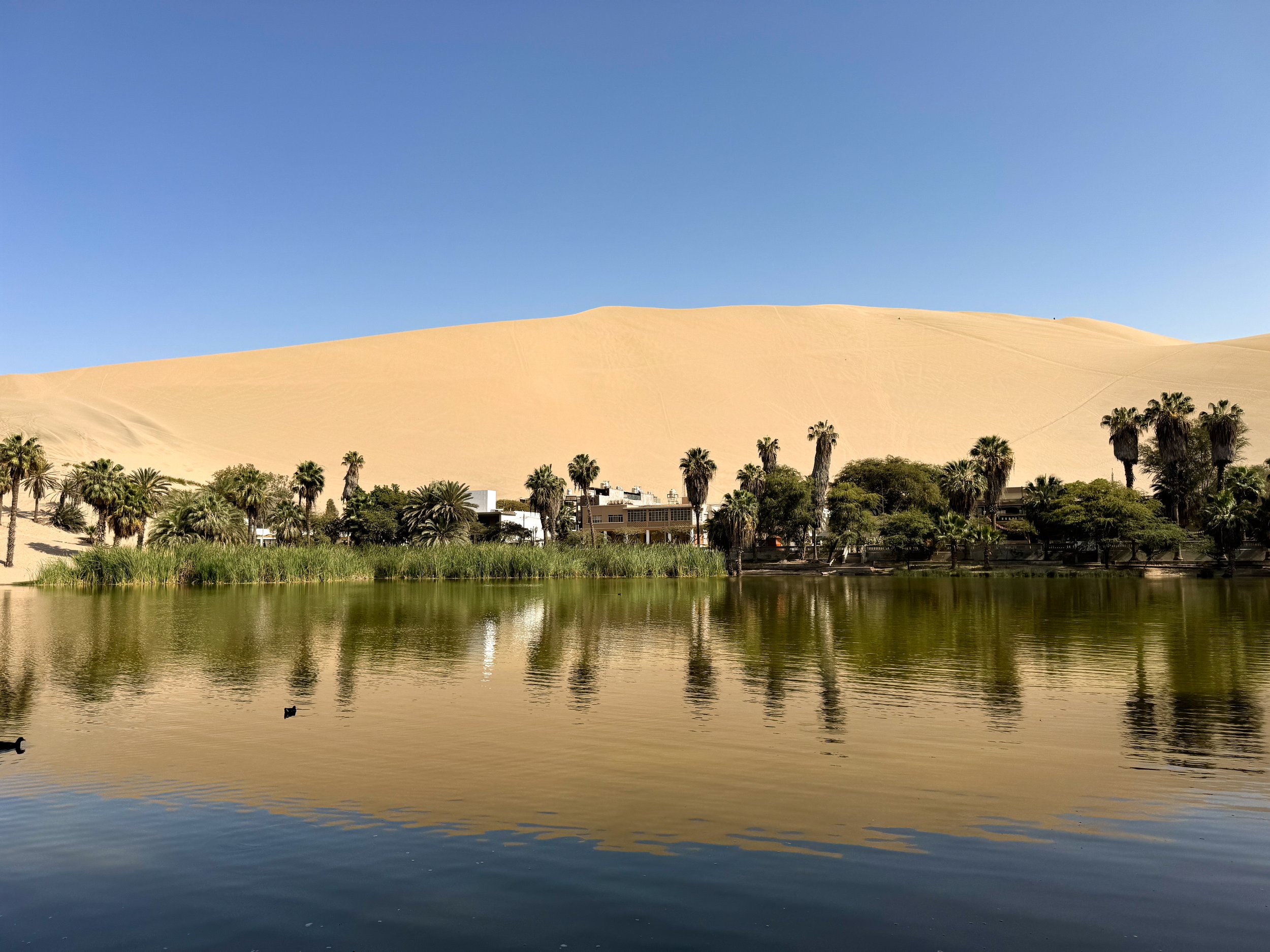
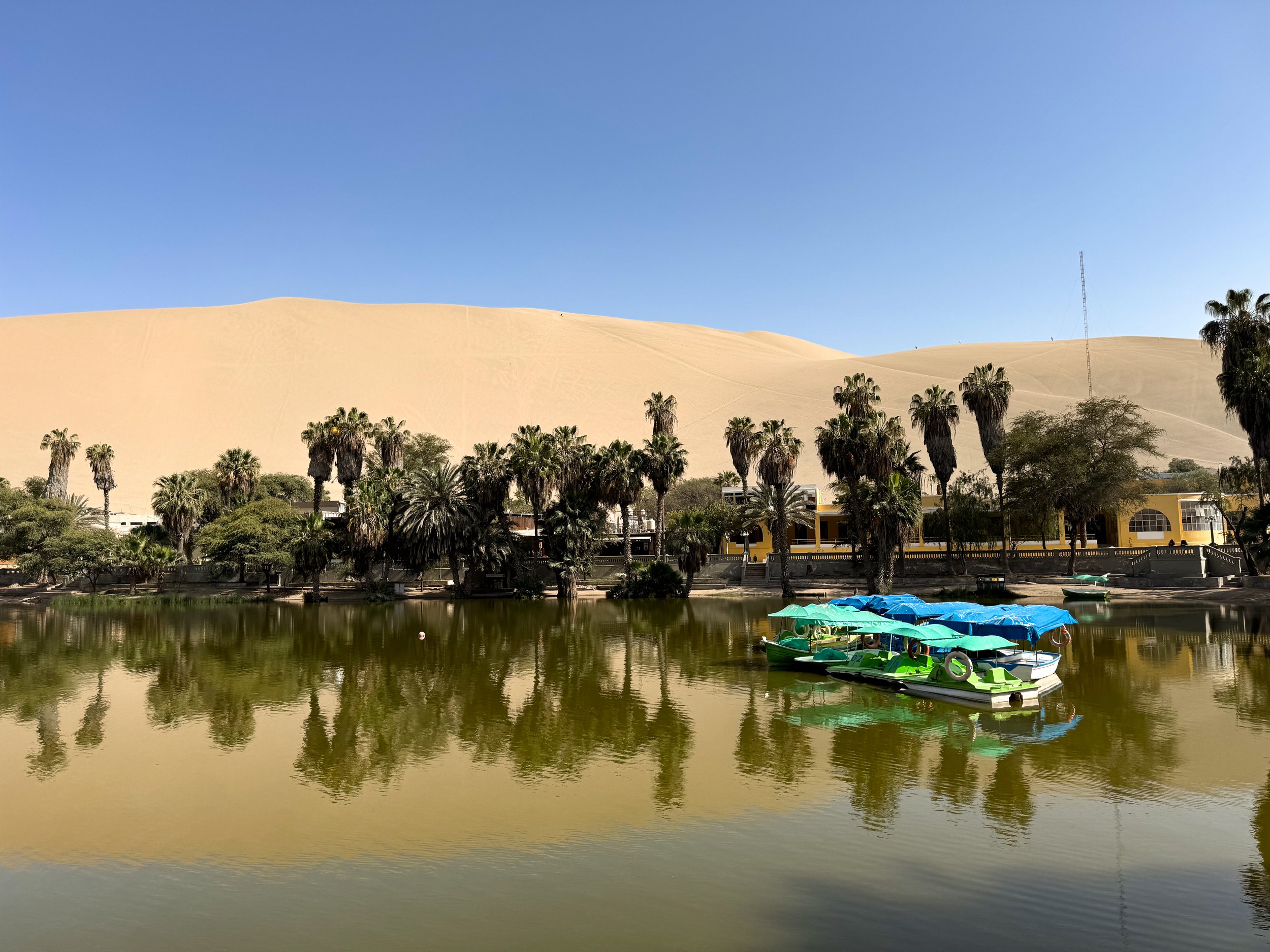
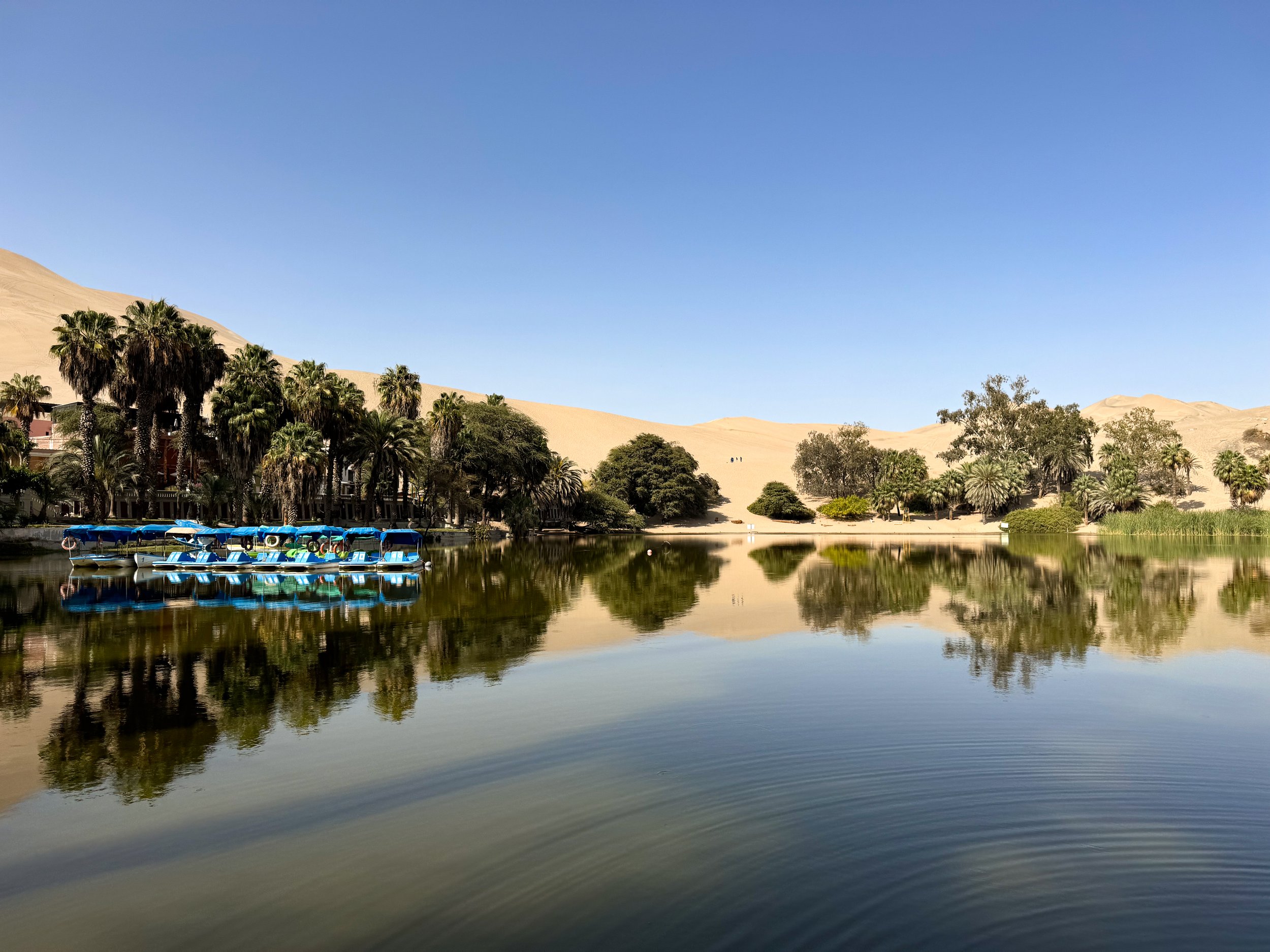
Huacachina
The Desert Oasis. Huacachina is a picturesque desert oasis hidden between monstrous sand dunes home to a tiny lake surrounded by palm trees, hostels, restaurants and bars. The town is popular with backpackers and desert activities like dune buggy rides & sand boarding.
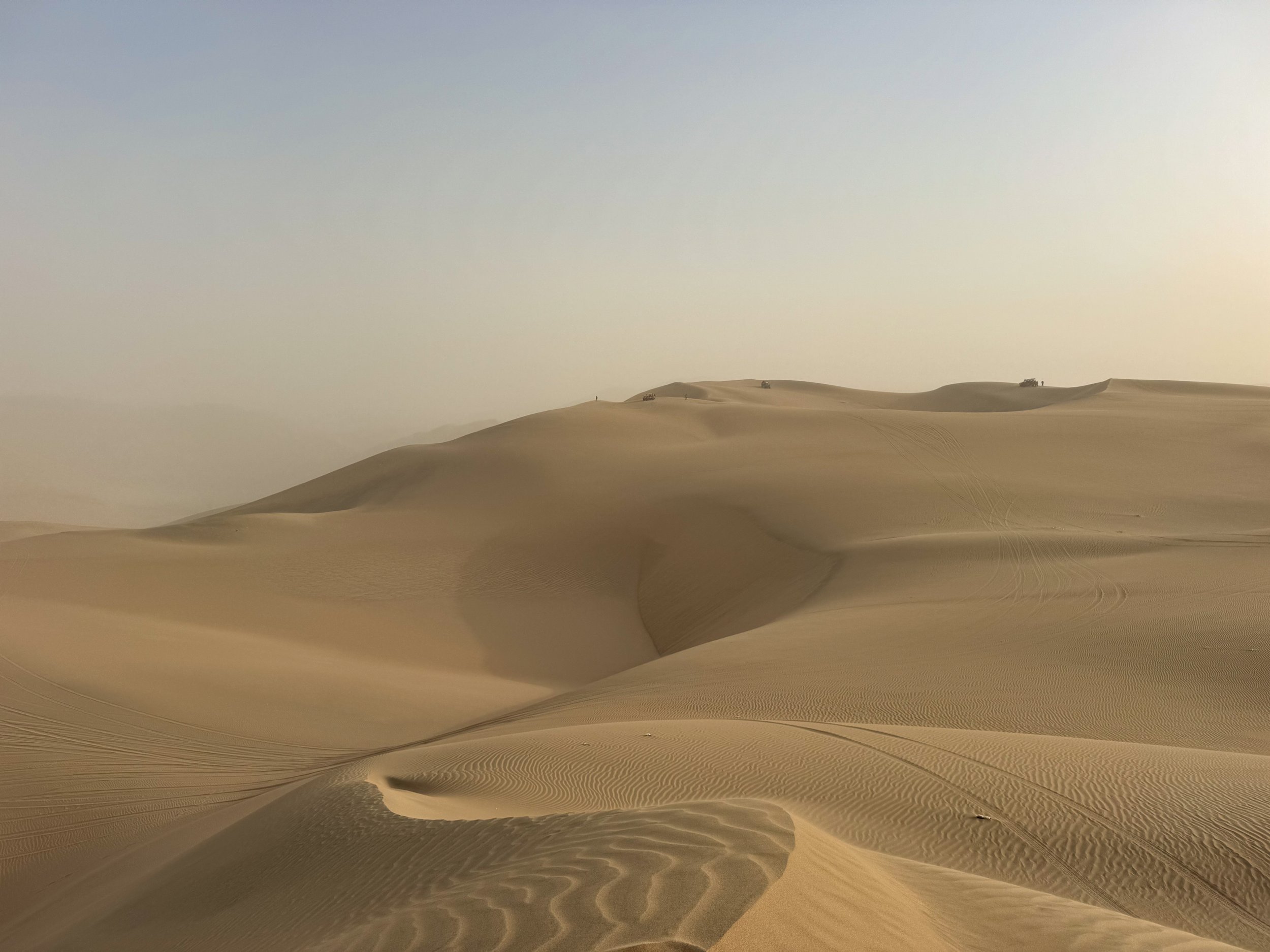
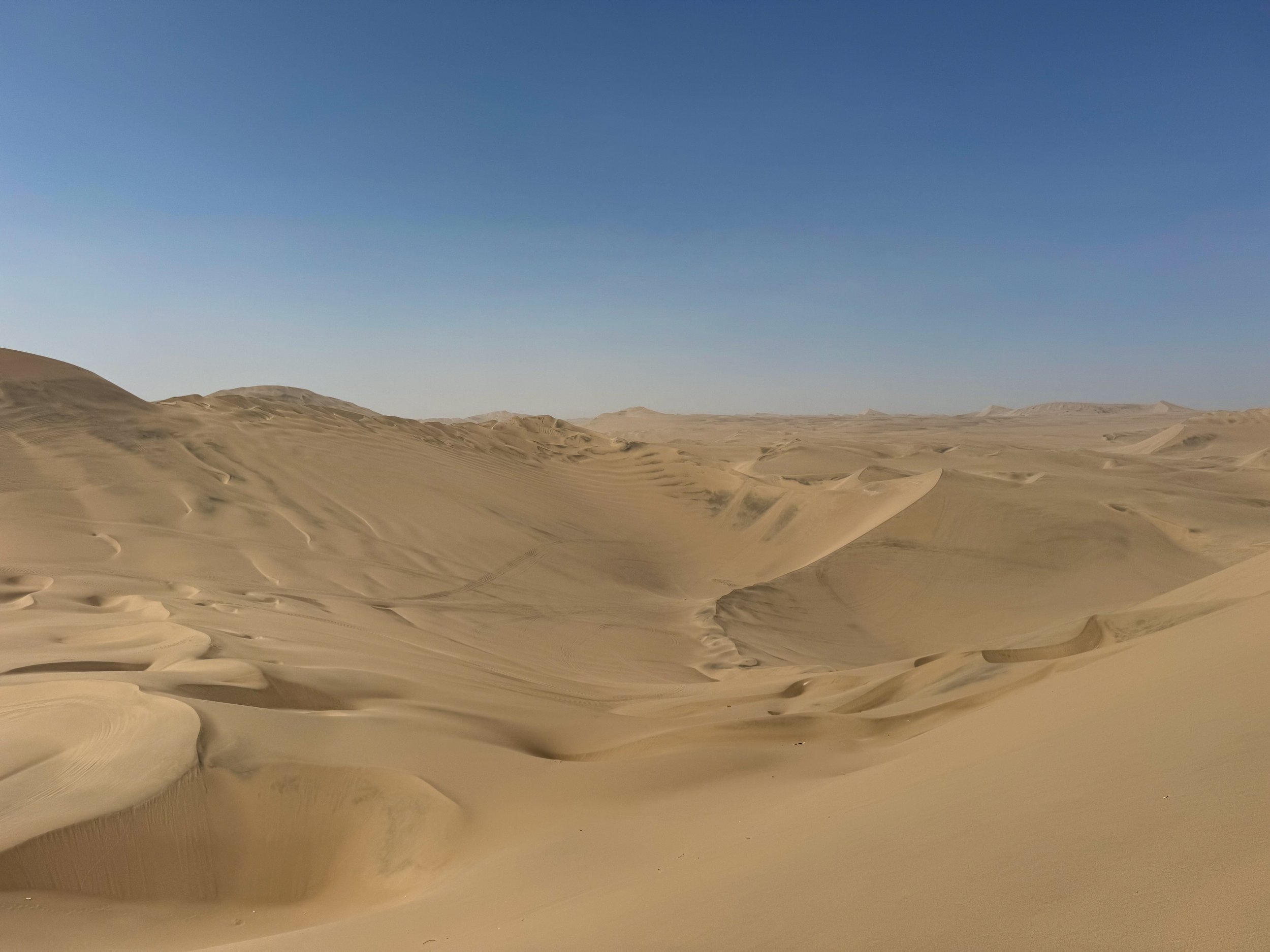
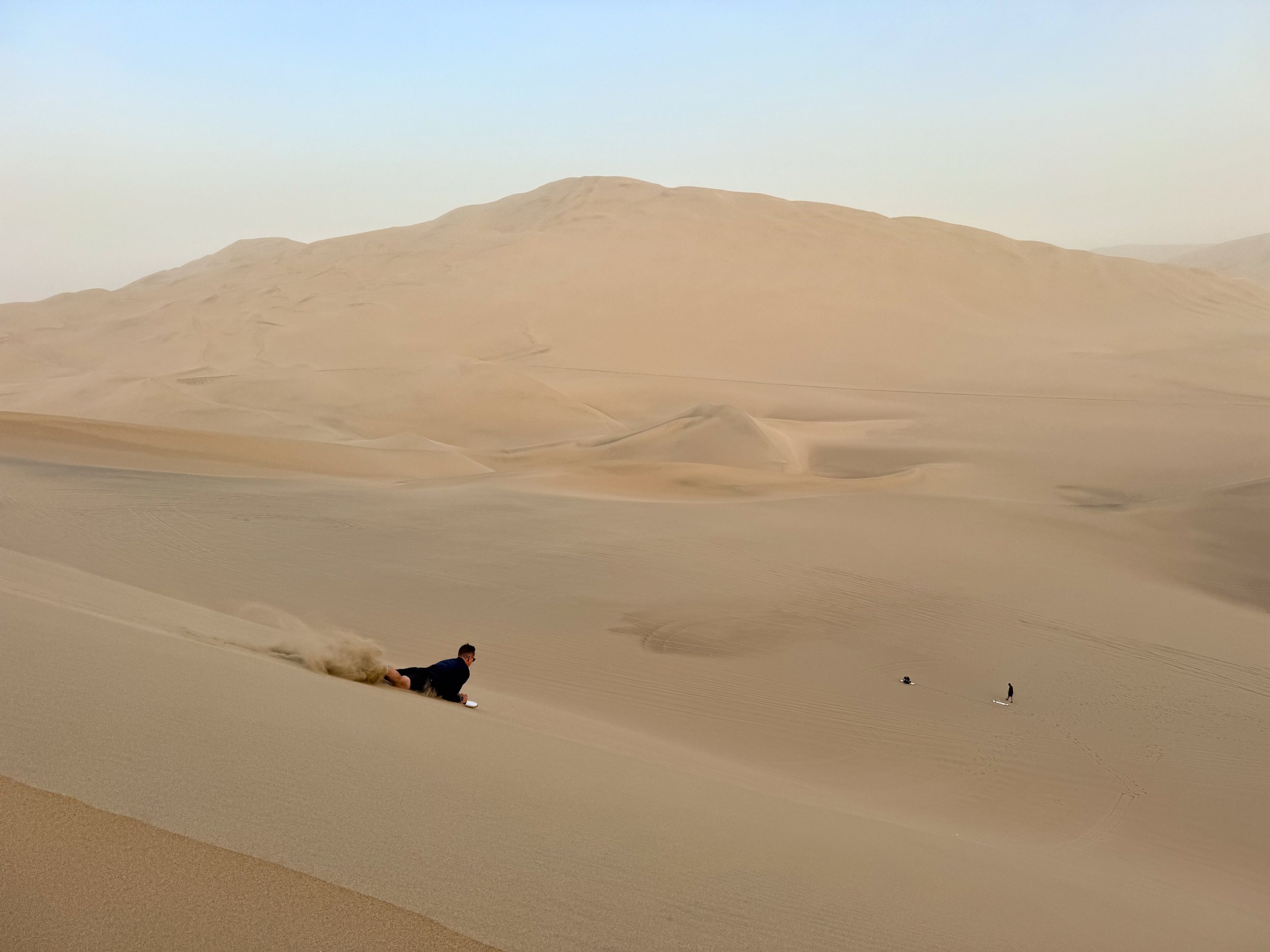
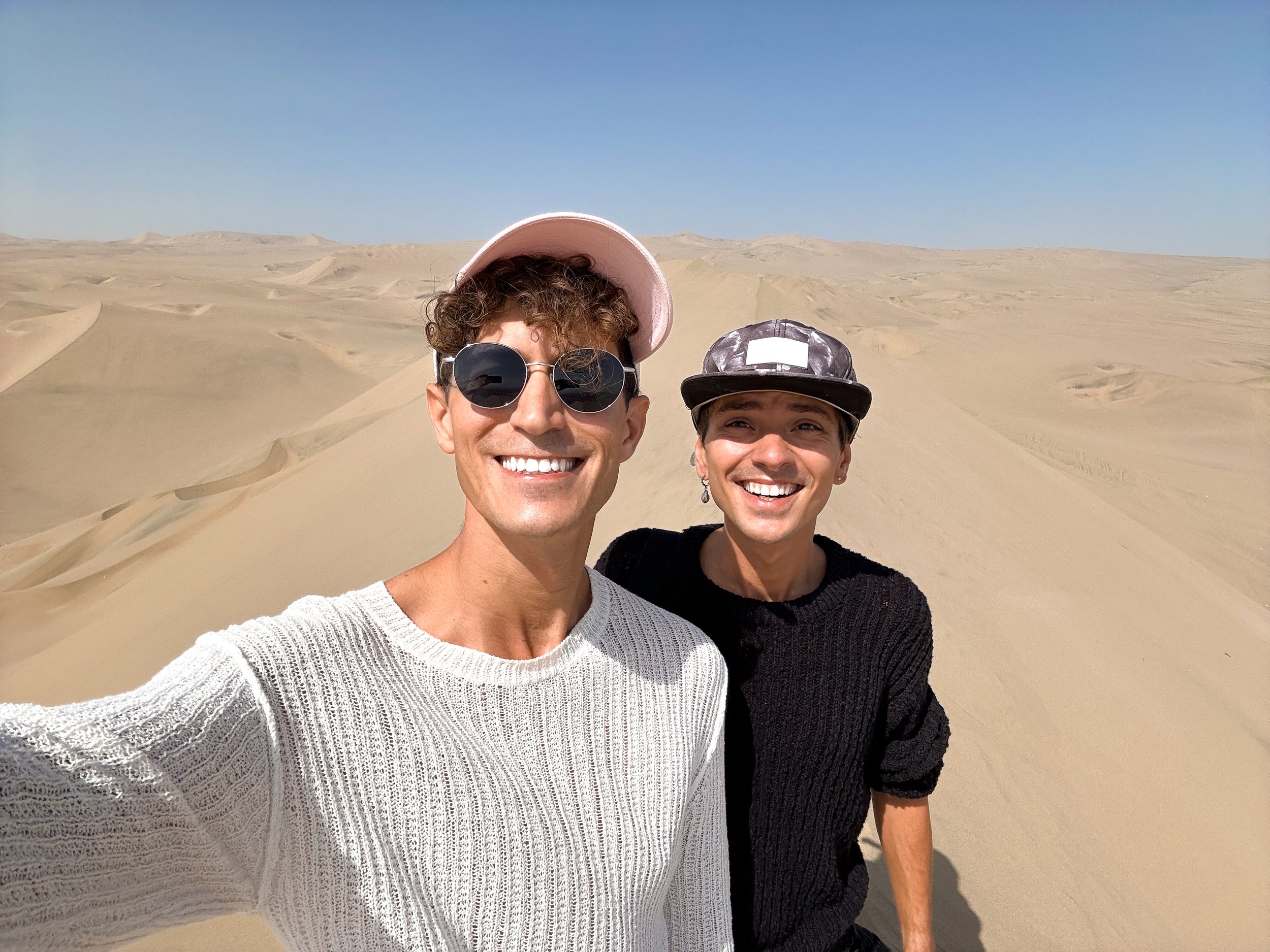
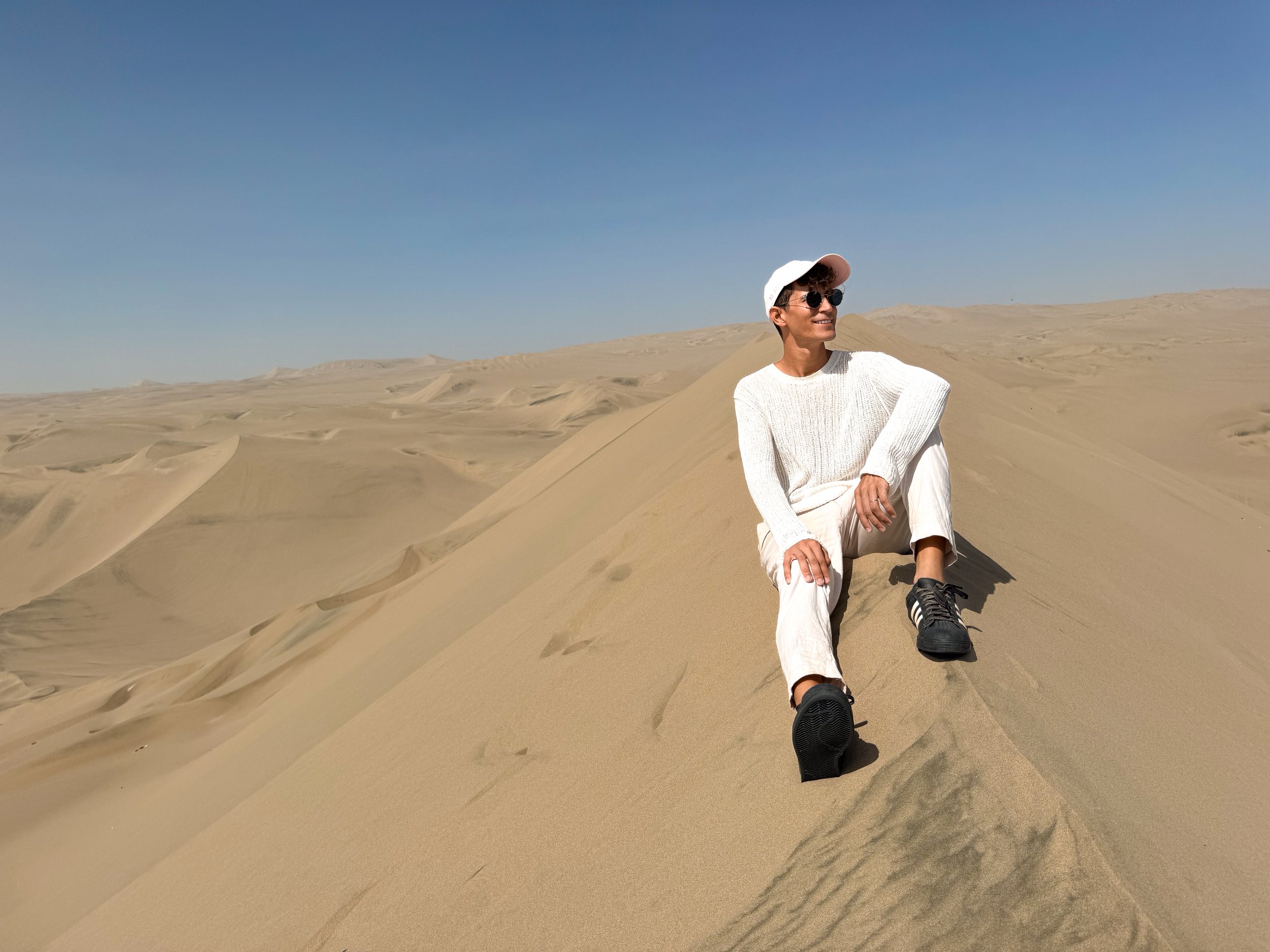
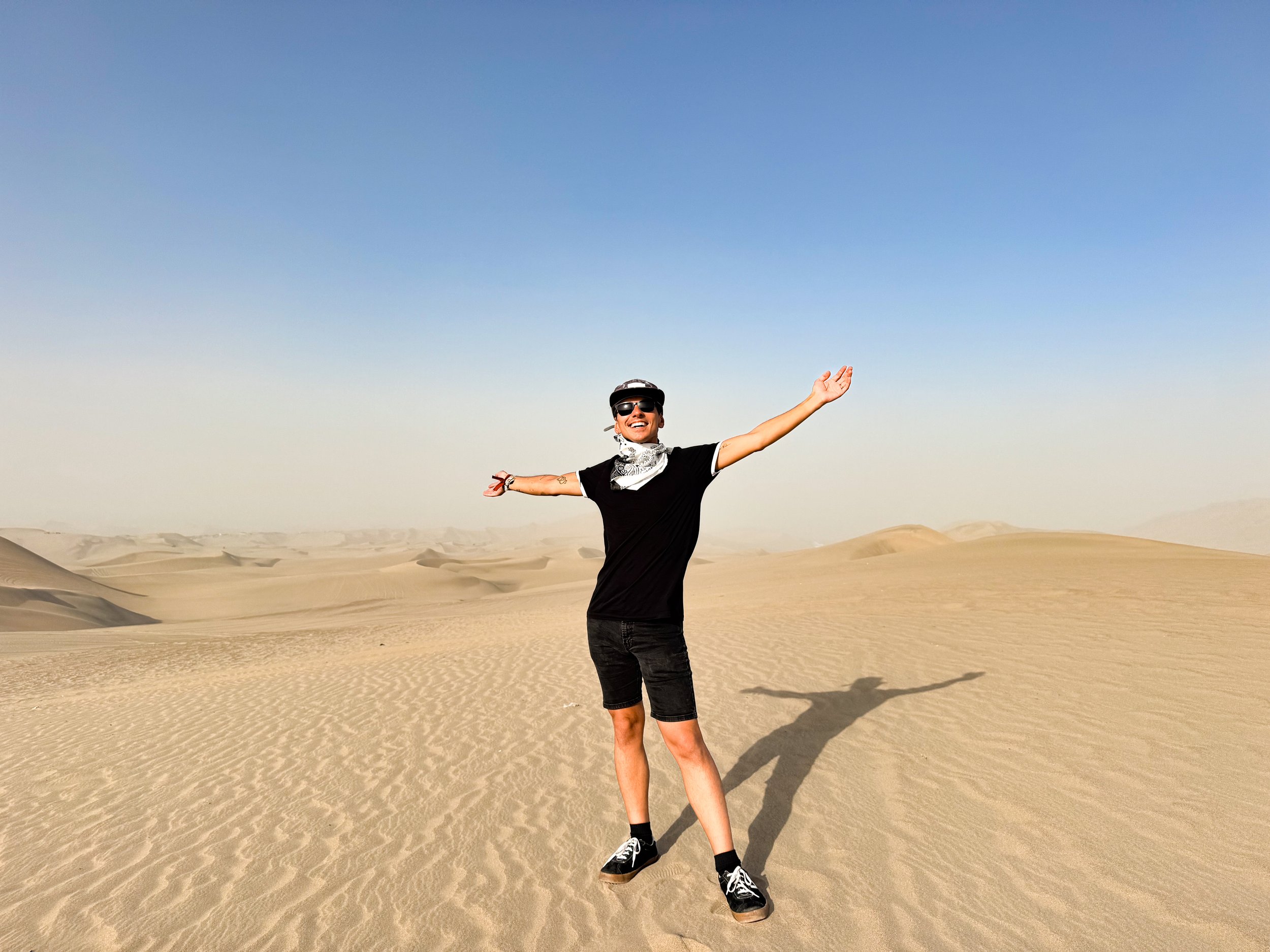
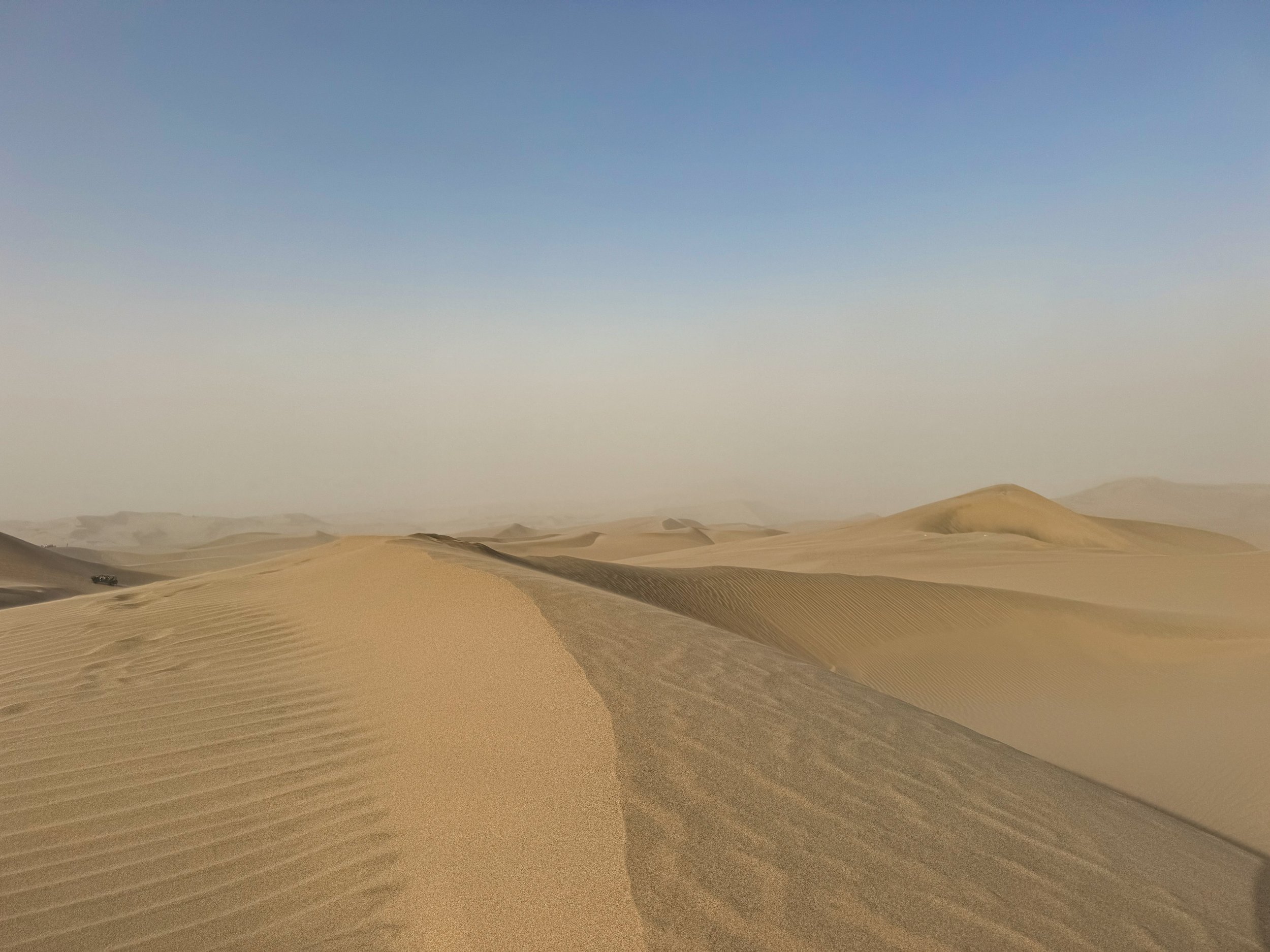
Sights
Huacachina Dunes. We woke up early and climbed both dunes surrounding the oasis. From the top of the first crest, we ate breakfast with the company of a doggie that followed us up. On the second dune, the morning fog had cleared, revealing a clear blue sky above the beautiful oasis and the vast desert dunes rippling far across the horizon.
Dune Rides & Sand Boarding. We boarded a small dune buggy that rode into the desert for an exhilarating and heart dropping roller coaster ride through the dunes, drifting sideways across the sand and down step dunes at high speeds. We stopped at multiple places for photos, sand boarding and the sunset. There were three dunes to sled, sand-board or ski down, each increasing in length and speed.
Where to Eat, Drink & Sleep
Viajero Hostel Huacachina. With its inviting atmosphere and well ran experience, Viajero is one the best hostel we’ve stayed at! It has a large courtyard with a restaurant, bar, pool and numerous style lounge areas surrounded by multiple buildings home to dorms and private rooms. They offer nightly events to meet other guests and keep entertained including karaoke and dancing. Book here!
Vittoly Cafe. A small cafe with breakfast dishes, to go empanadas and cookies. It’s a quick spot to stop on the way into our out of town for a bite to eat and refreshment.
Huaca-Fucking-China. An iconic restaurant and bar in Huacachina known for its name, Peruvian dishes and cocktails. Come here for a drink and meal overlooking the lake.
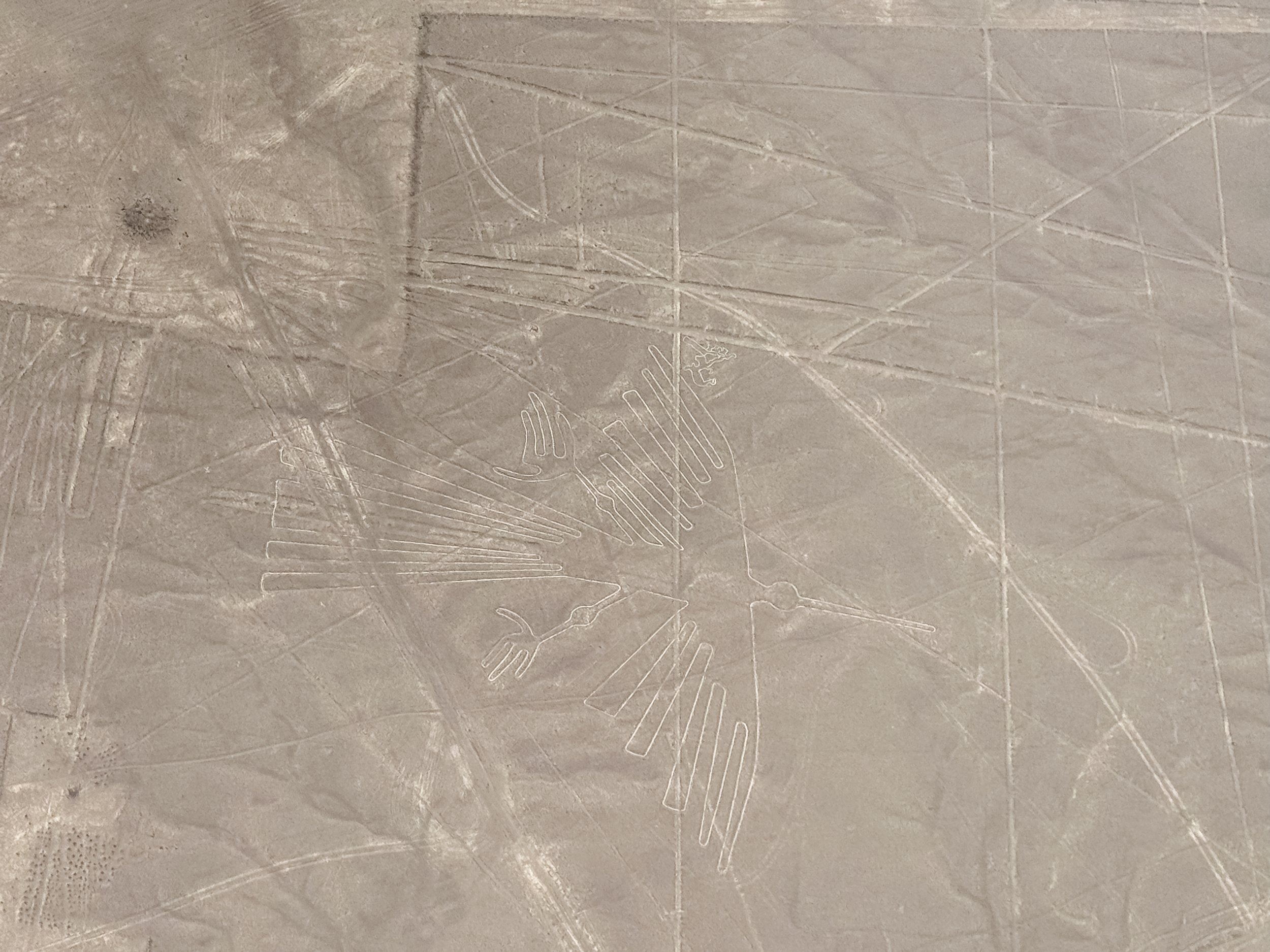
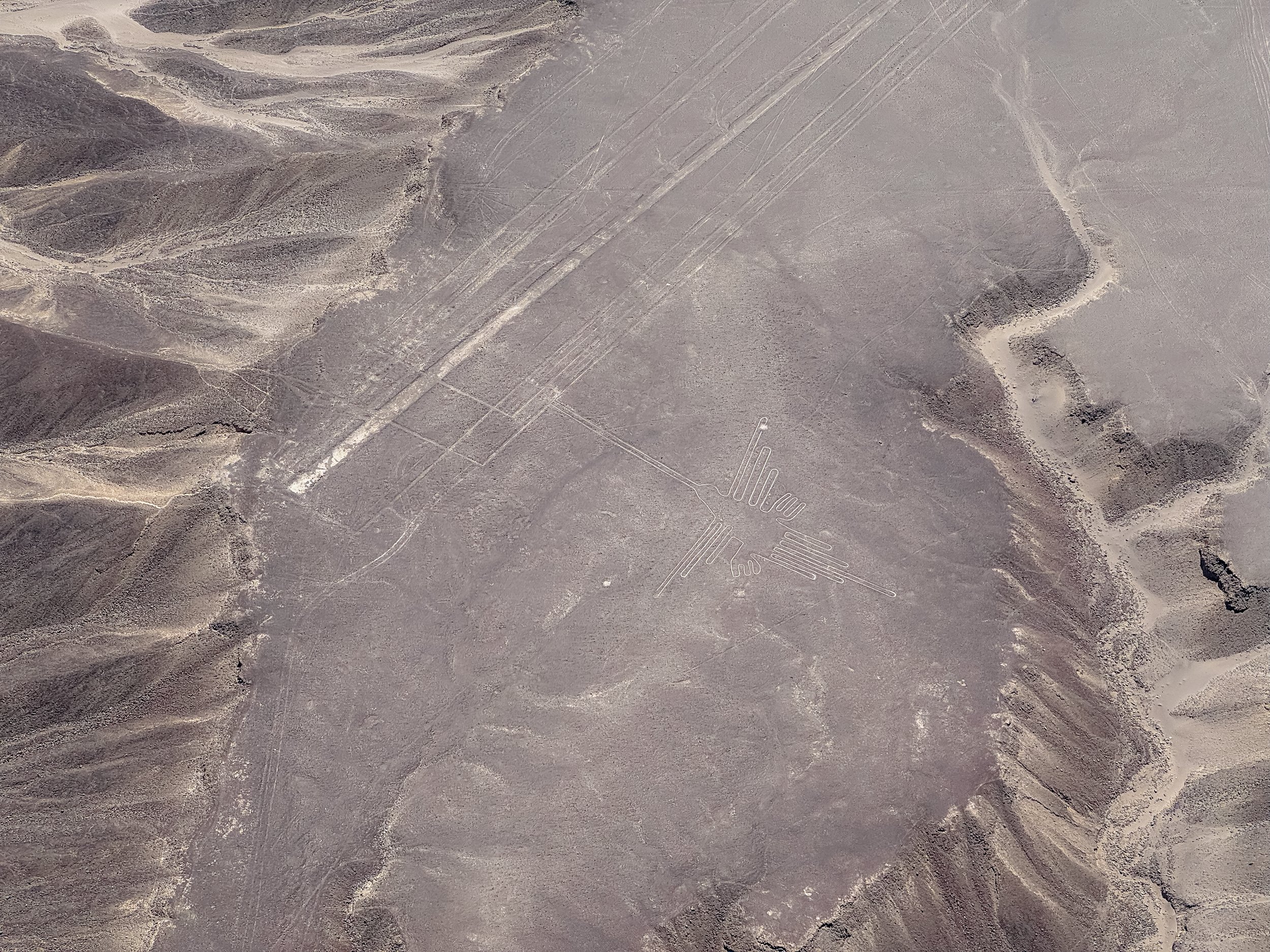
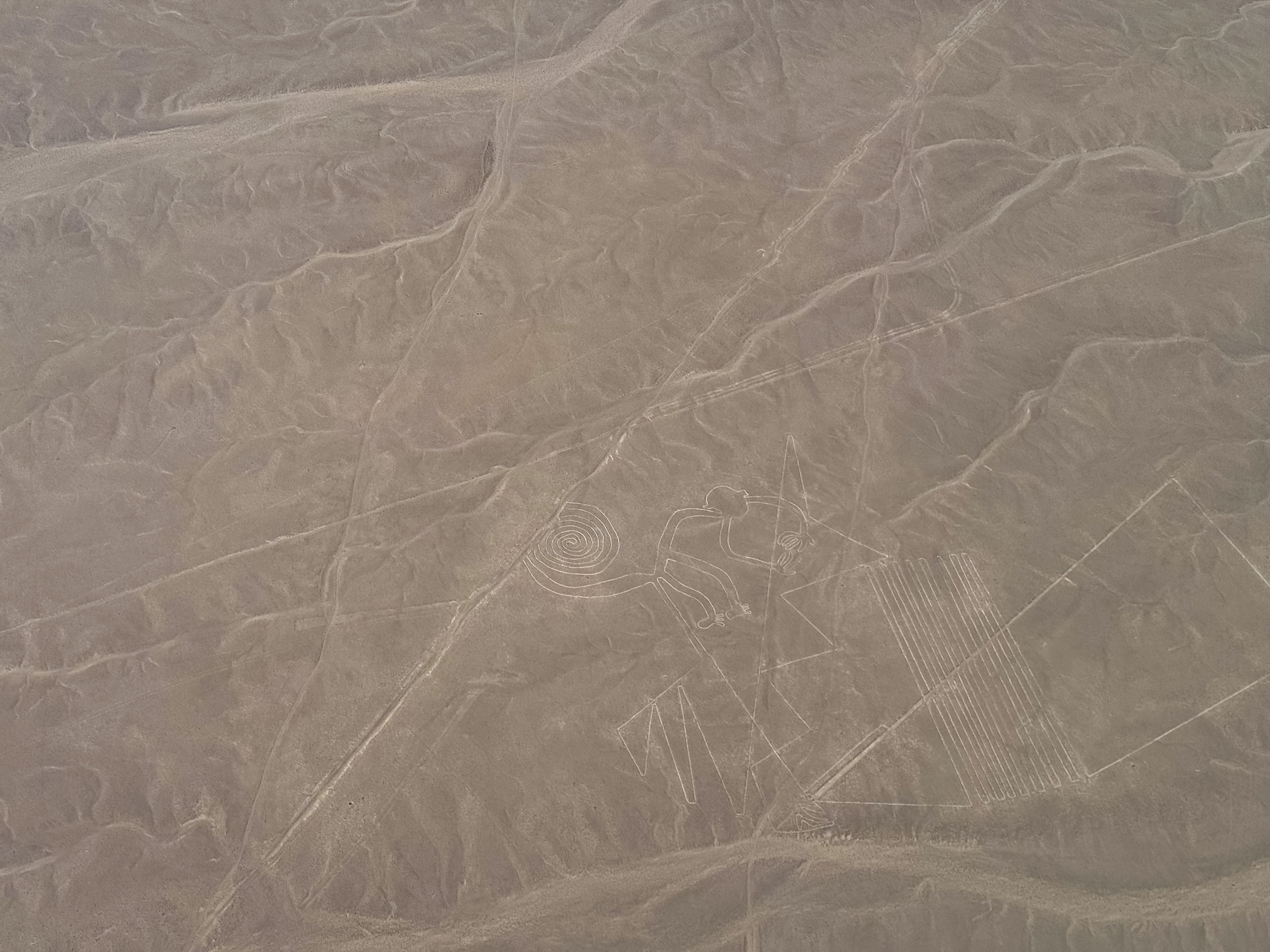
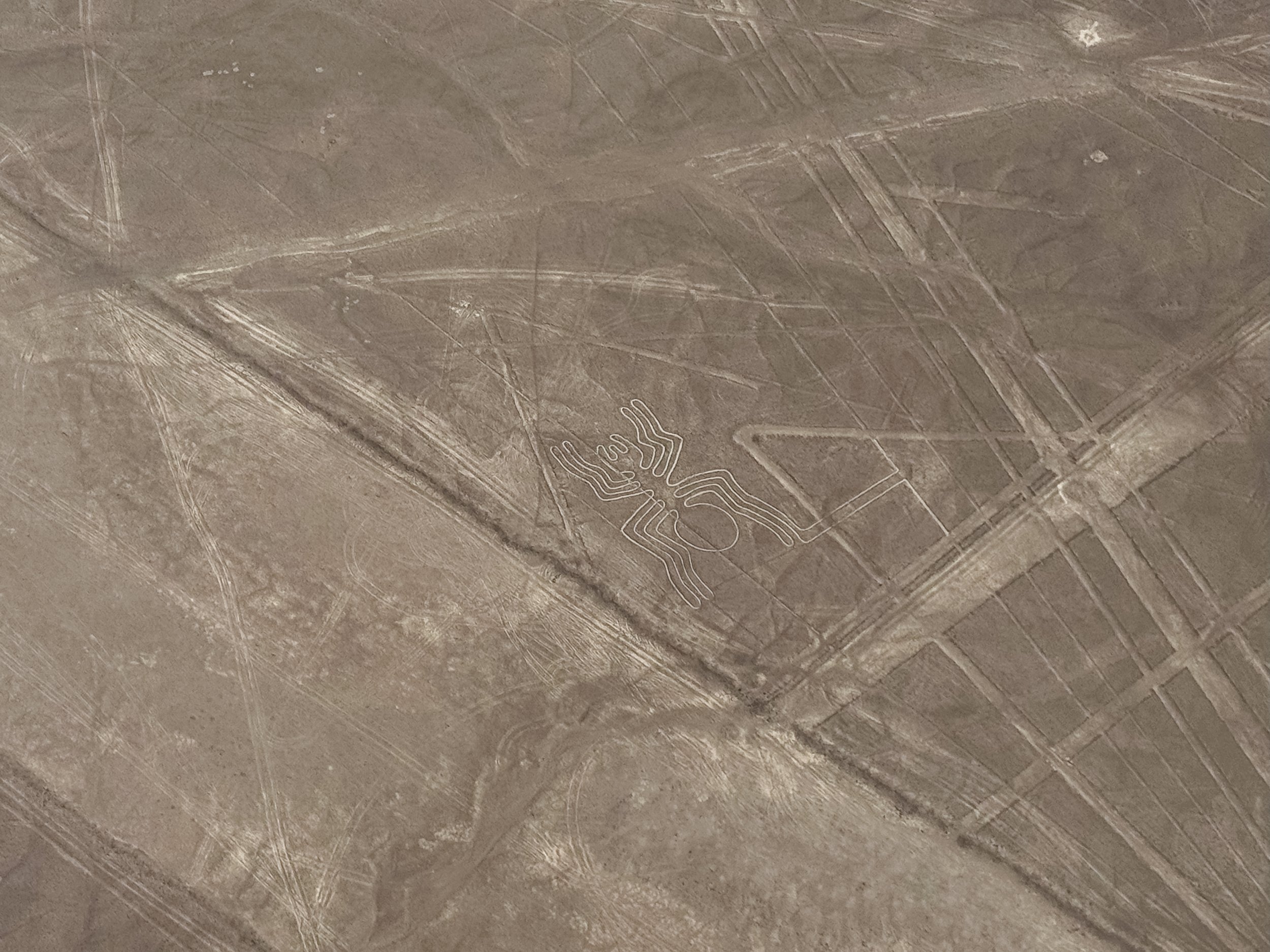
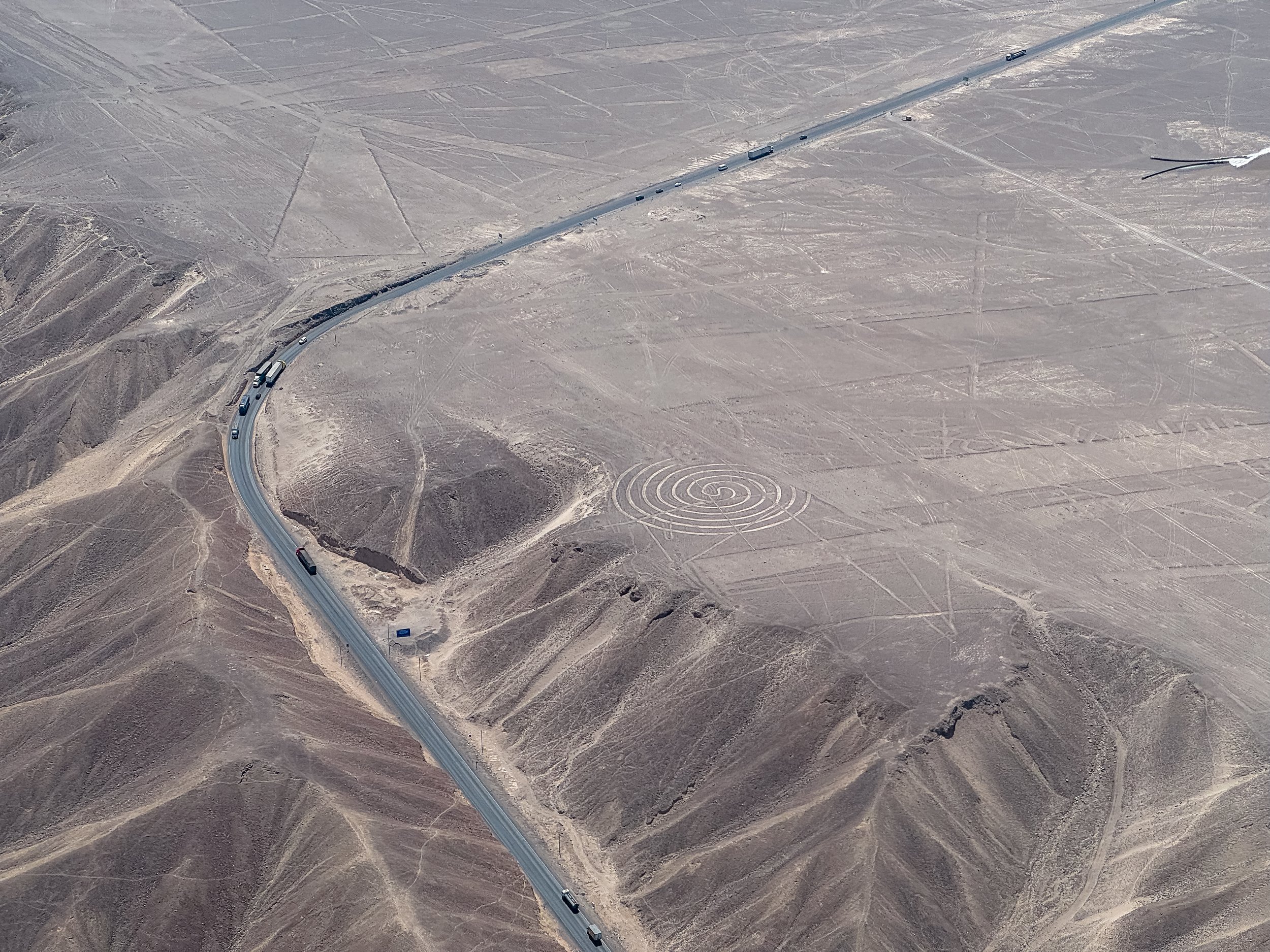
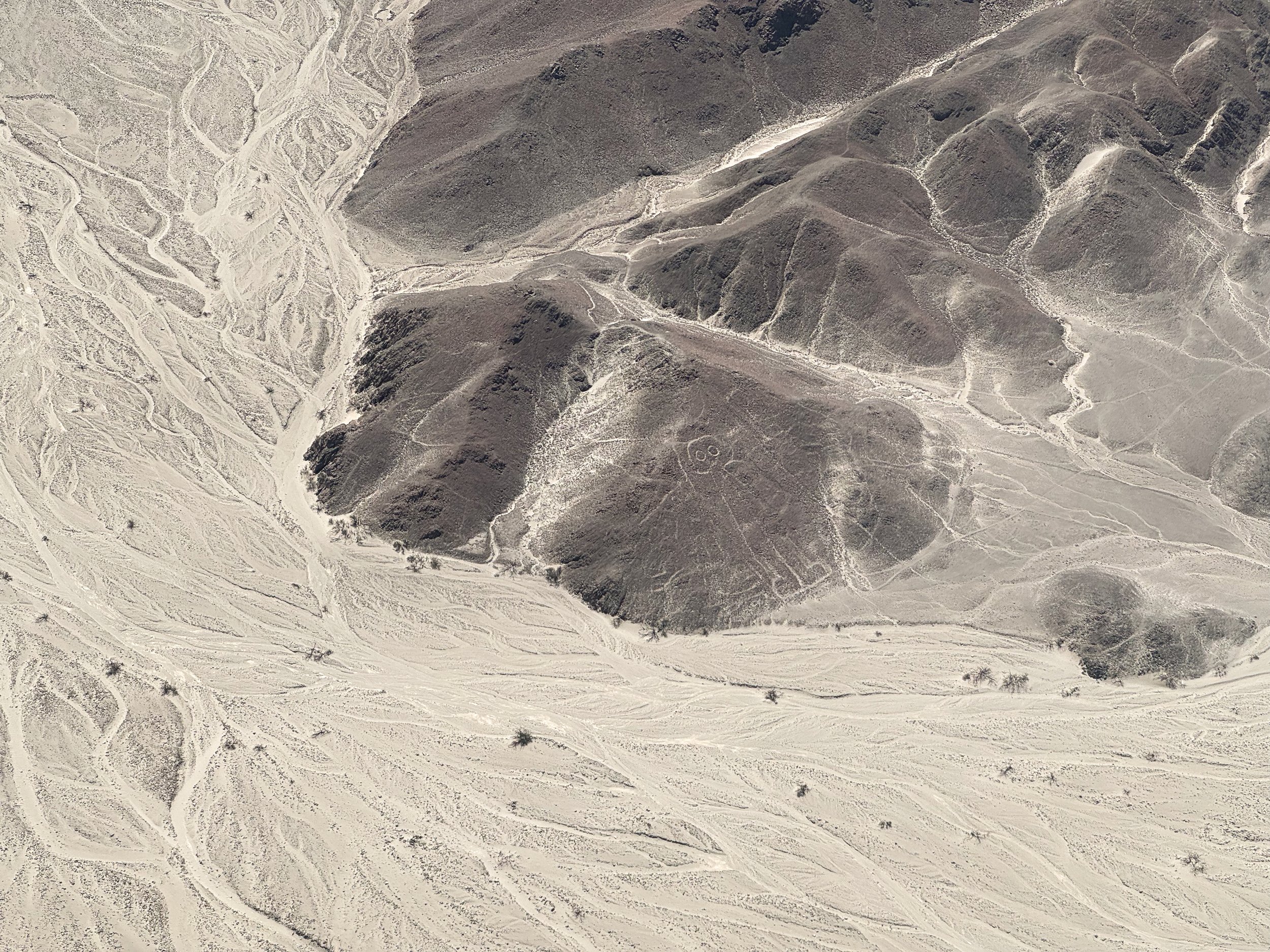
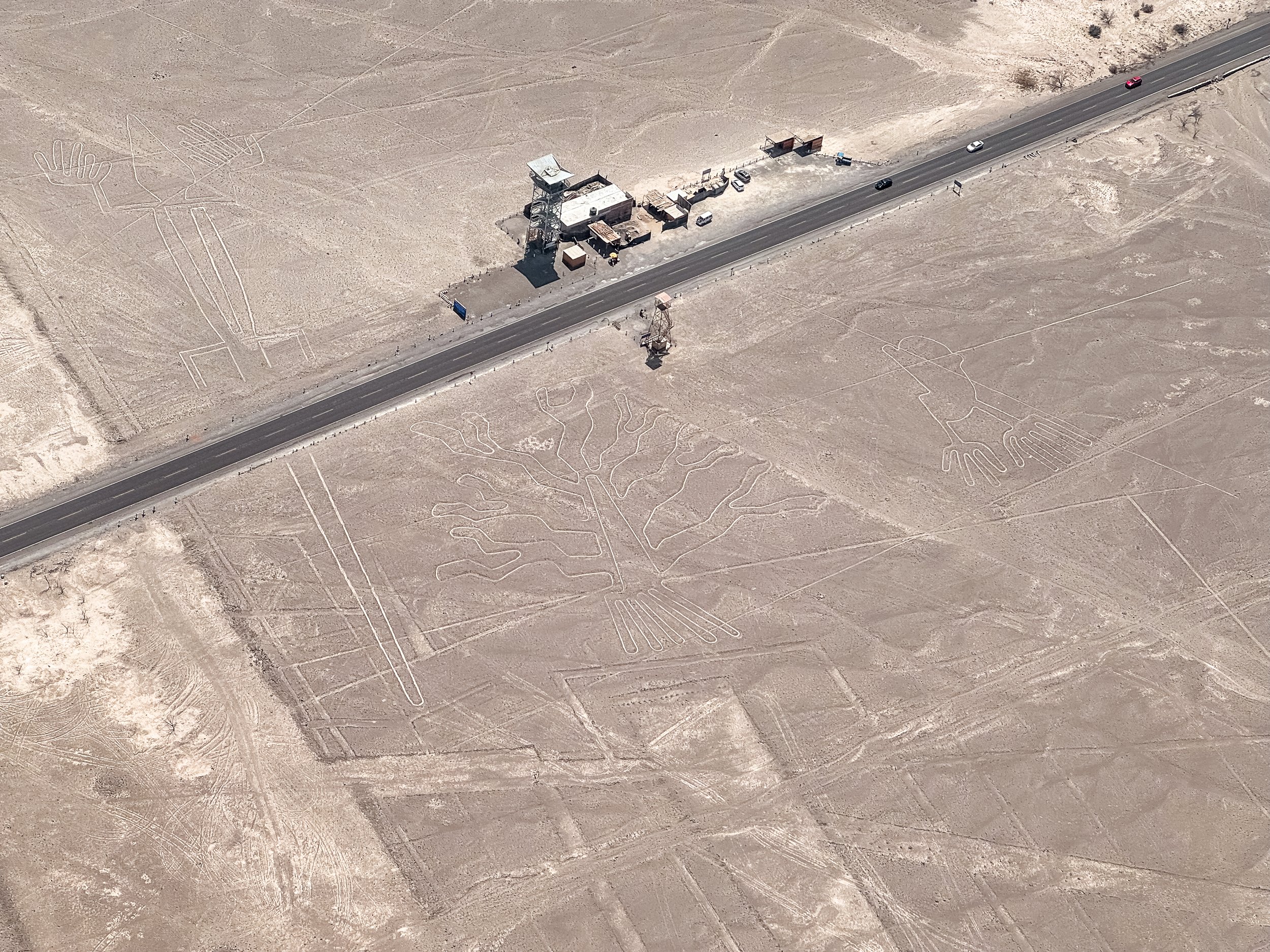
Nasca
Nasca is a Peruvian desert city famed for the archeological ruins and remains of the Nazca civilization including the Nasca Lines, ancient aqueducts and cemeteries with mummified remains.
The Nasca Lines
The Nasca Lines are some of the most significant archeological sights in Peru. Carved into the desert landscape by the Nasca people, the ancient geoglyphs depict animals, trees, people and mysterious shapes, some stretching hundreds of meters across. The lines can be observed from an observation tower or by flying above them.
Nasca Lines Flight. We took a flight over the Nasca Desert to view the Nasca Lines. During the flight, we flew over and circled many the remarkable geo-glyphs including the most iconic like the spider, hummingbird, condor and monkey. In addition, we took in views of the desert landscape, farms and vineyards, foot hills of the Andes mountains and world’s largest sand dune in the distance.
It is the best way to view a majority of the Nasca Lines though not the cheapest. The flight lasted about 30 minutes, costing $120 USD and 77 Sols in airport fees per person. The pilot circled about a dozen lines from both sides of the small plane as the co-pilot narrated. All 6 passengers, including us, had an equal opportunity to view most of the lines.
Nasca Tower. A roadside tower, about 4 stories tall, overlooking three of the Nasca Lines. One of a tree, hands and a salamander.
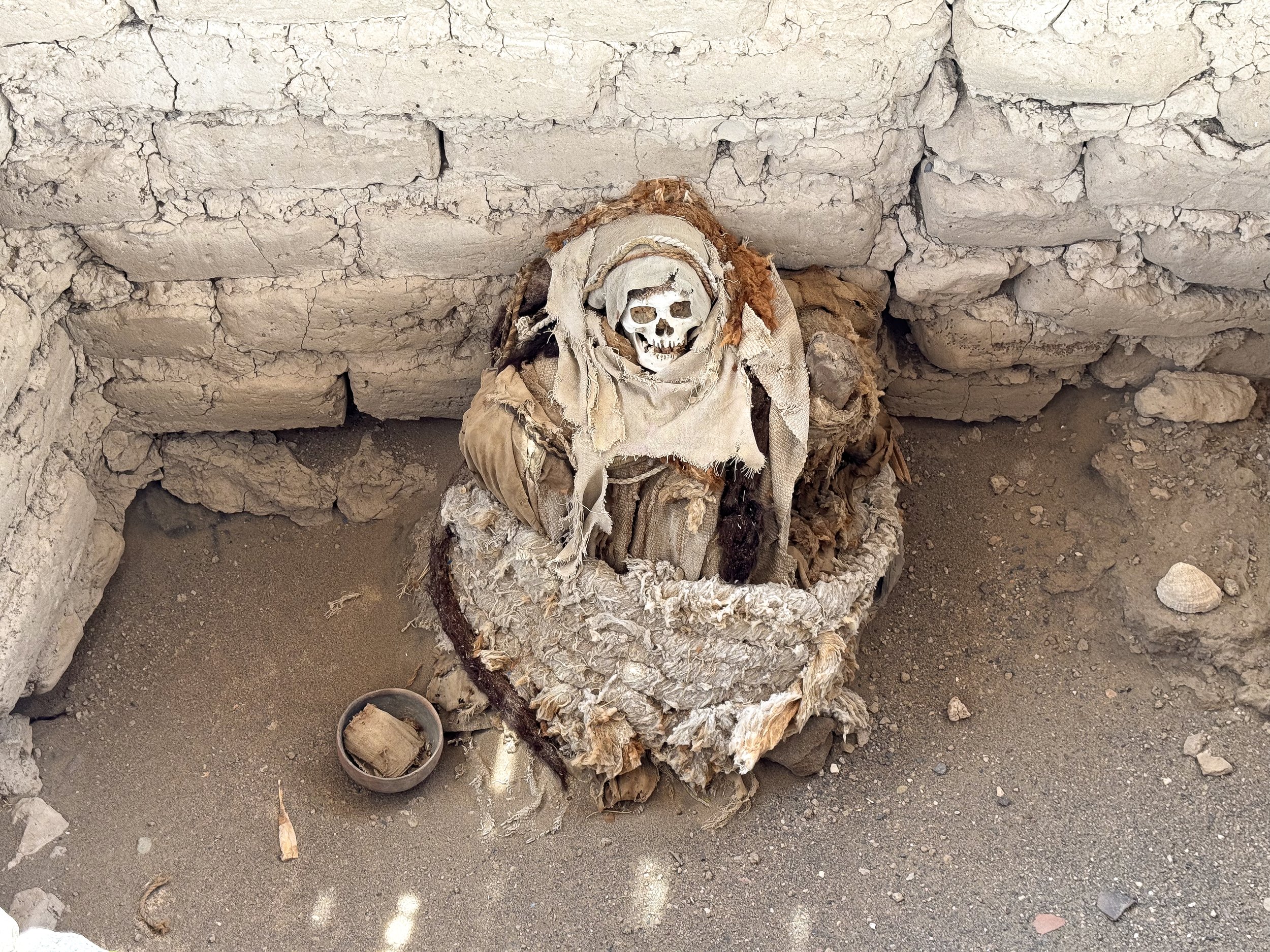
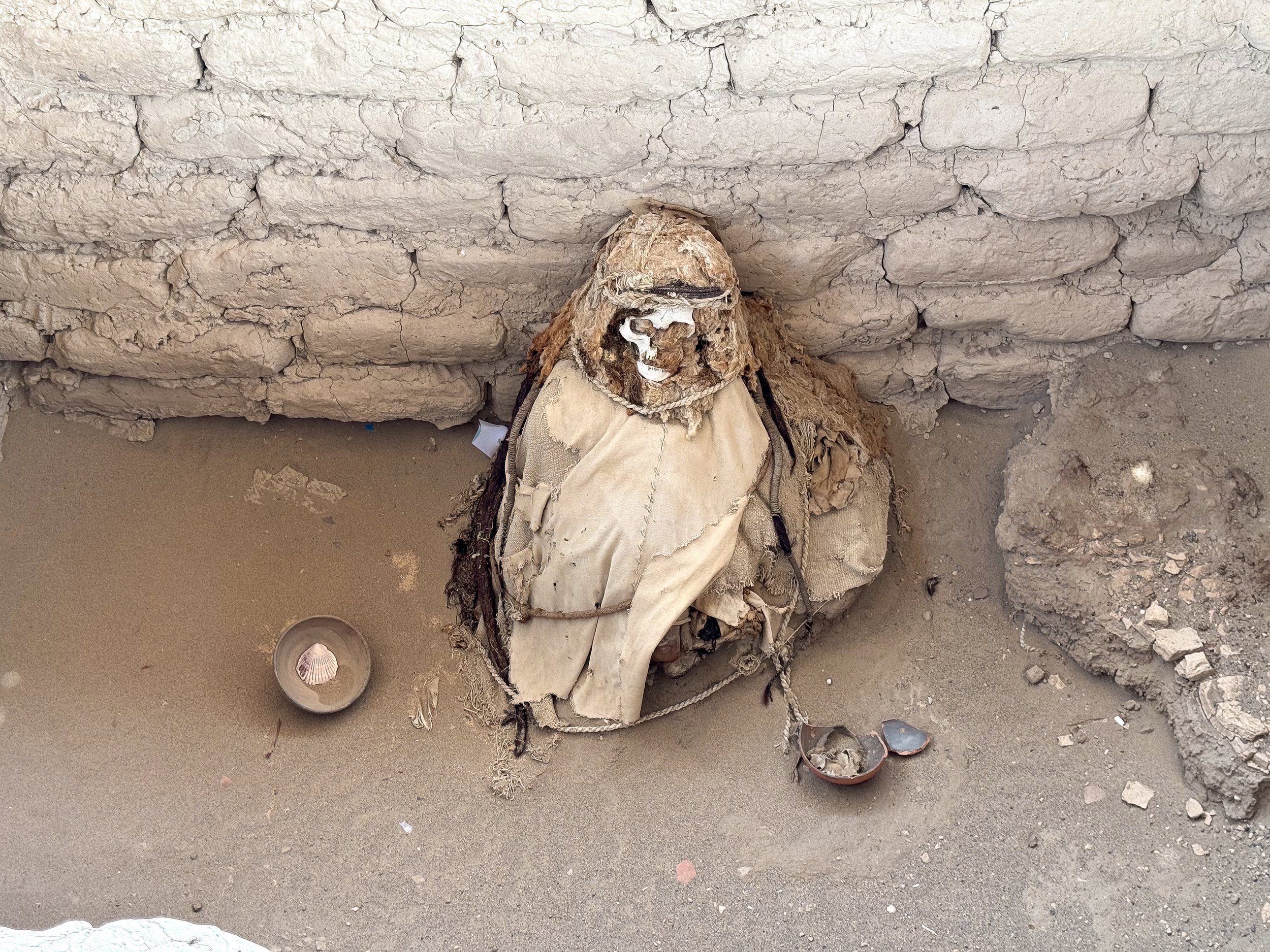
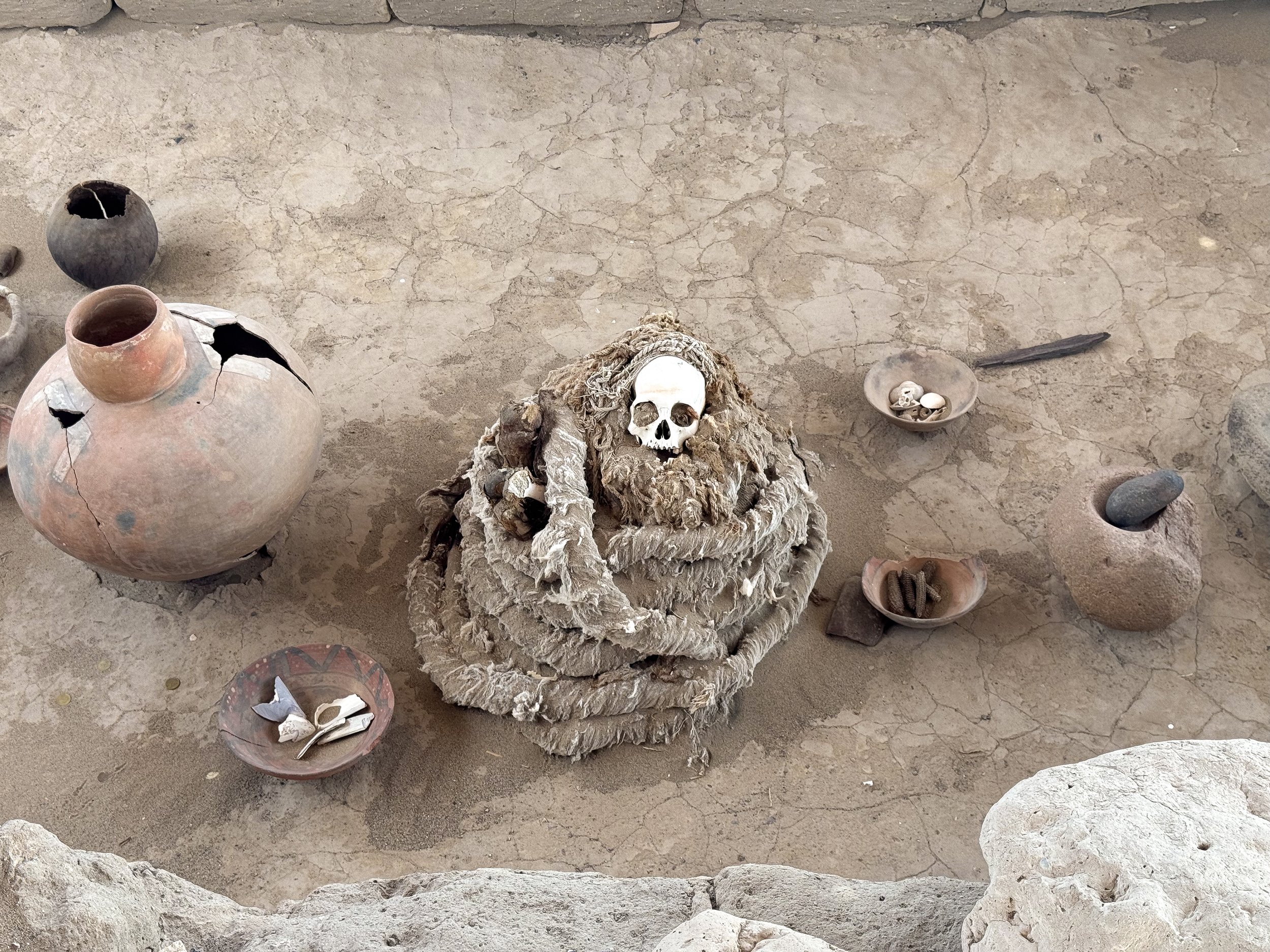
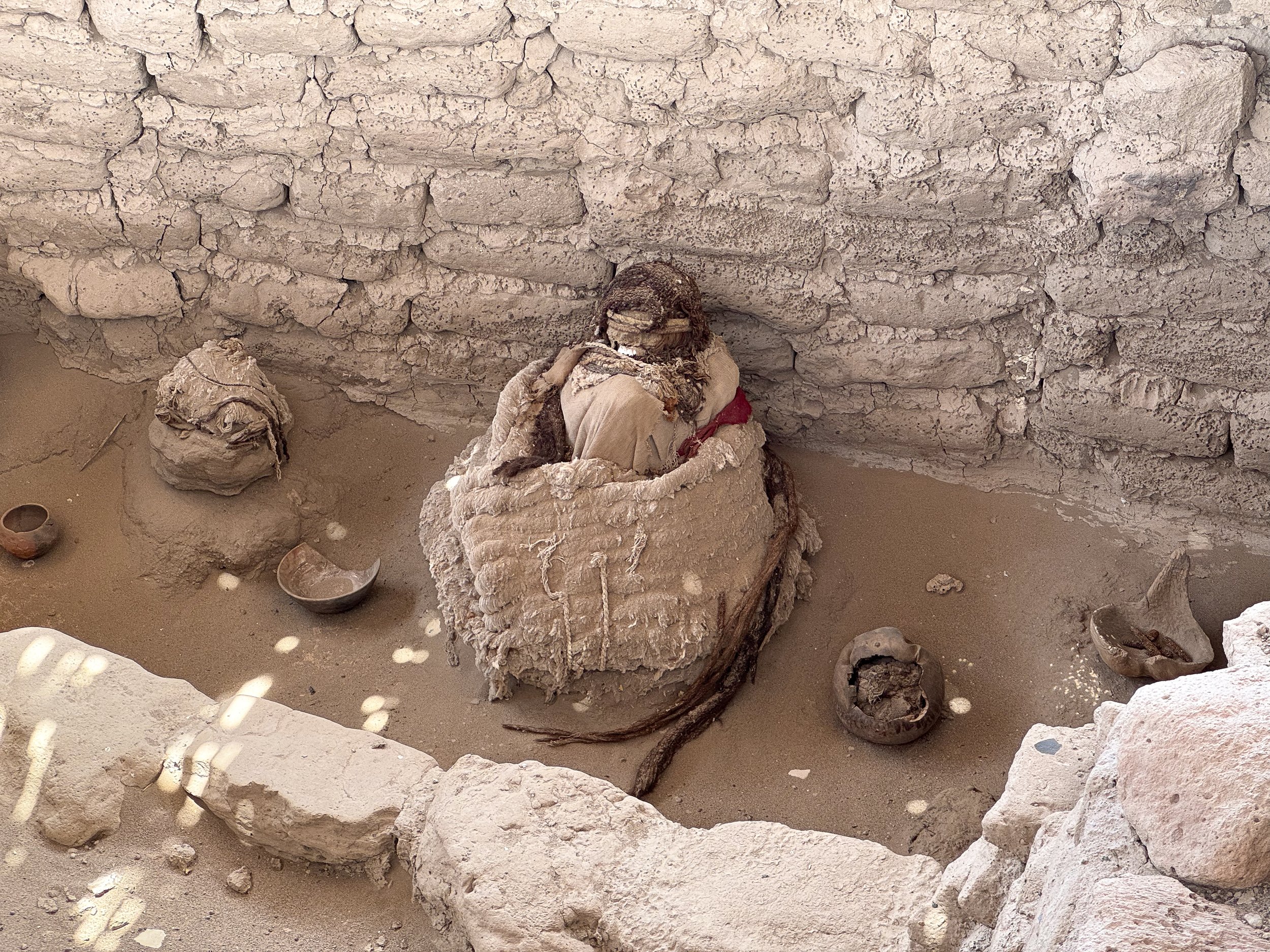
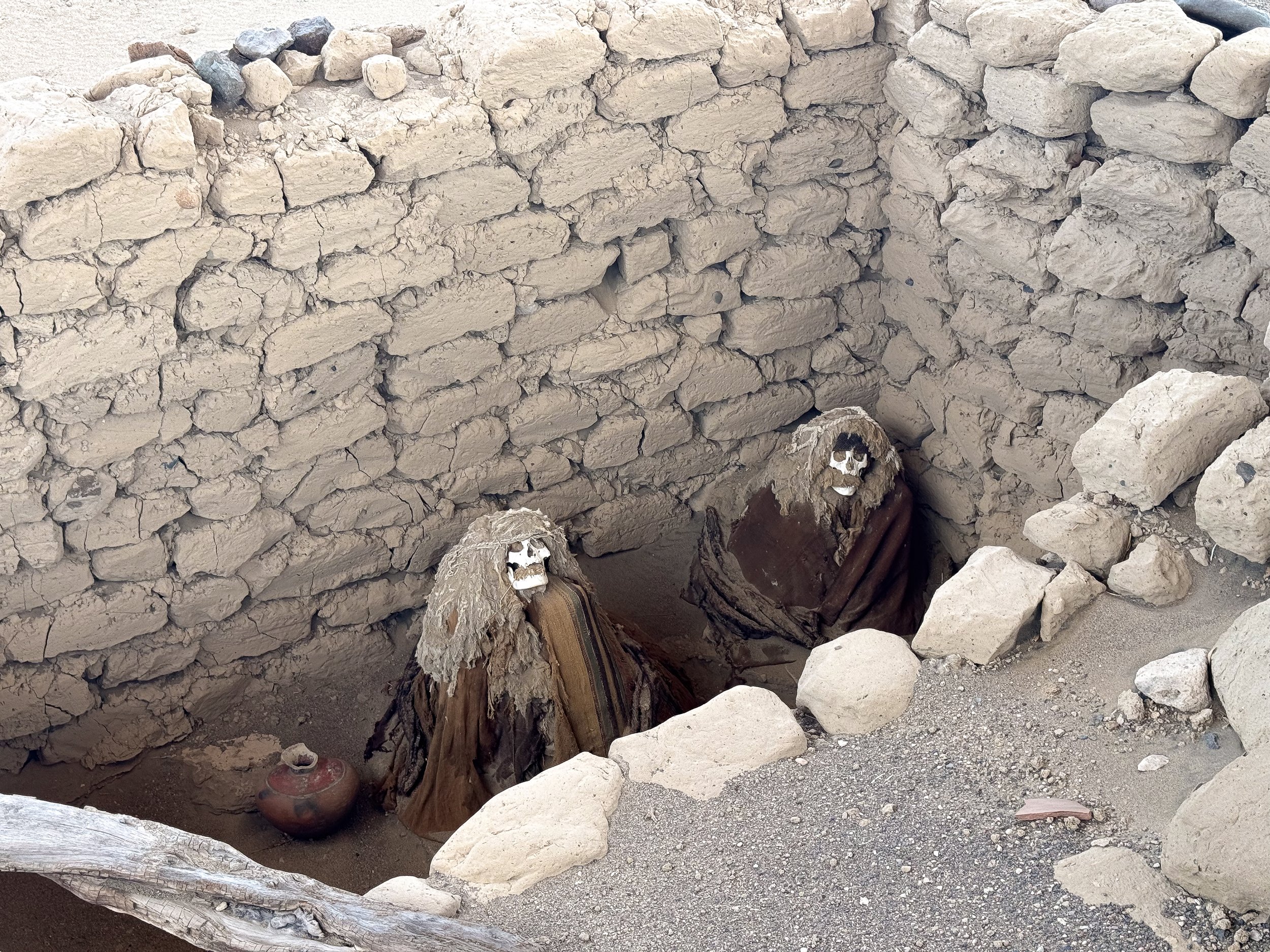
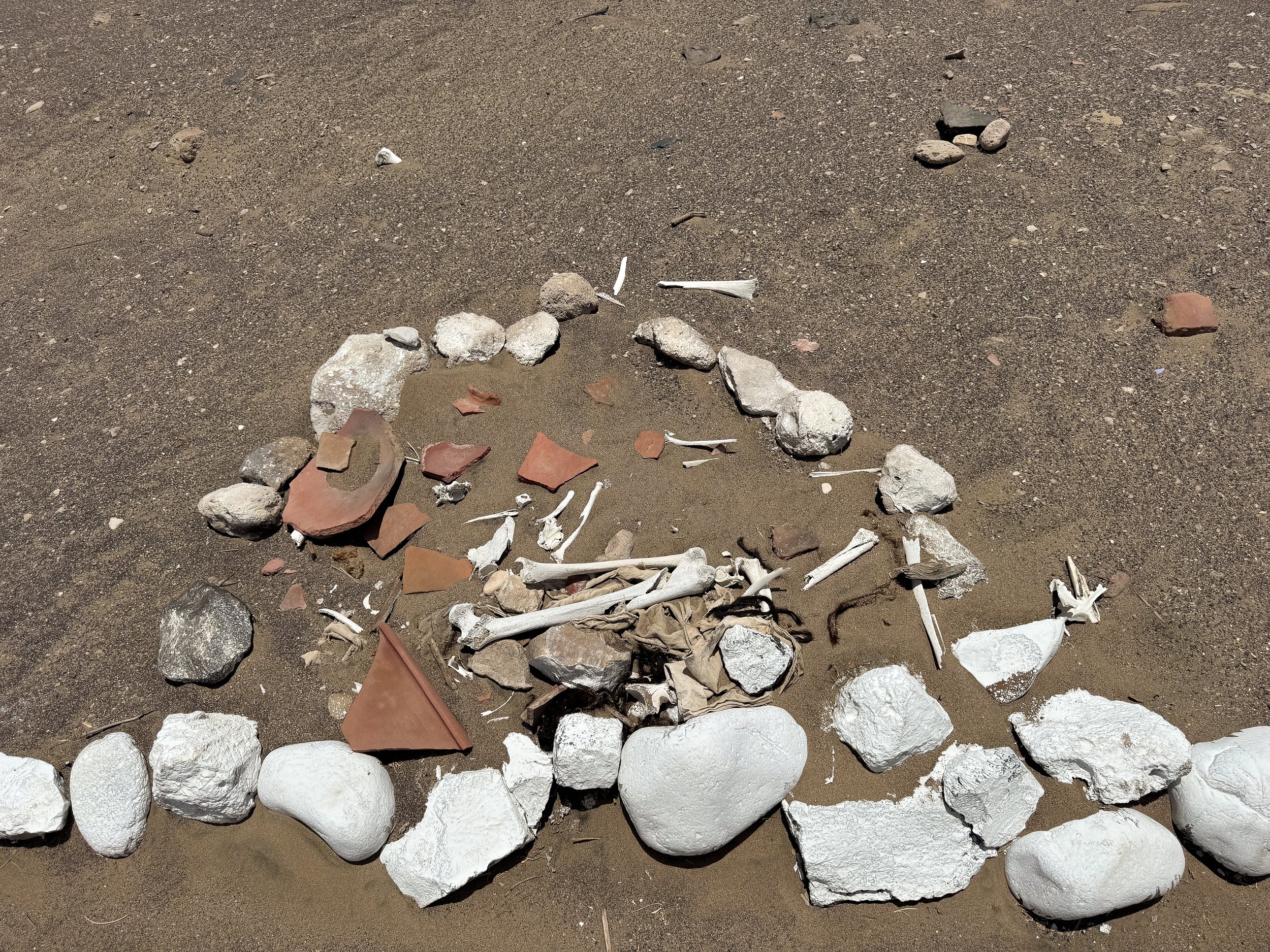
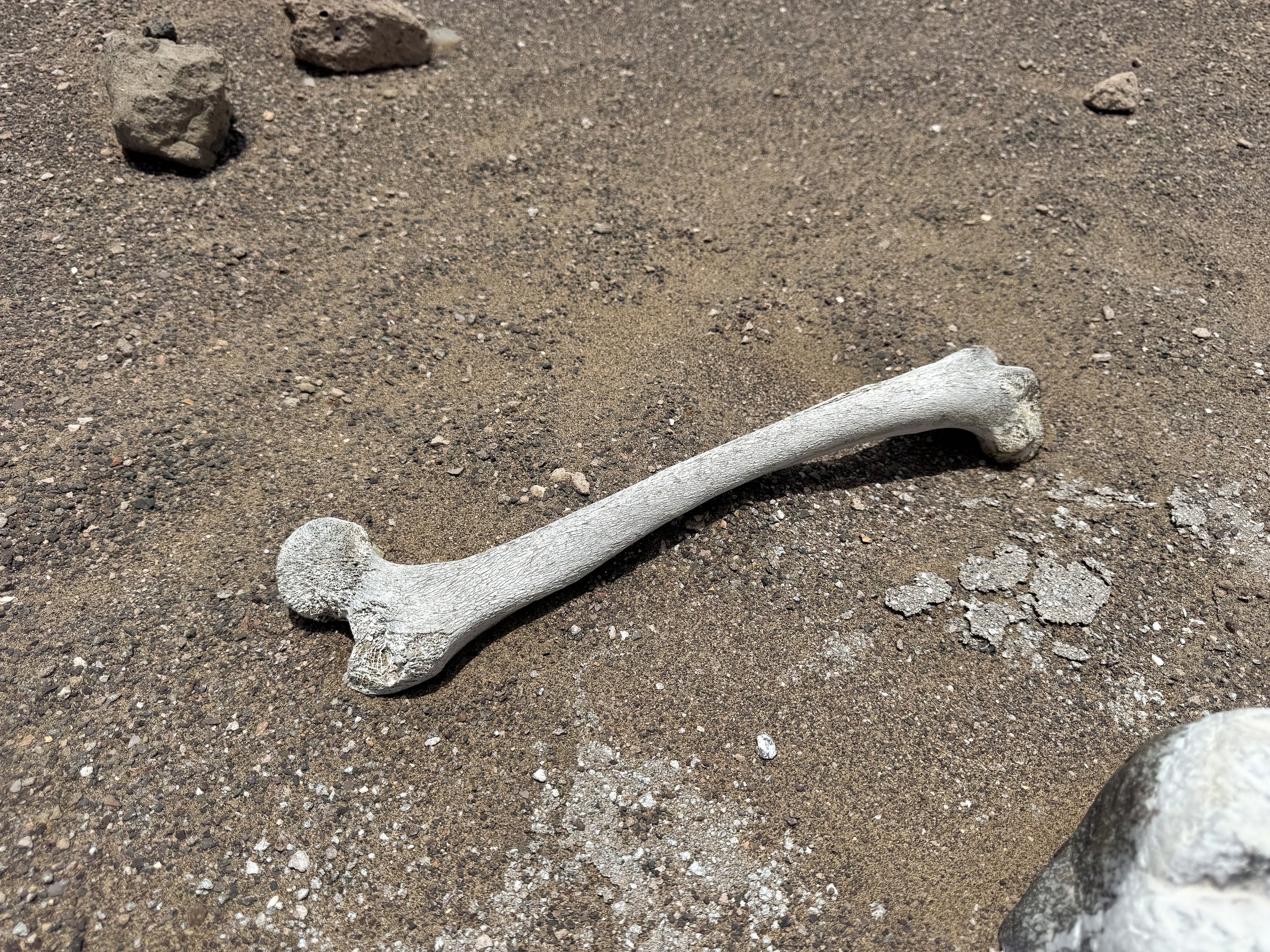
Sights
Cantalloc Aqueducts. A series of spiraled and circular stone aqueducts that drain into an underground canal for carrying water. Even during the peak of the dry season, the canal had flowing water while the adjacent river was completely dried up. They were build hundreds of years ago and are still in use today.
Los Paredones. The ruins of a terraced Incan city with trails leading past crumbling adobe brick walls, semi-restored buildings and broken fragments of ancient pottery scattered across the ground. It’s located about 20 minutes on foot from the Plaza de Armas. The ticket allows for access to other sights in the city including the Cantalloc Aqueducts.
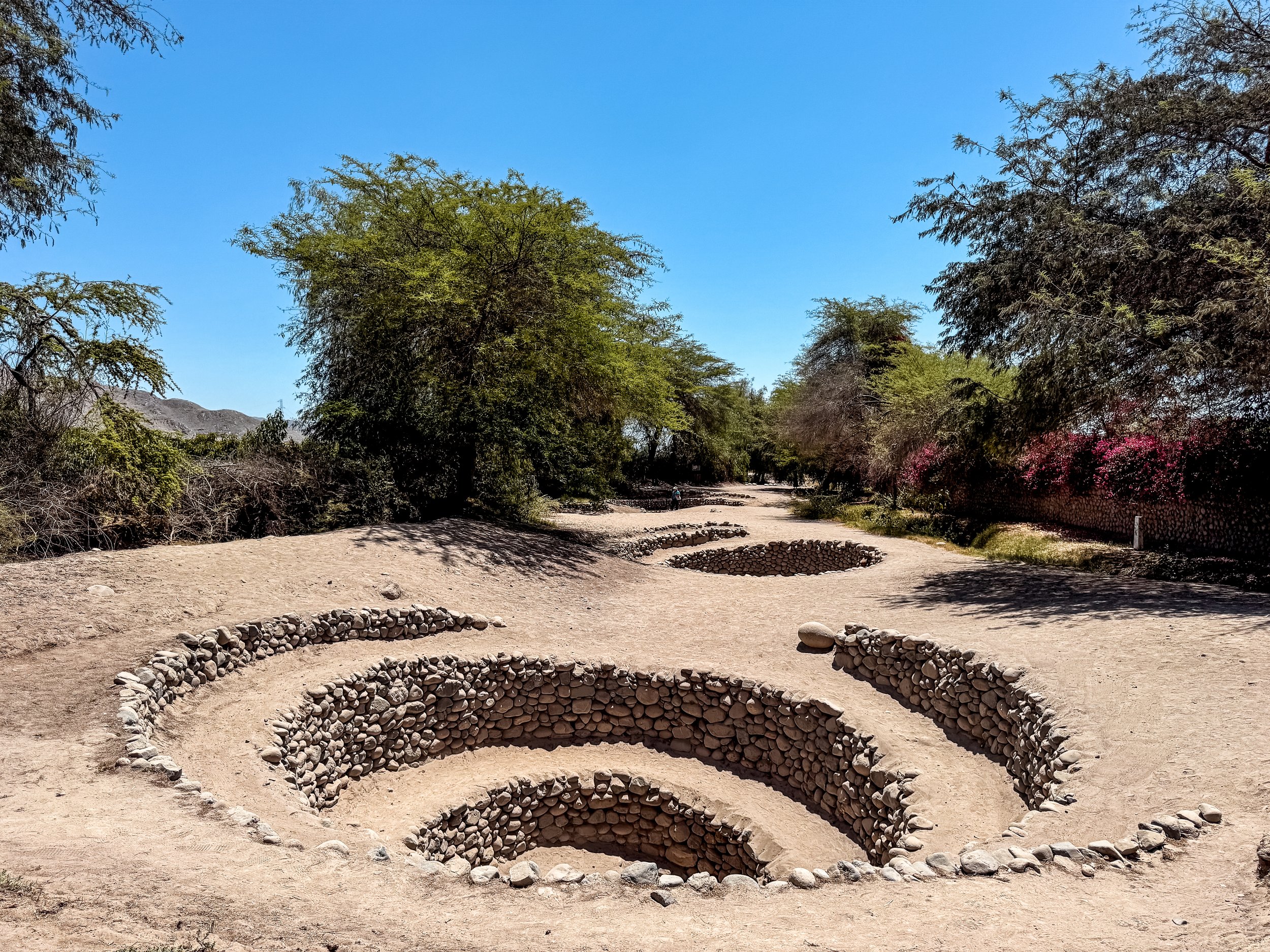
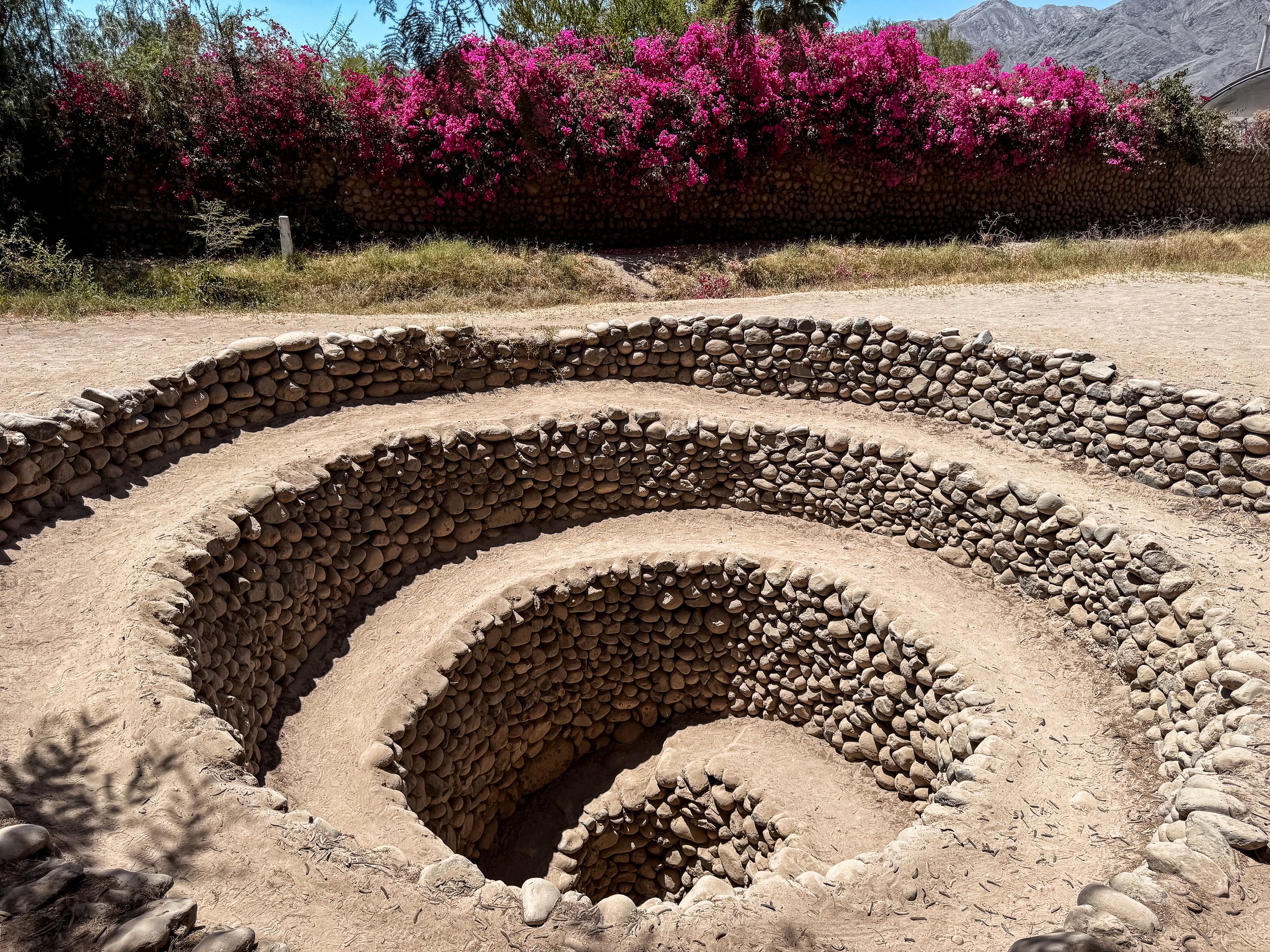
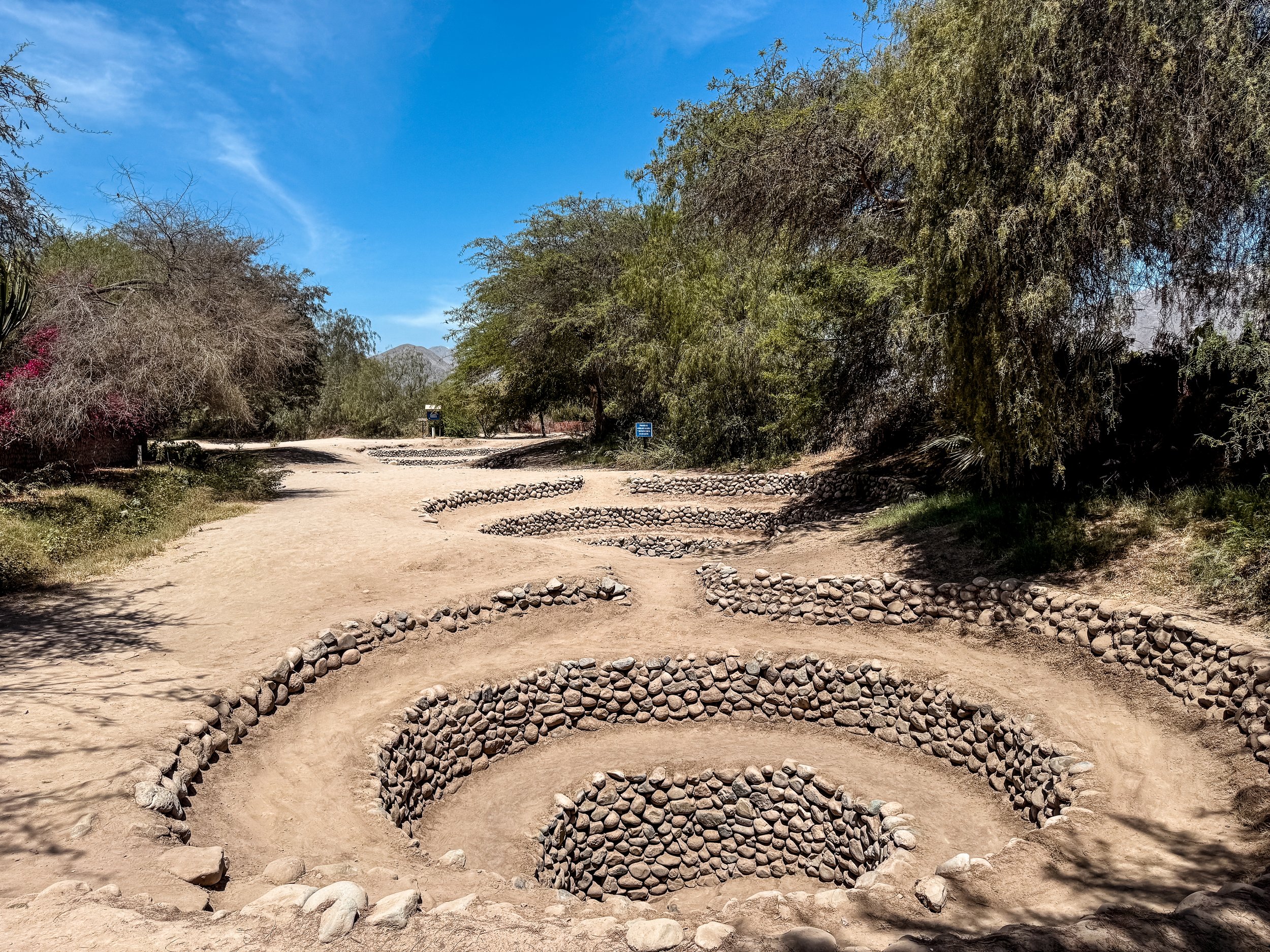
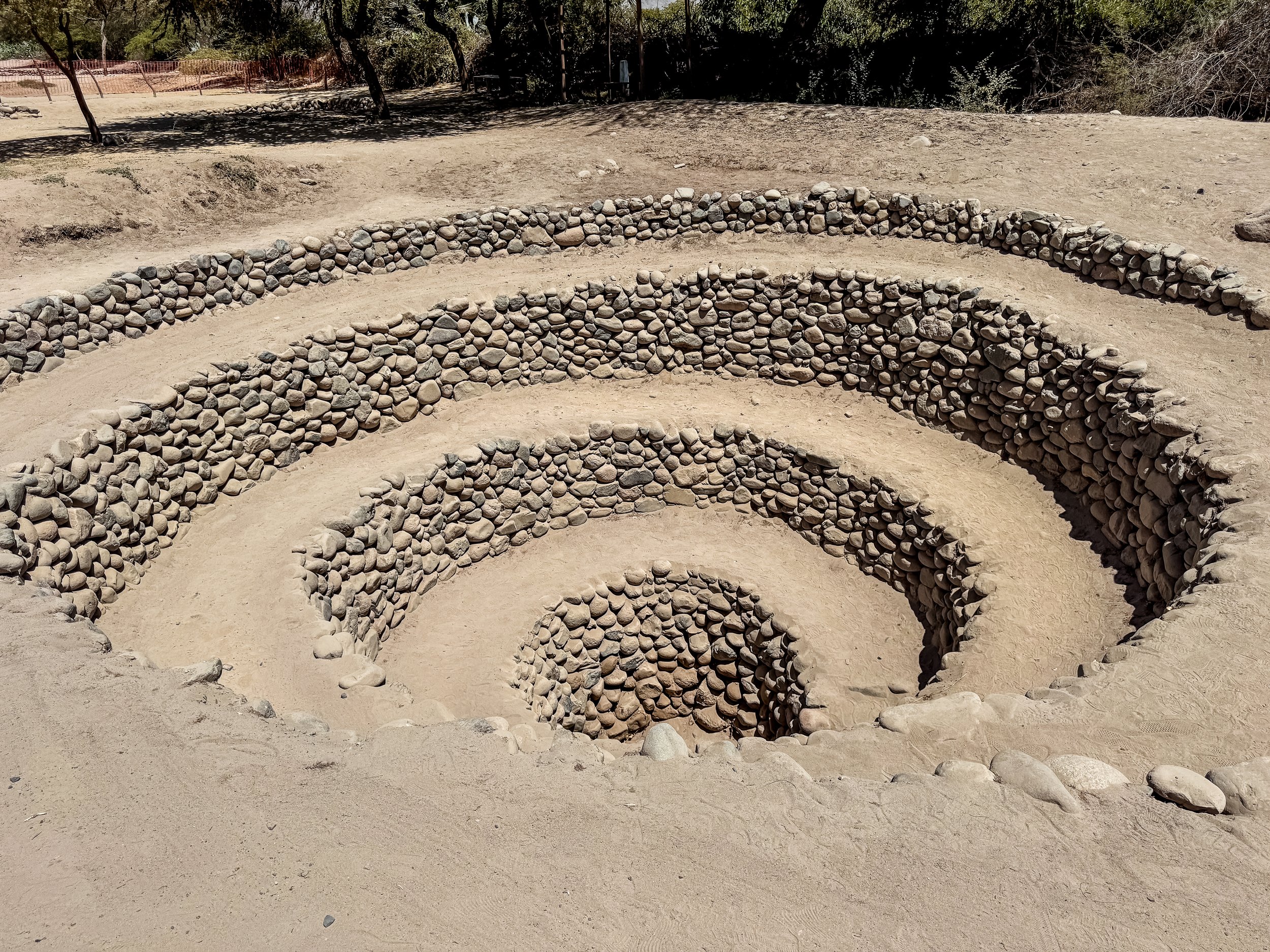
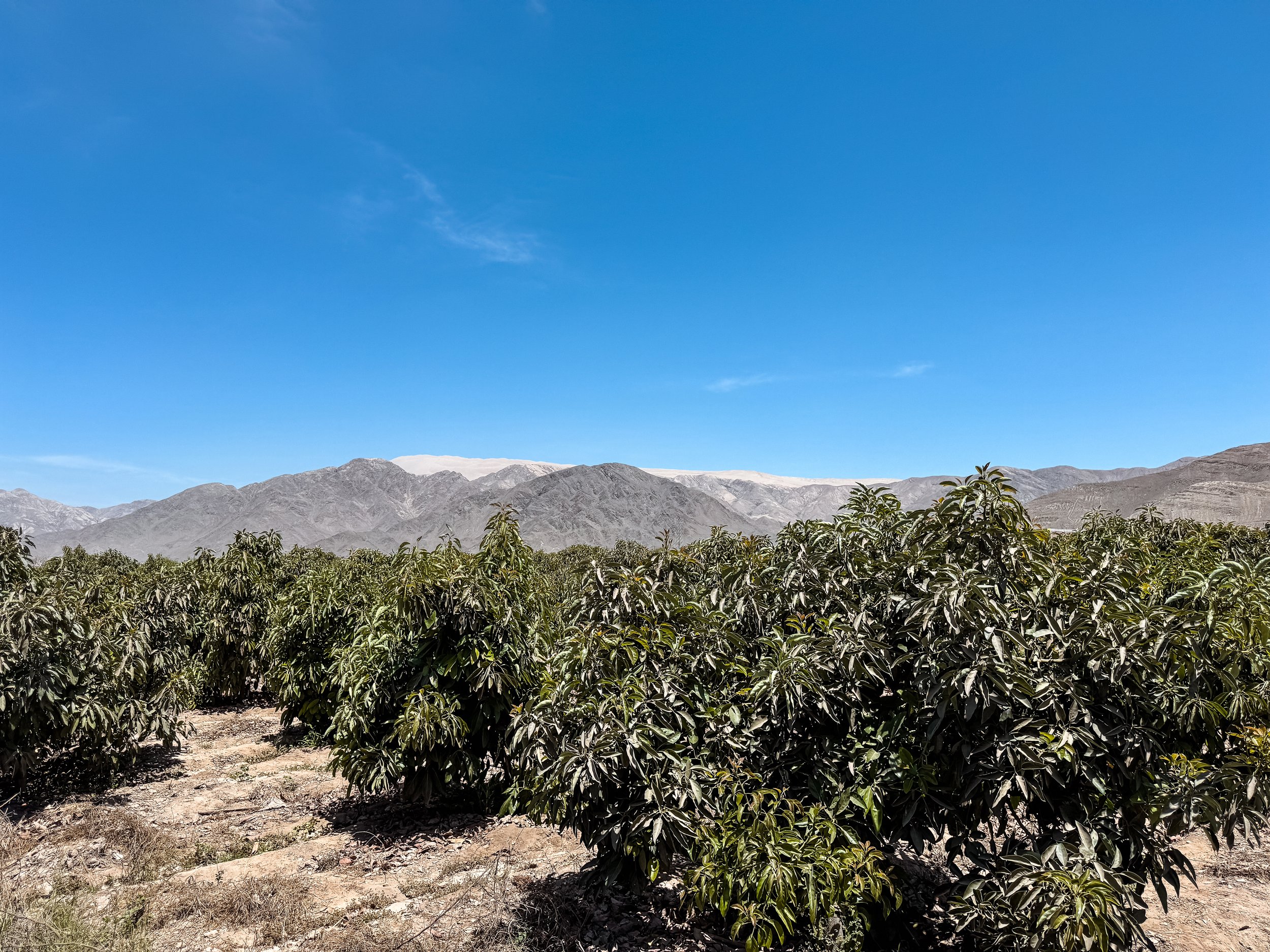
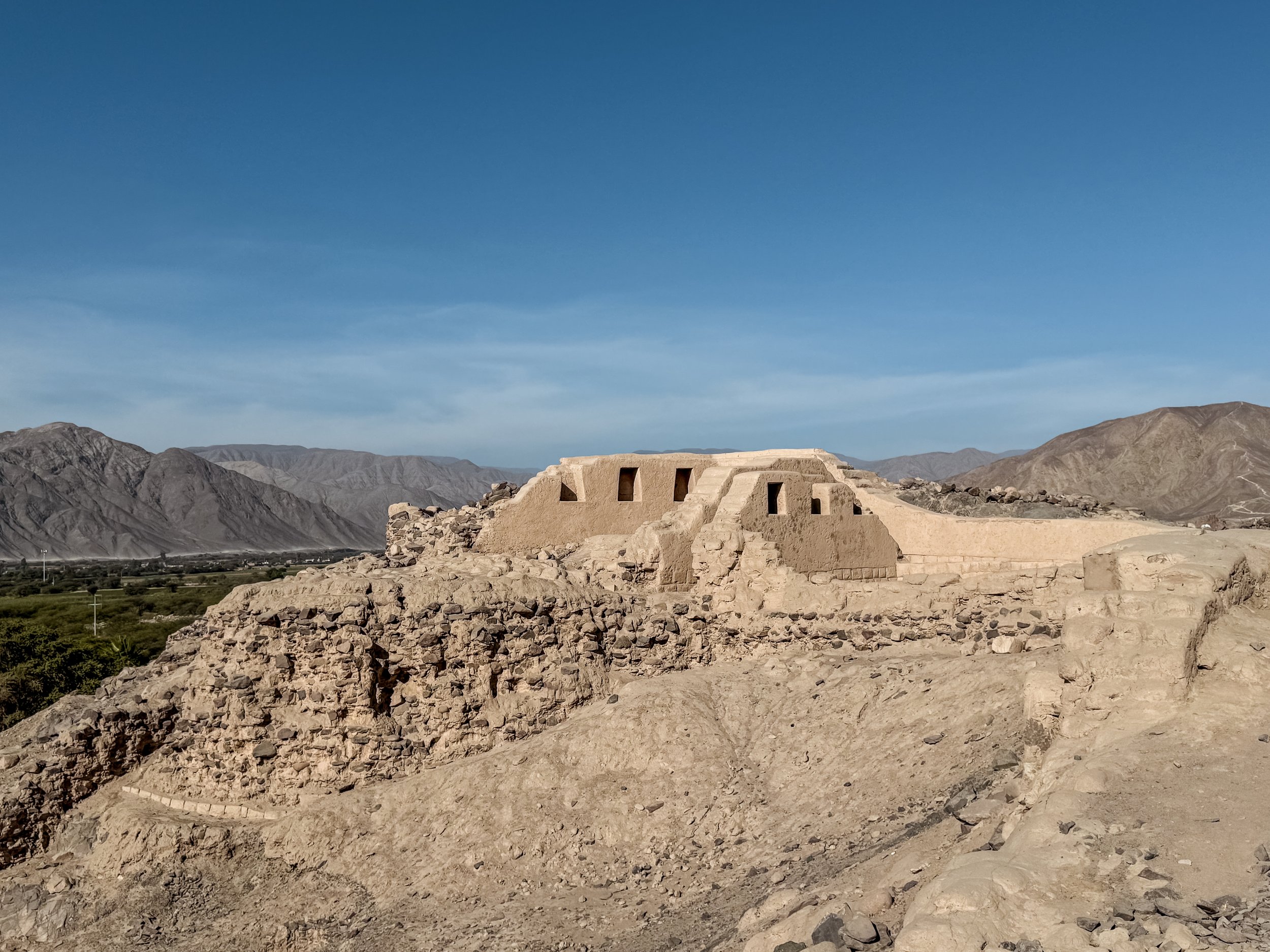
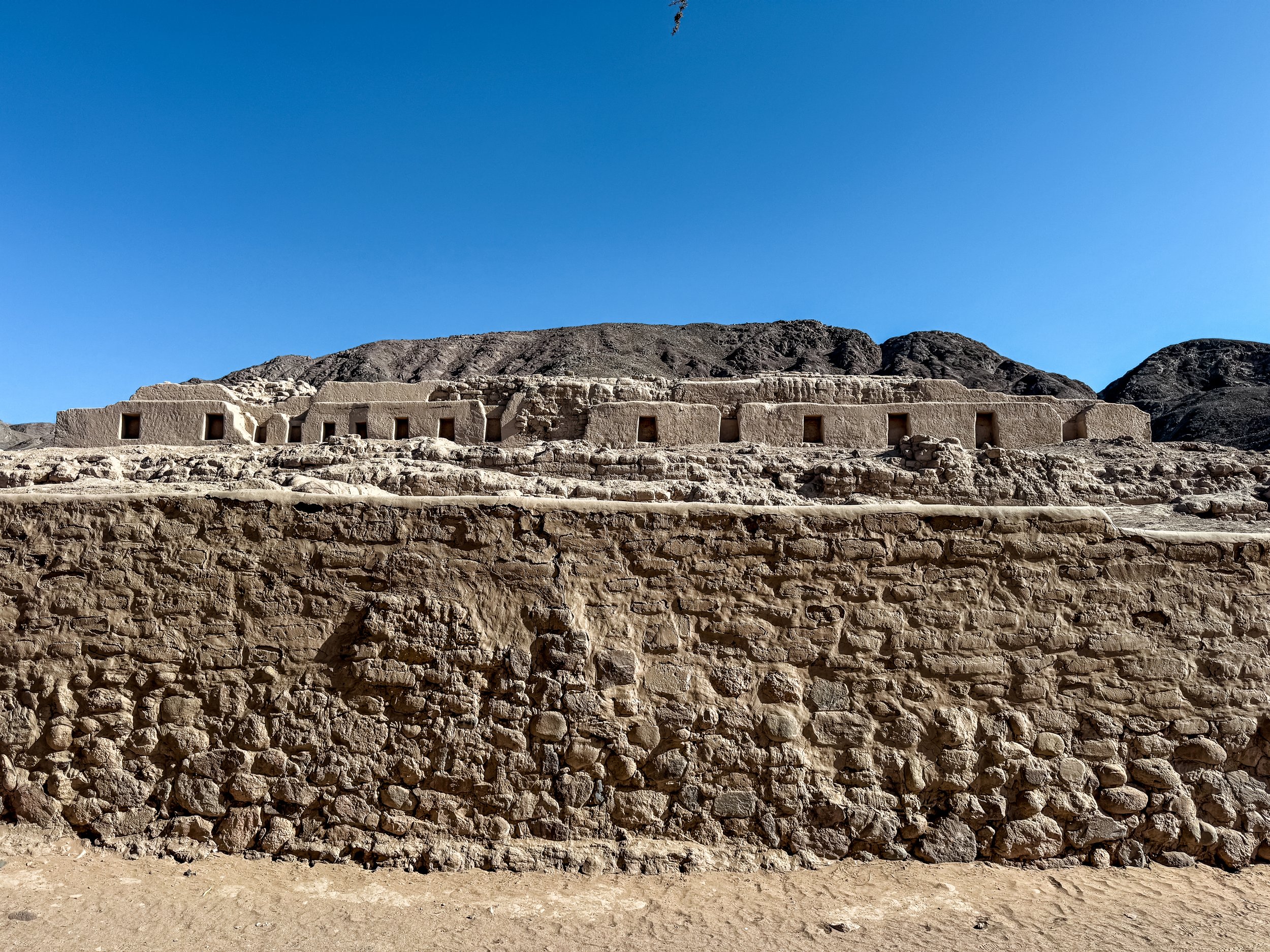
Cementerio Chauchilla. An ancient cemetery with the mummified and skeletal remains of the Nasca people dating back to 200 BCE. Inside the now exposed adobe brick tombs, bodies are buried facing east in an upright fetal position and wrapped in a basket of linens. Pottery holding objects meant for the afterlife are placed around them as their skulls stare outward baring lengthy strands of braided hair.
Due to grave robbing over the last century, bone fragments, torn linens and broken pottery from hundreds of tombs can be seen scattered across the landscape. Only the restored and preserved tombs are on display for viewing. The cemetery is located 45 min by car south of the city of Nasca.
Plaza de Armas. The tree lined central plaza with fountains, benches and artwork depicting the Nasca Lines. It’s a popular spot for families to hang out at night.
Feria de Comerciantes de Nasca. A traditional Peruvian fruit, vegetable and flower market with tables of vendors selling locally grown produce including avocado, blueberries, cherimoya, star fruit, passion fruit, giant squash, peanuts, farmers cheese, breads and some meats.
Where to Eat & Drink
Killa Cafe & Bar. A restaurant and cafe with coffees and breakfast dishes. We stopped in shortly after arriving in Paracas on the morning Peru Hop bus from Lima.
Mamashana. A Peruvian restaurant with traditional dishes like Papa a la Huancana, Lomo Saltado, Chupe de Pescado and Potato Causas.
Mom’s Cafe. A café with empanadas, baked goods, coffees, sodas and beers. It’s a pick up and drop off location for the Peru Hop bus in Nasca.
La Casa del Pisco Garcia. A very local bar that serves various Piscos by the glass, carafe, full bottle or in cocktails.
D’Gula Restaurant. A Peruvian restaurant serving traditional dishes like causas, parihuela, lomo soltado and pasta cooked in huacaillna sauce as well as Peruvian wines.
Street Tamales. The city comes to life at 8am with the call of the Tamale Guy driving by announcing “tamales, tamales, tamales” from a speaker in his car. We bought some wrapped in banana leaves, made with corn masa, spices and heart of palm.
Getting Around Nazca
On Foot. Upon arrival in Nasca, the best way to see the city and get around to nearby sights is on foot.
By Taxi. For further away sights more than 30min on foot, we opted to hire a taxi. Taxi drivers are plentiful across the city and should cost 10-20 Sols for short distances and around 50 Sols for larger distances.
Peruvian Cuisine
With access to the Pacific Ocean, cuisine along the coast of Peru is seafood heavy with many other dishes made from Peruvian potatoes and corn as well as cocktails made with Pisco.
Civiche. A Peruvian staple typically made from raw fish cured in lime juice with onions, cilantro, sweet potato and cilantro. Try it with Leche de Tigre, a spicy marinate often served in ceviche.
Jalea. Fried mixed seafood topped with pickled red onions, cilantro and tomato.
Parihuela. A fish stew made with white fish, shrimp, octopus and squid in a tomato broth.
Lomo Soltado. A stir fried and flamed beef dish cooked in a pan at high heat with onions and soy sauce. It can also be made vegetarian with bell peppers, eggplant or tofu.
Potatoes. Peru is known for having thousands of variety of potatoes. They’re served mashed in causas, fried and in soups & stews.
Causa. A pureed potato dish layered with fish, meats or veggies served cold. It’s a common appetizer at restaurants across the country.
Papas de Huacallena. A sliced potato dish covered in Huacallena sauce and served with sliced boiled eggs and olives.
Huacallena Sauce. A savory Peruvian sauce made from yellow peppers and cheese. It can be served hot or cold.
Choclo con Queso. Boiled Peruvian corn wrapped in a grilled piece of Peruvian cheese.
Canchas. Toasted or fried Peruvian Corn served as a snack at restaurants or garnish in various dishes.
Pisco Sour. Peru’s national drink made from Pisco, lime juice, simple syrup and egg whites all mixed together.
Chilcano. A Peruvian cocktail made with Pisco, lime juice and ginger ale. We ordered the traditional version and one with passion fruit multiple times.
Inka Cola. A yellow soda popular across Peru with a tuti fruity flavor. Coming from the Midwest, it tastes similar to Faygo Rock n Rye.
Cusquena. One of Peru’s national beers easily identifiable by its bottle cap with Machu Picchu on it and a bottle embossed in Incan stone work. It comes in three varieties, Dorado (Golden), Wheat and Negro (Stout).
For Next Time…
Having visited Peru twice for a total of 4 weeks, we continue to discover more places to visit and sights to see. On our third trip, we hope to venture deep into The Peruvian Amazon to the cities of Iquitos and Puerto Maldonado as well as some national parks like the Tambopata National Reserve and Bahauja-Sonene National Park.




